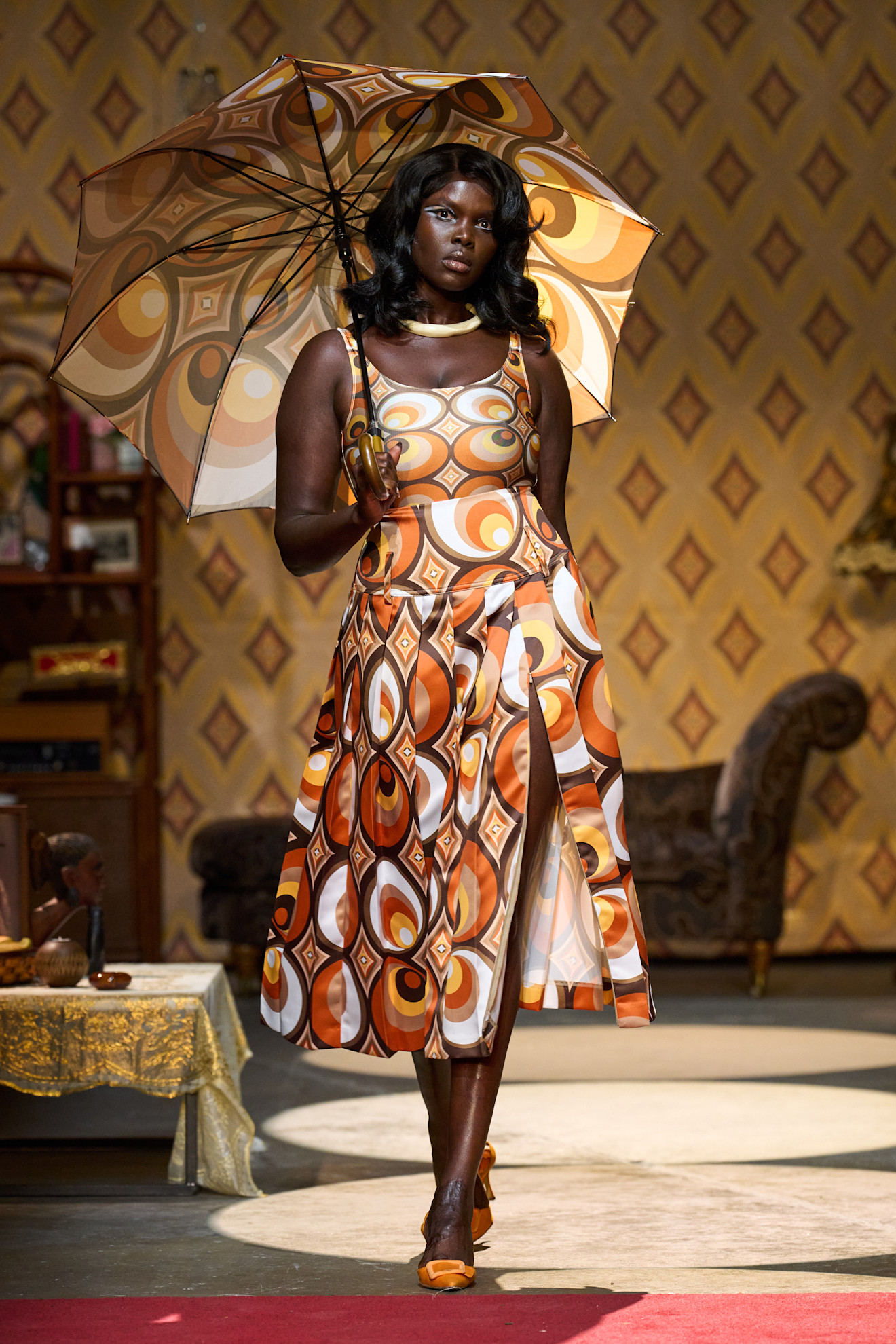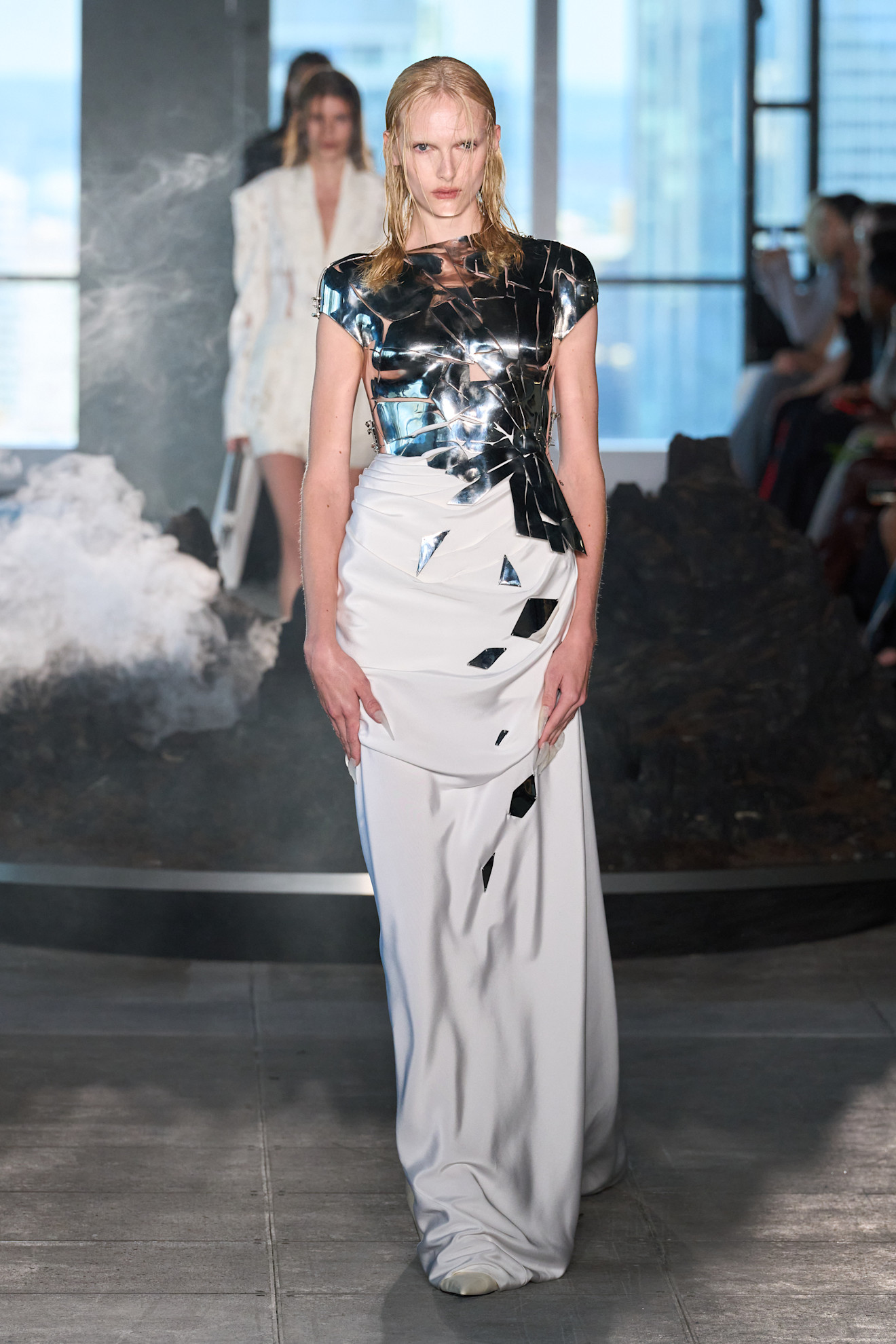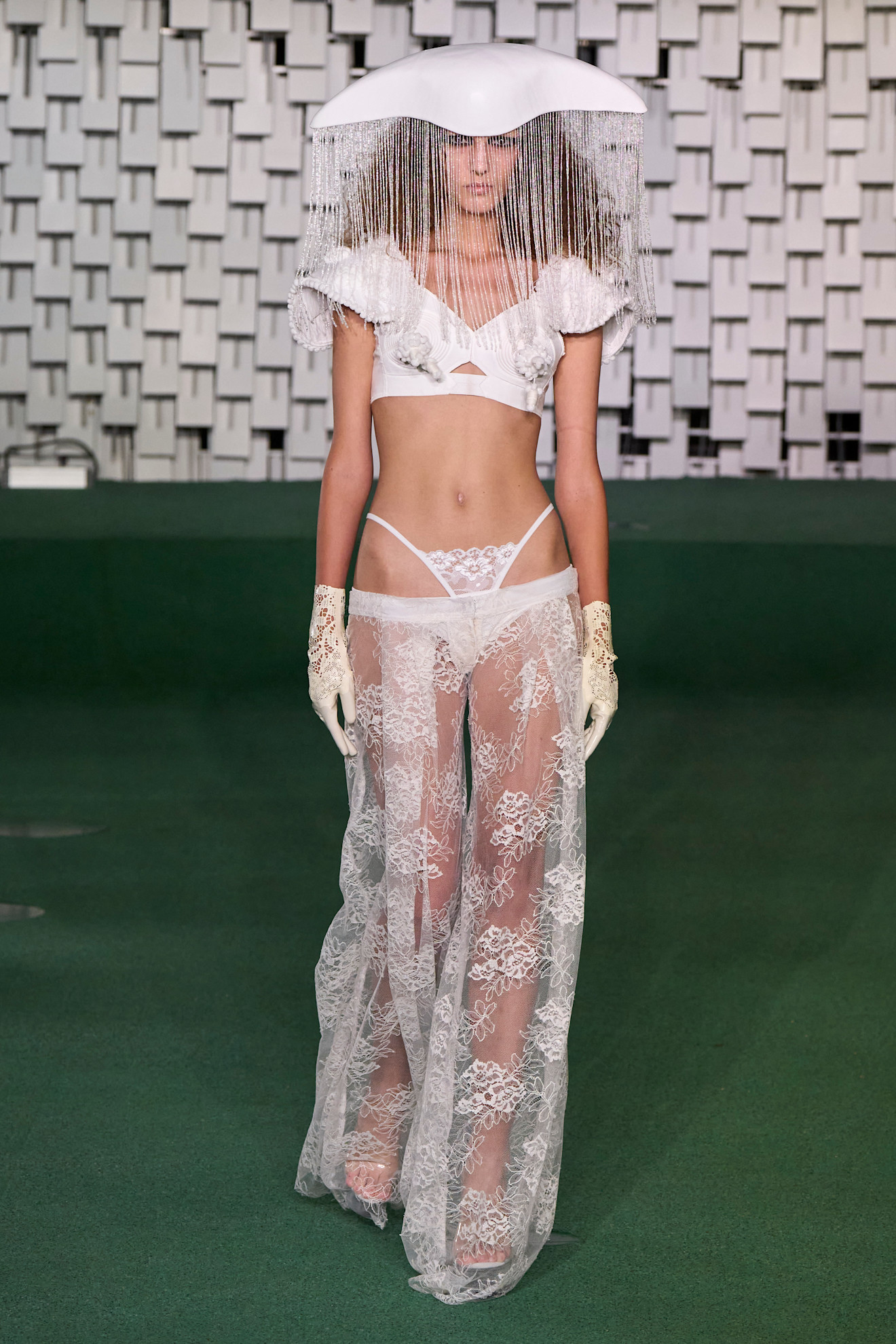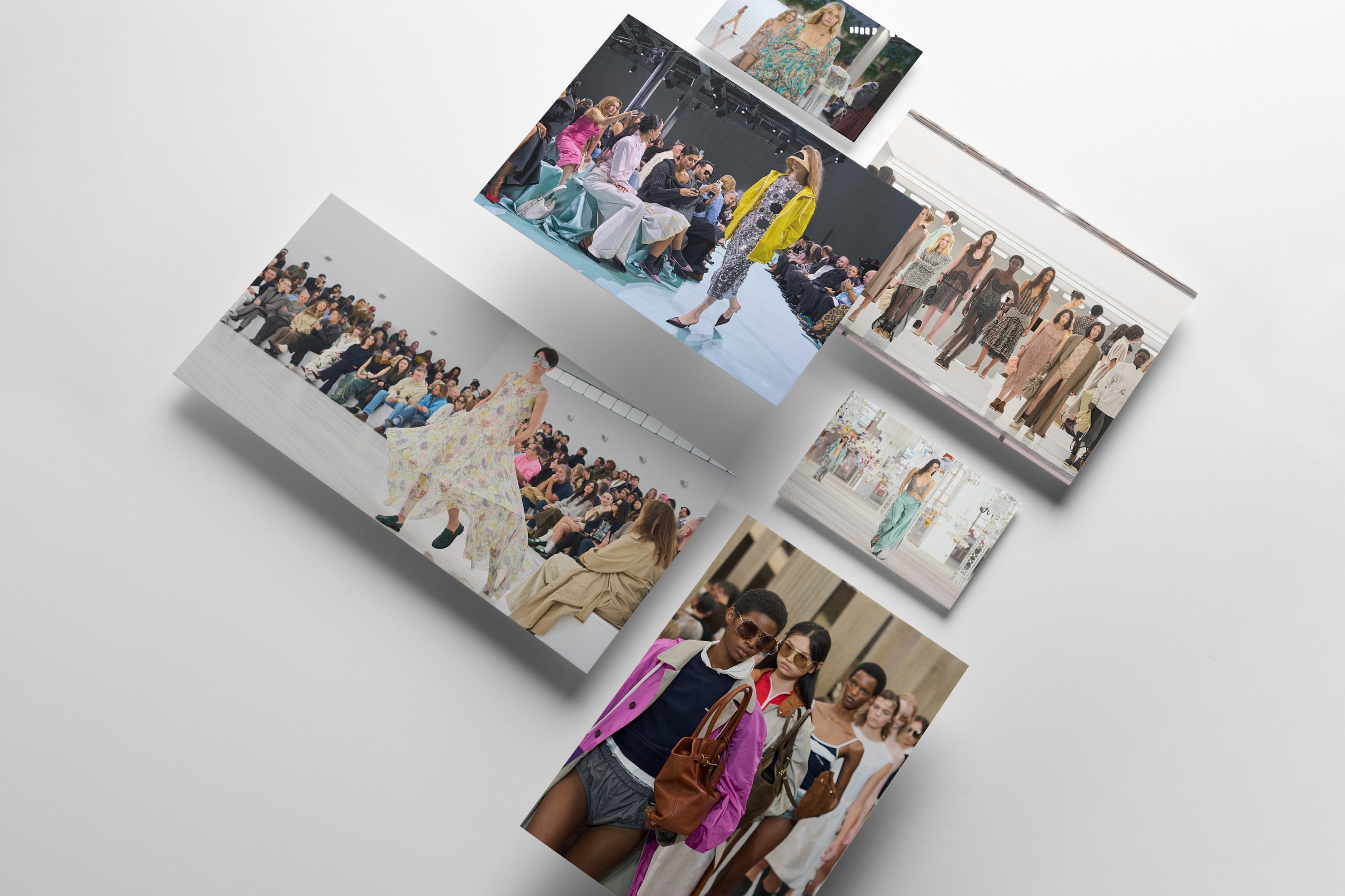Hope Springs for 2025, as Optimism, Romance and Hacking Brand Codes Provides a Beacon of Light
By Angela Baidoo
As fashion month closed out with a regression back to every child’s happy place i.e. Disneyland, Coperni (taking the closing spot of Paris fashion week usually held by Louis Vuitton), in choosing a location of childlike fantasy tapped into one of the key themes of the season, namely designers using their craft to lighten the physical and metaphorical load, in reaction to the heaviness out there in the real world, outside of the fashion month bubble.
One of fashion’s roles in the cultural eco-system is to act as a reflection of society, tracking what is happening in culture and responding accordingly. Whether that’s taking women out of corsets and into the freedom of tunic-style silhouettes, or recognising the power and influence of incoming digital media formats affording fashion enthusiasts the ability to watch a runway show in real-time via a livestream.
Visit any museum dedicated to the arts and you will witness how fashion has not just evolved within itself, but also shaped society. Bringing it back to the present, and the question of who will be remembered (and work deemed musuem-worthy) in a decade hangs in the air. Brands such as Prada, Louis Vuitton, and Dior are no-brainers as they have maintained a consistent presence in the fashion zeitgeist, whoever was at the helm as creative director. Because they have a very distinctive design language and recognisable aesthetic which resonates with each generation – whether your Dior is of the John Galliano newspaper saddle bag or Raf Simons ‘Tech-couture’ era.
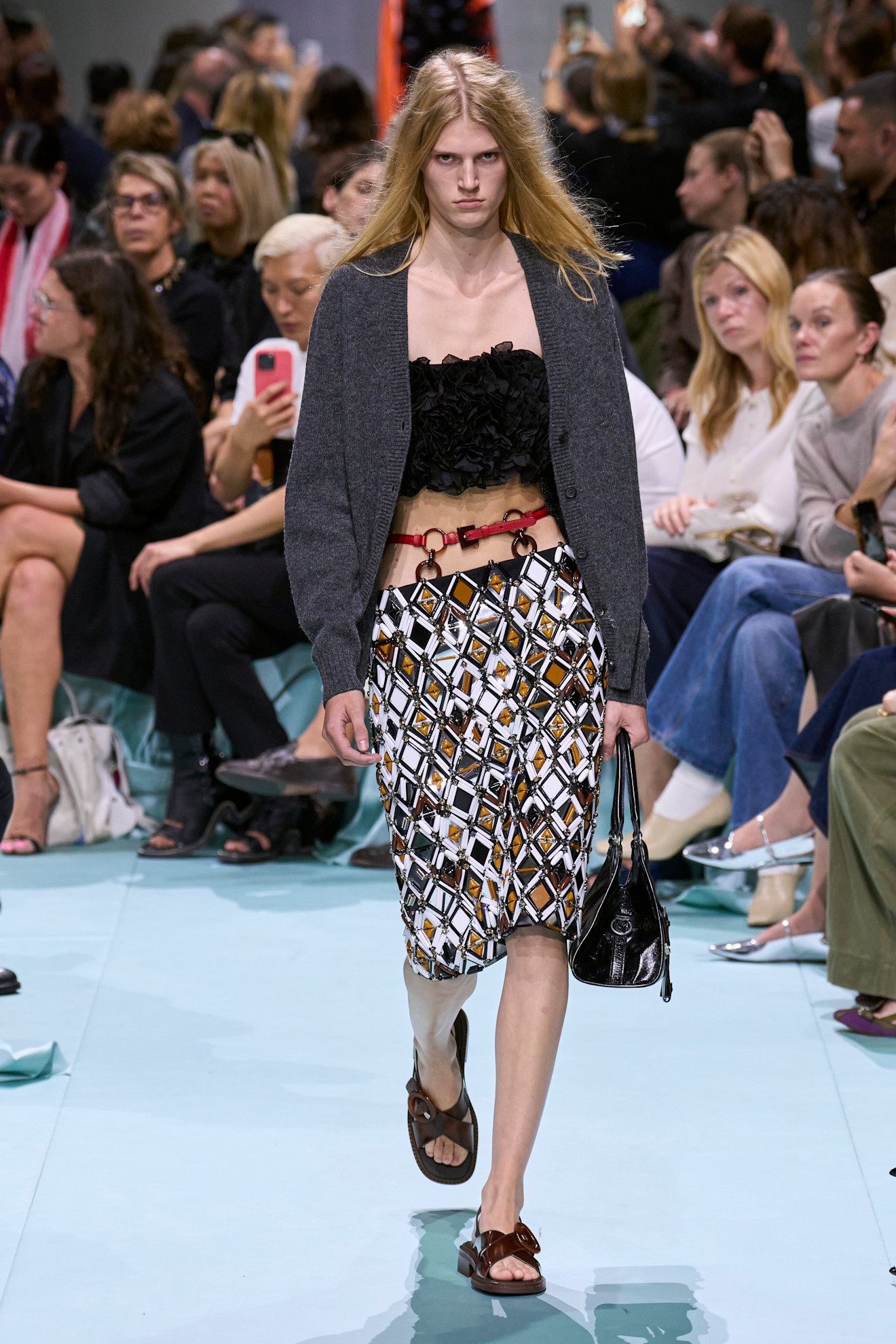
Brands such as Prada, Louis Vuitton, and Dior have maintained a consistent presence in the fashion zeitgeist whoever was at the helm as creative director, because they have a very distinctive design language and recognisable aesthetic which resonates with each generation
The luxury industry has found itself in the midst of a slowdown due to weakening consumer demand, the perceived flattening of creativity, and a struggle to remain relevant, all the while trying to keep consumers motivated to purchase while prices continue to rise. Designers (especially, but not limited to those at major fashion houses) also find themselves at a crossroads between nurturing their creative output, protecting the bottom line, and acting as a beacon of inspiration for what women will desire from them next season.
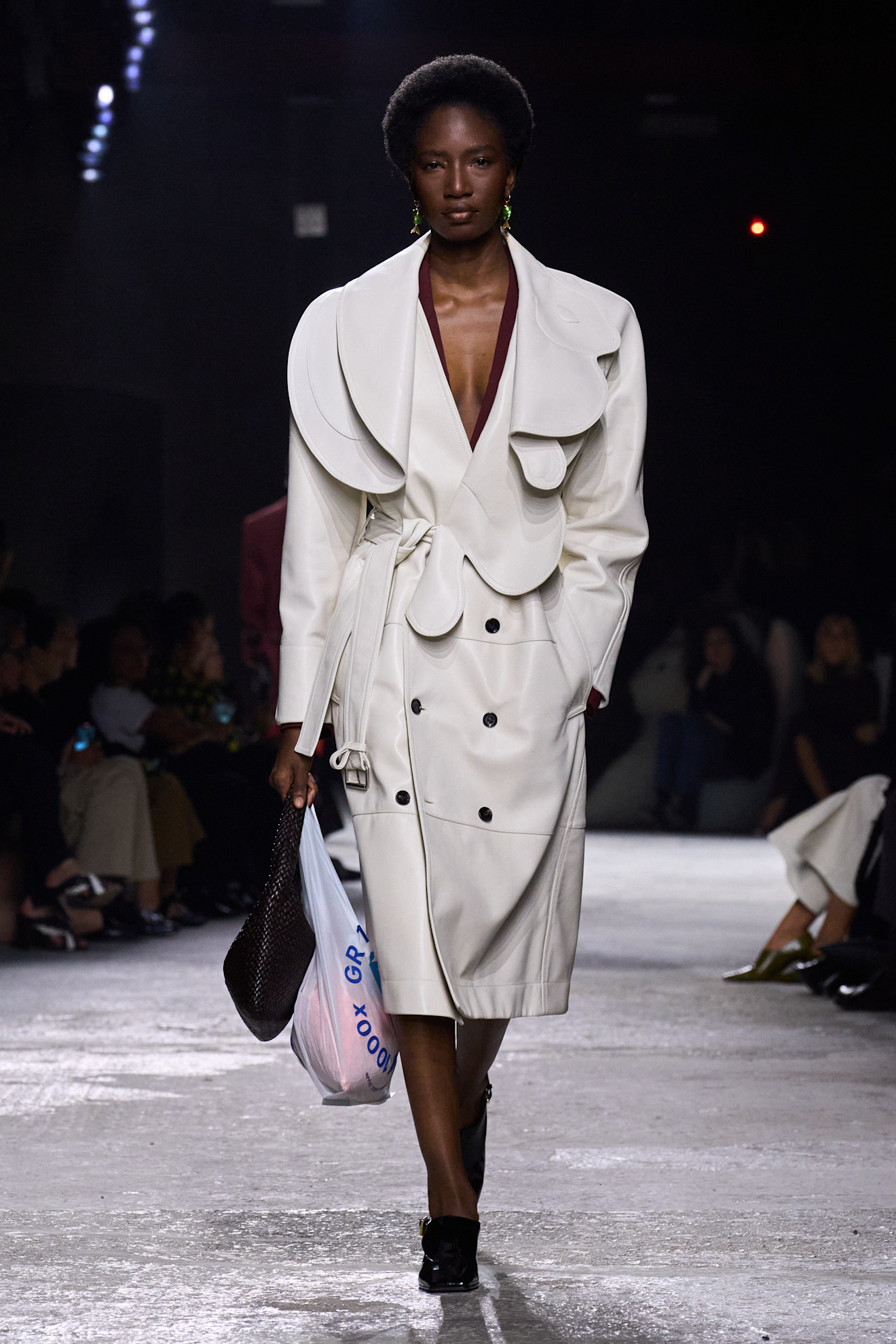
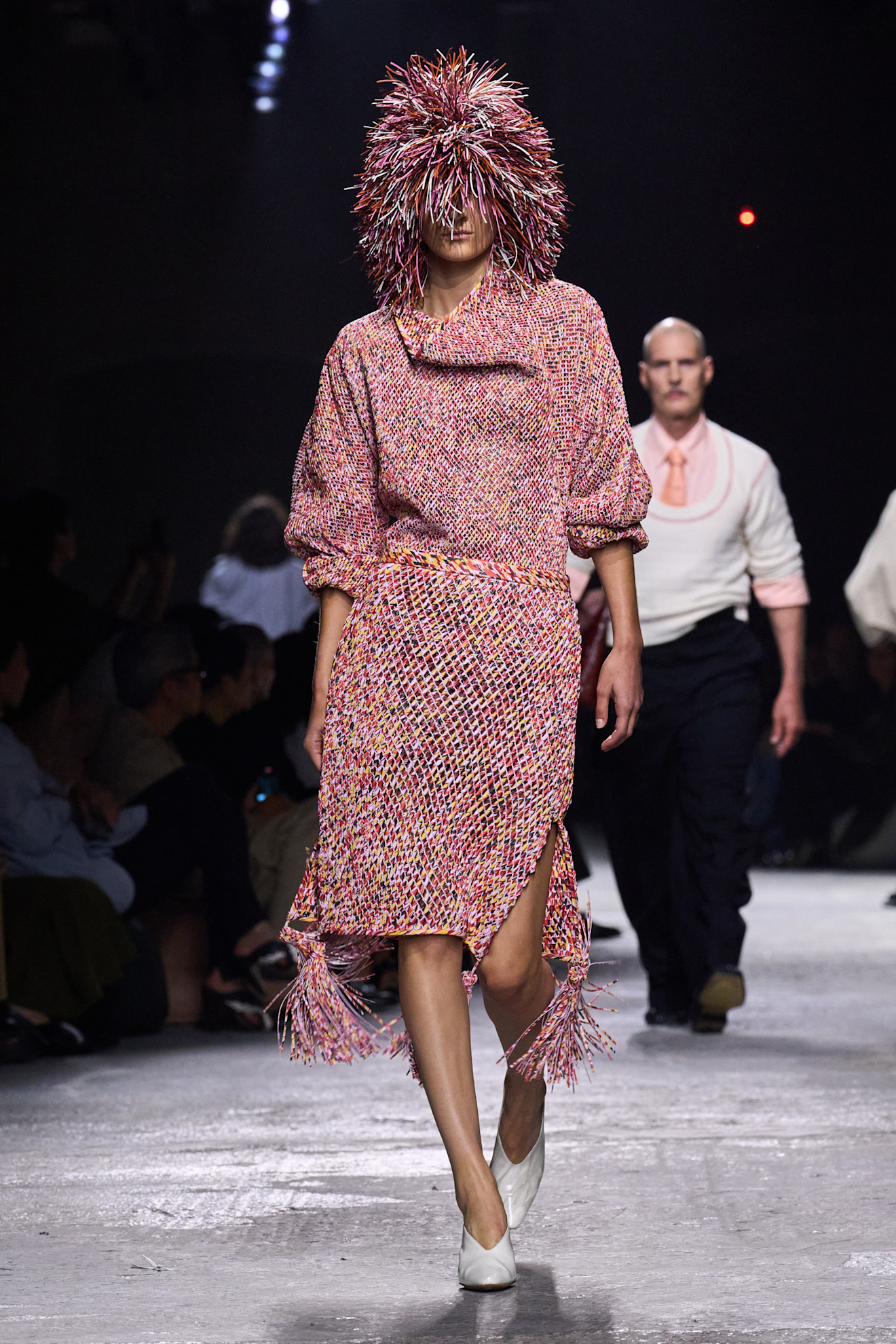
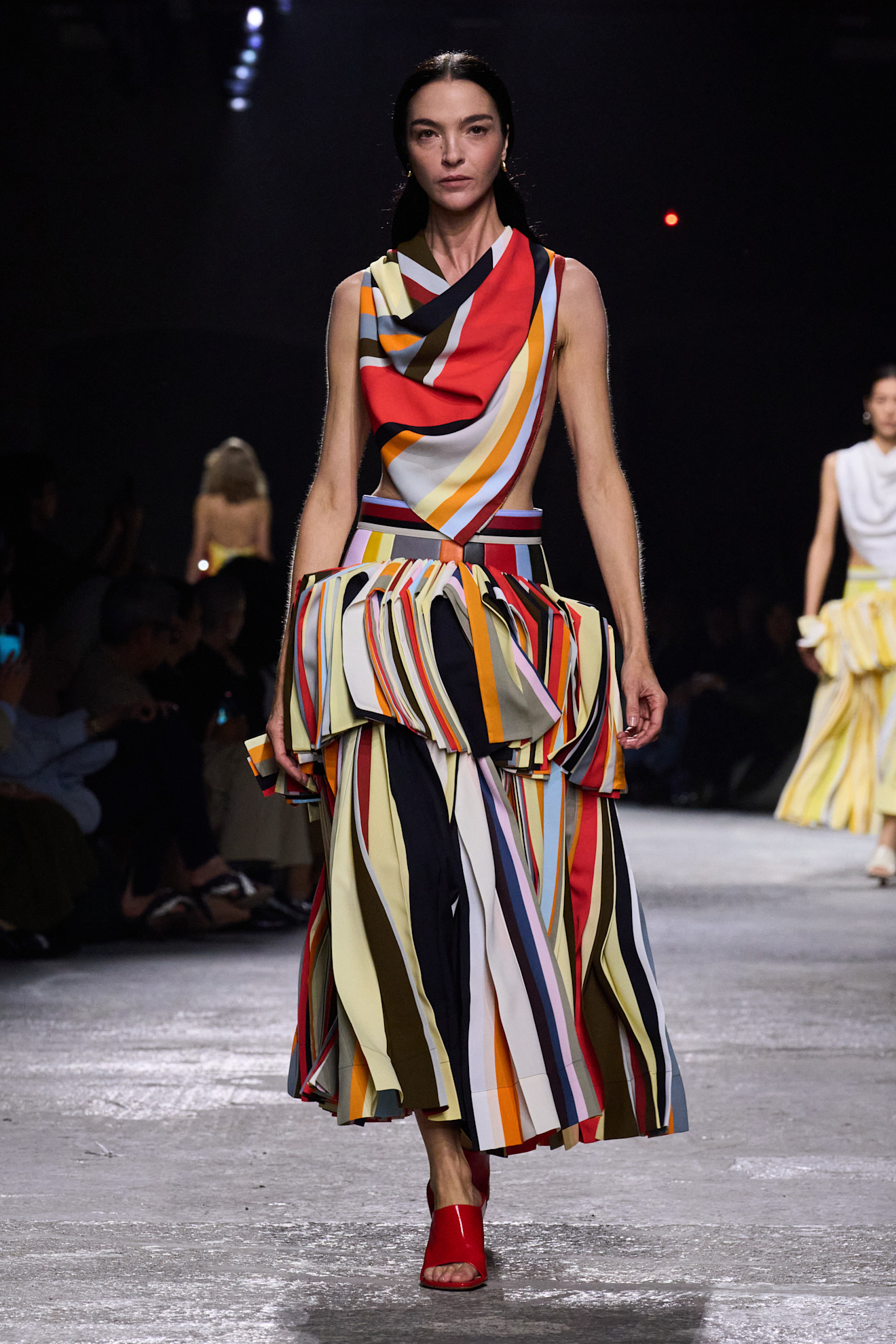
The show notes for one of the industry’s most sure-footed brands, Bottega Veneta, spoke of the “redemptive power of fashion…combined with the intrepid imaginings of Creative Director Matthieu Blazy”, and in that vein spring 2025 carried with it a tone of optimism in ‘redemptive power’. As designers appeared to have regained their confidence, doubling down on their house codes or breaking out of their boundaries to present a new angle on the familiar. Which, in an industry that appeared to be stagnating is significant – and necessary – progress. The collections of Prada and Miu Miu will ensure they remain at the top of Gen Z’s wishlists, while the bigger picture of how Seán McGirr at Alexander McQueen and Daniel Lee at Burberry are shaping their respective tenures is coming into sharper focus (kudos to both for recognising the importance of good set design to evoke an emotional response). And Jonathan Anderson continues to show-and-prove when it comes to the viability of progressive designs that sit outside of the box.
If we have learned anything in these past four years it’s that uncertainty is now the way of modern life, but half-measures and holding back won’t help the bottom line, so designers should go ahead and unleash their creativity if they hope to hold onto this optimistic momentum in the seasons to come.
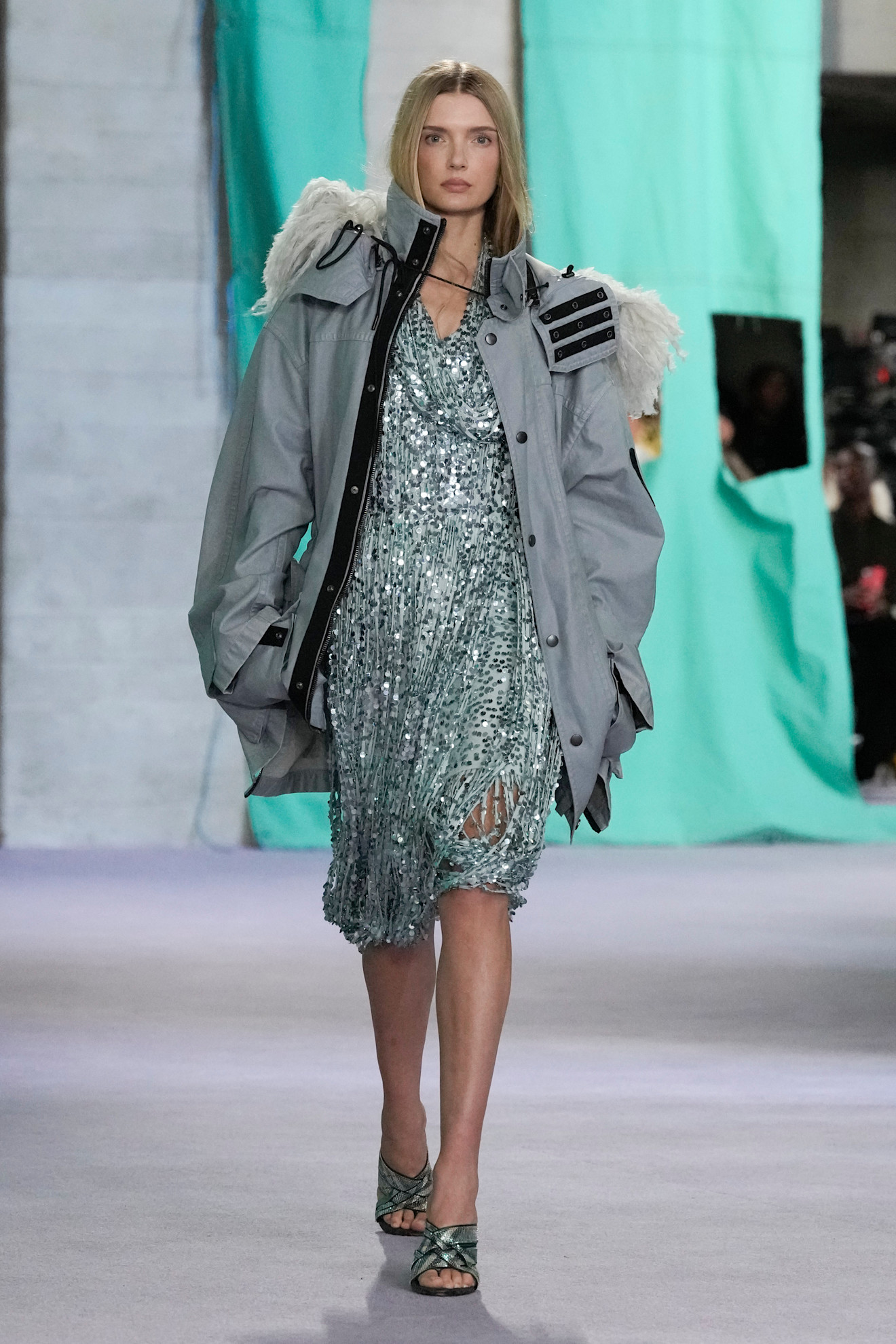
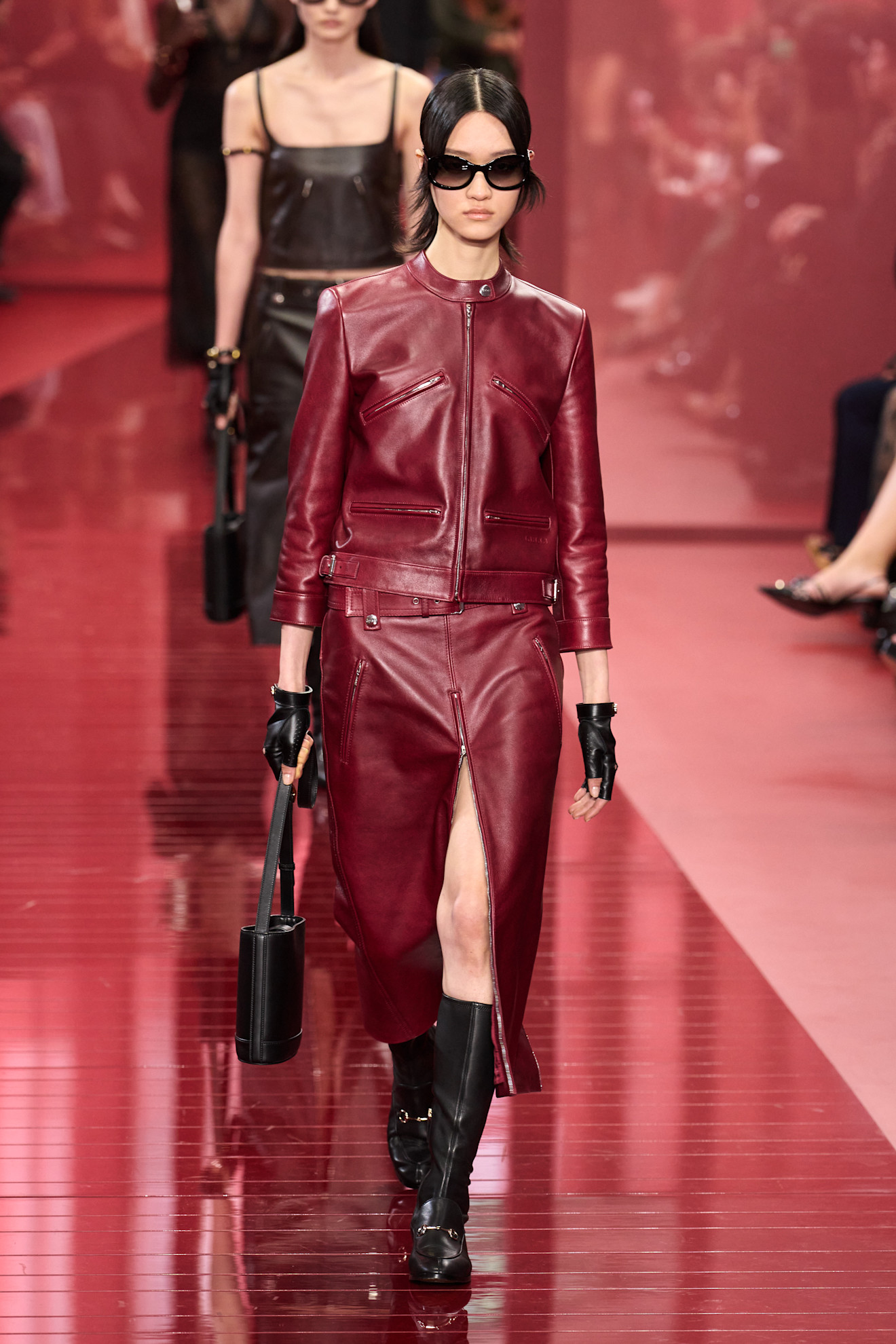
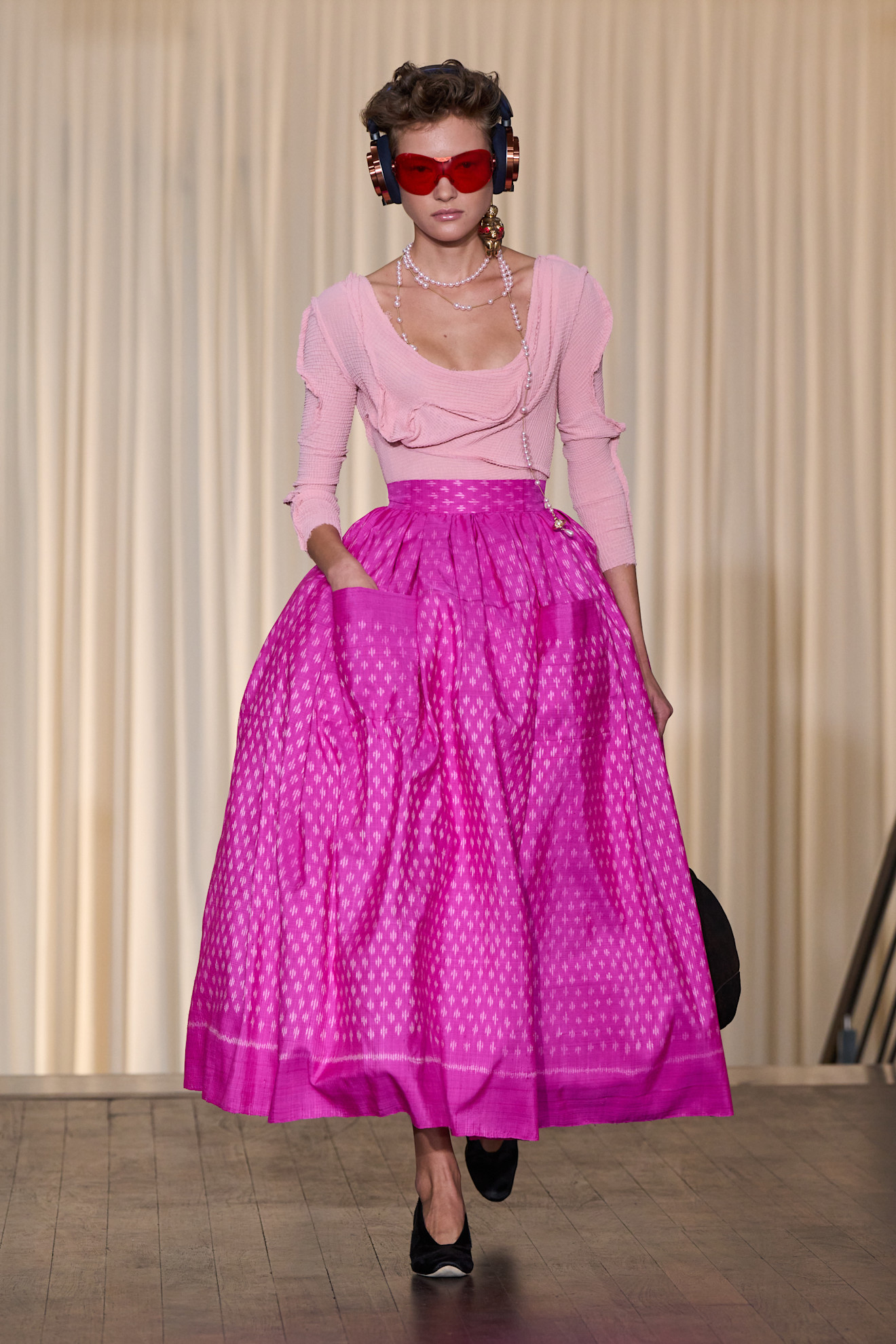
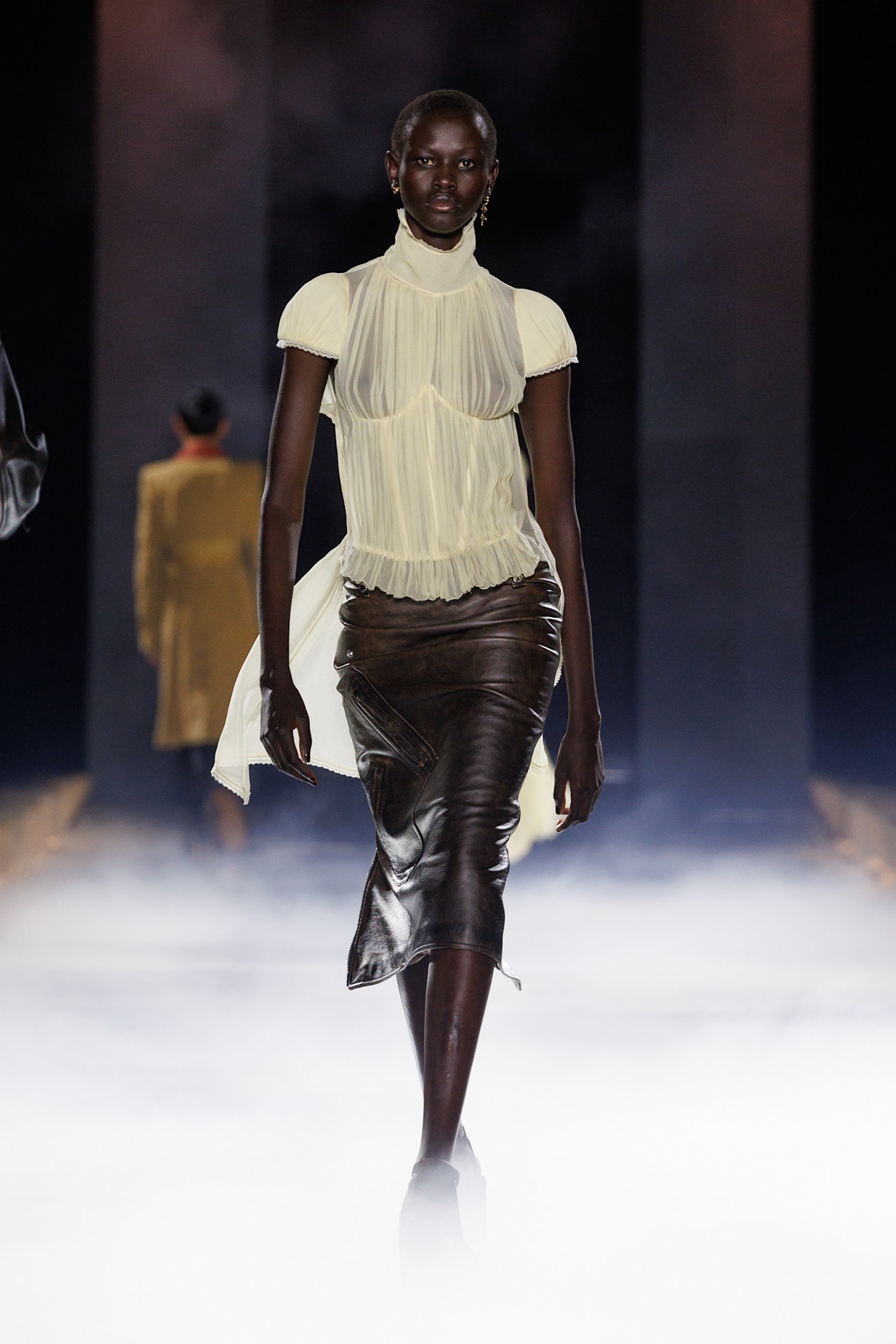
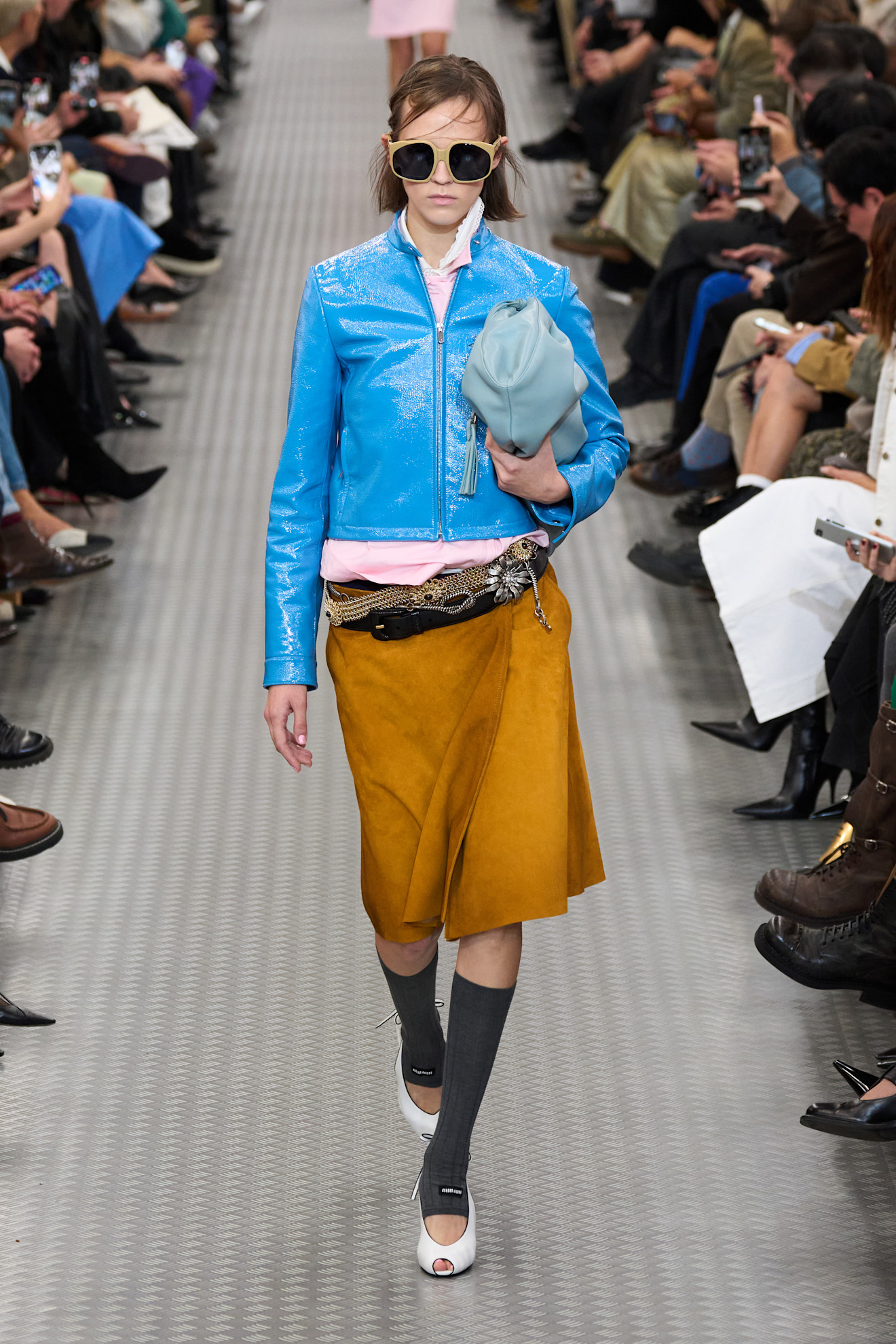
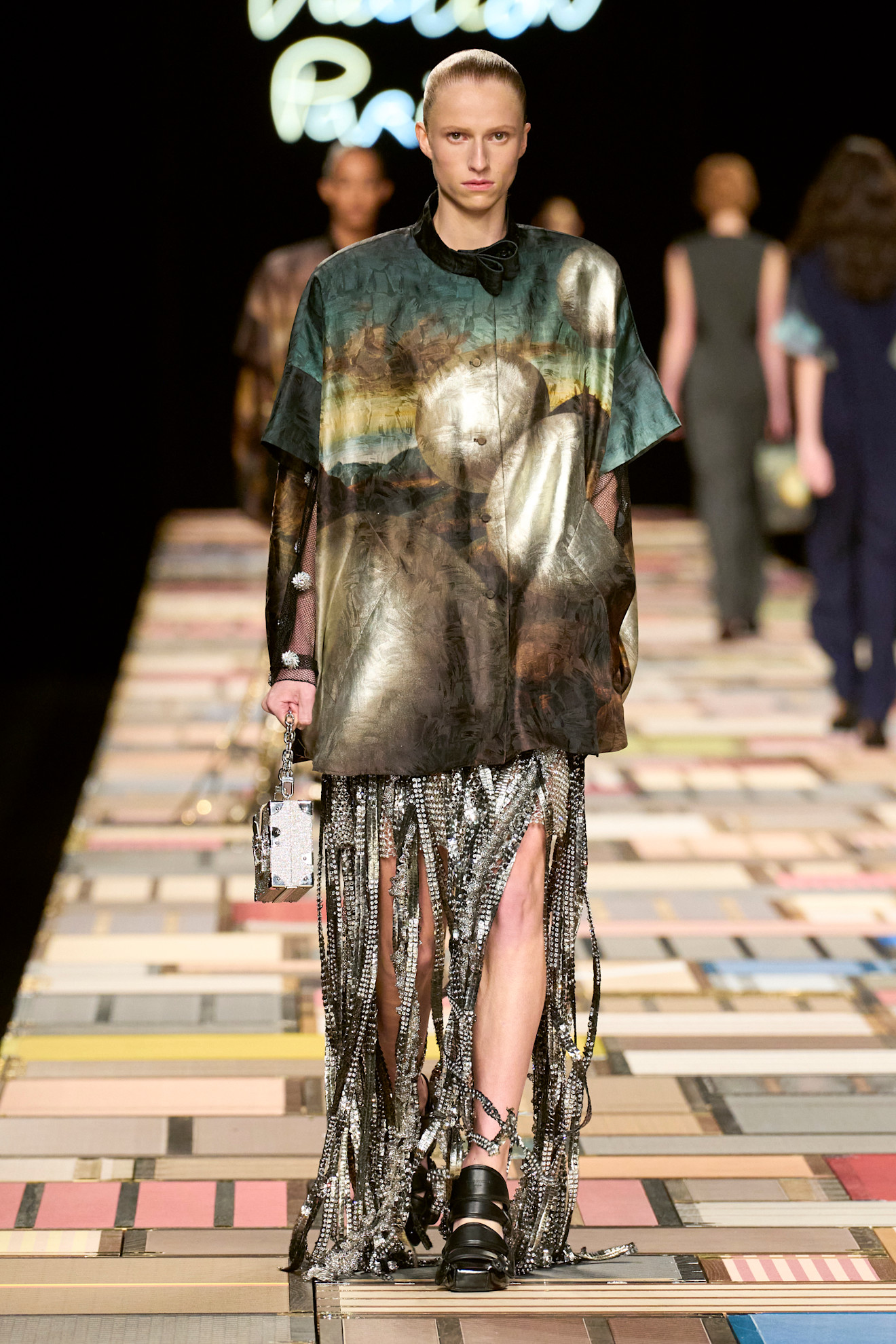
Index
- Sweetness and Light
- Everything But the Dress
- From Sheer to Shrouding
- (Hybrid) Working Women
- A Sense of Time and Place
- Names-to-Know
Sweetness and Light
In a period of great heaviness in the world, with global conflicts raging and economies under immense financial strain, there is the expectation that this will be reflected in the art created of the time. As adversity tends to produce some of the best work by those in creative industries, who feel there is nothing to lose, when all feels lost. It is also true that there are many ways to protest, and in lieu of any one brand making a firm statement on their political stance, designers opted instead to offer a ray of light in these dark times. Choosing to uplift love, and one of its many manifestations romance, was how fashion stood against hate.
The return to romance felt wholly unexpected, but it was also a case of not knowing what was missing until it was presented again, from a new perspective. As I noted in my review of Chemena Kamali’s sophomore collection for Chloé:
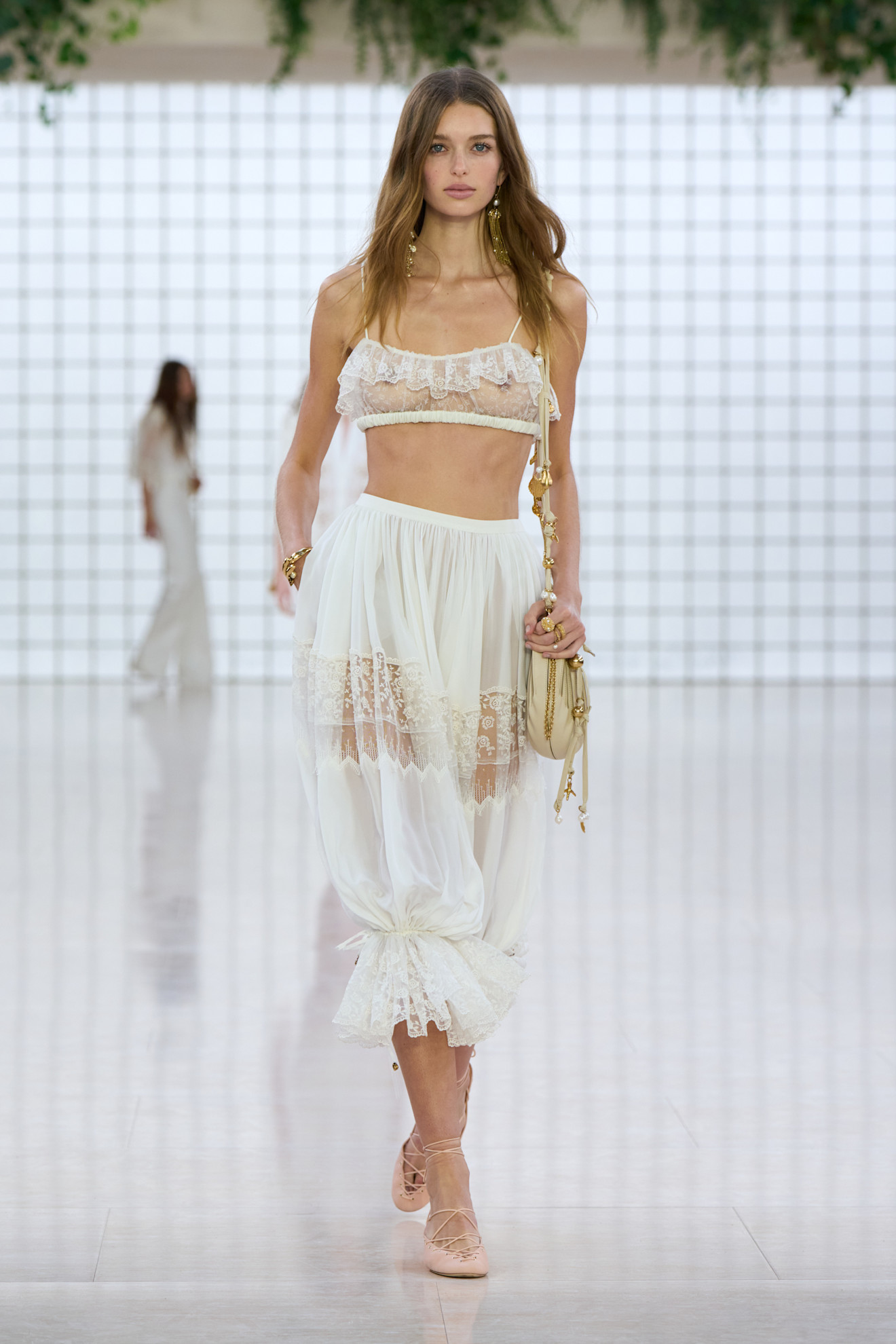
At a time when female empowerment and women’s right have us fighting on the frontline, the idea of being a woman who is also a girly girl or into romance is frowned upon as not representative of how women can be taken seriously. It remains so that there is room for all facets of womanhood (one doesn’t cancel out the other), and the romantic side was overdue for a high-octane renaissance”
It may not be the most forceful form of protest, but it does align with another idea which took hold at Nicolas Ghesquière’s Louis Vuitton, the idea of ‘soft power’, which in part uses ‘cultural influence’ to persuade as opposed to traditional methods of control. This coupled with the uptick in childhood and playful pursuits featured in collections is a welcome change from the homogeny created by stealth wealth.
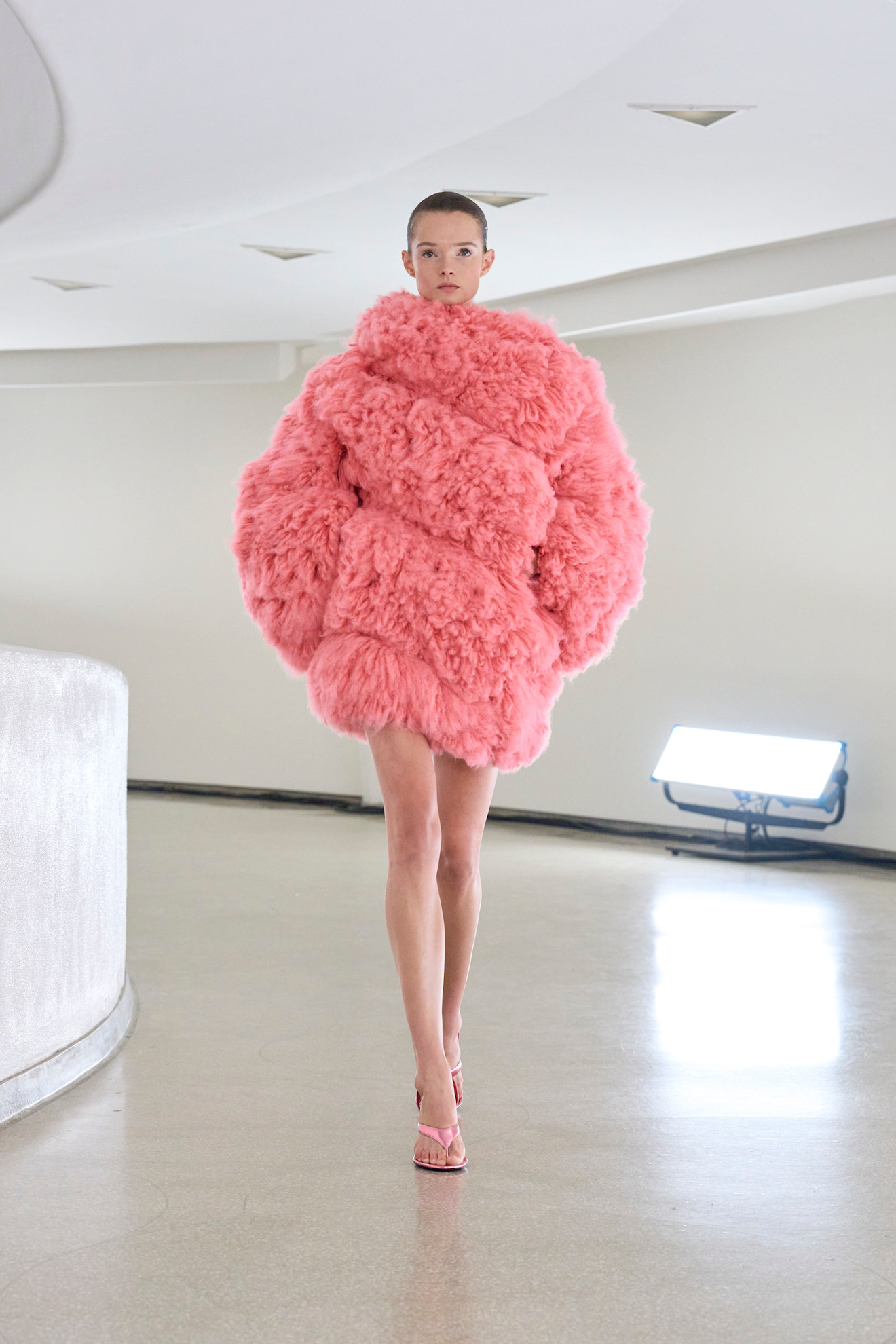
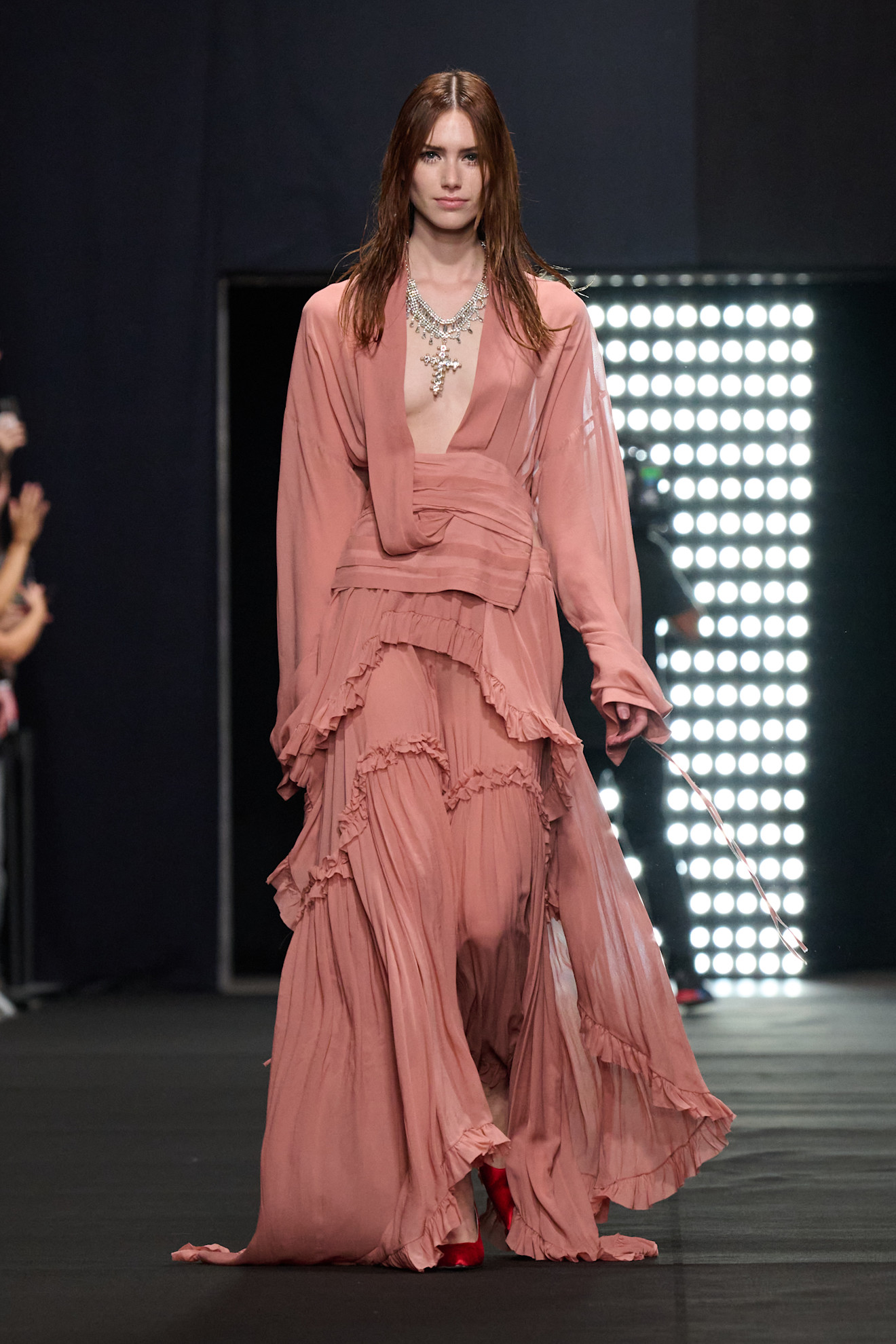
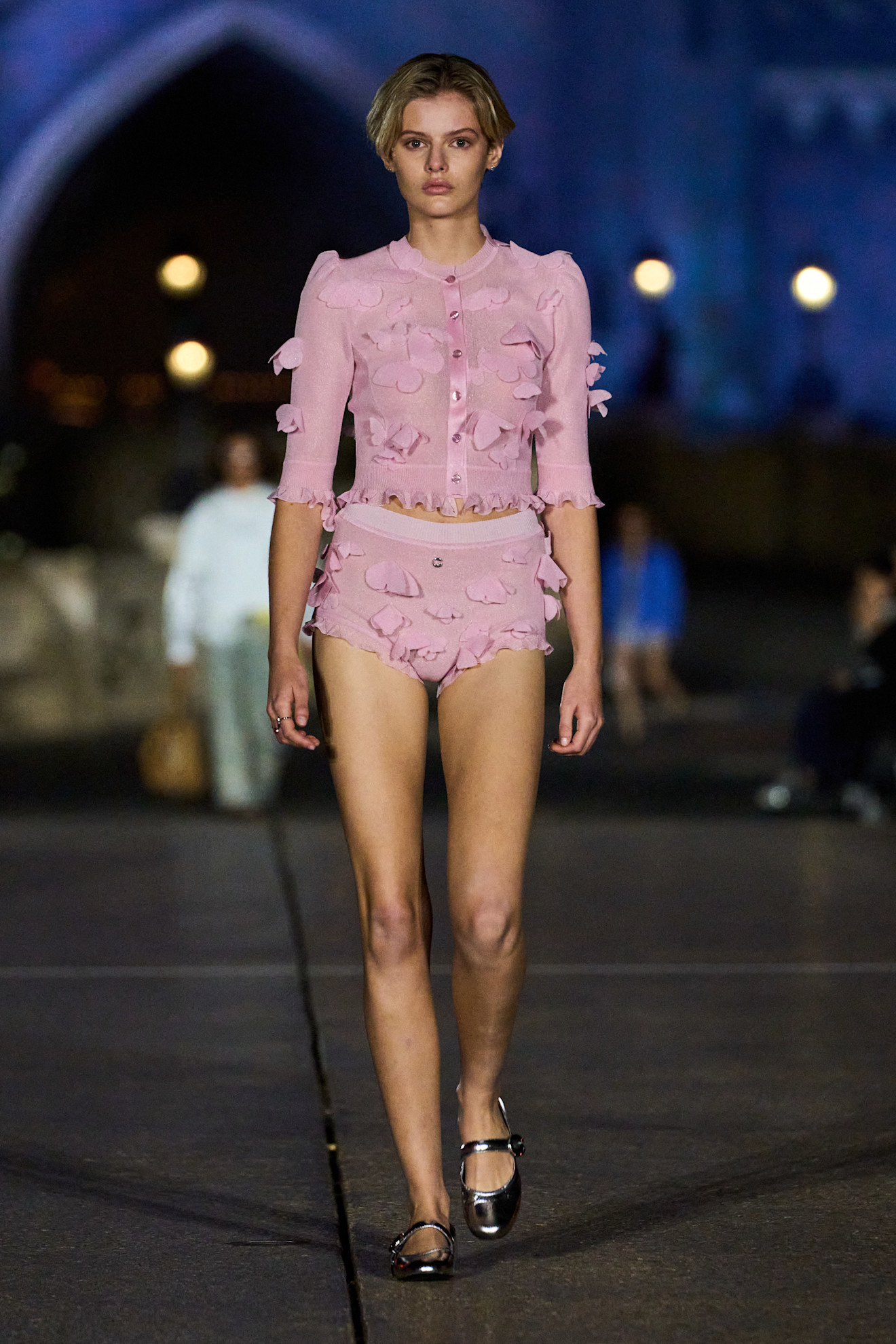
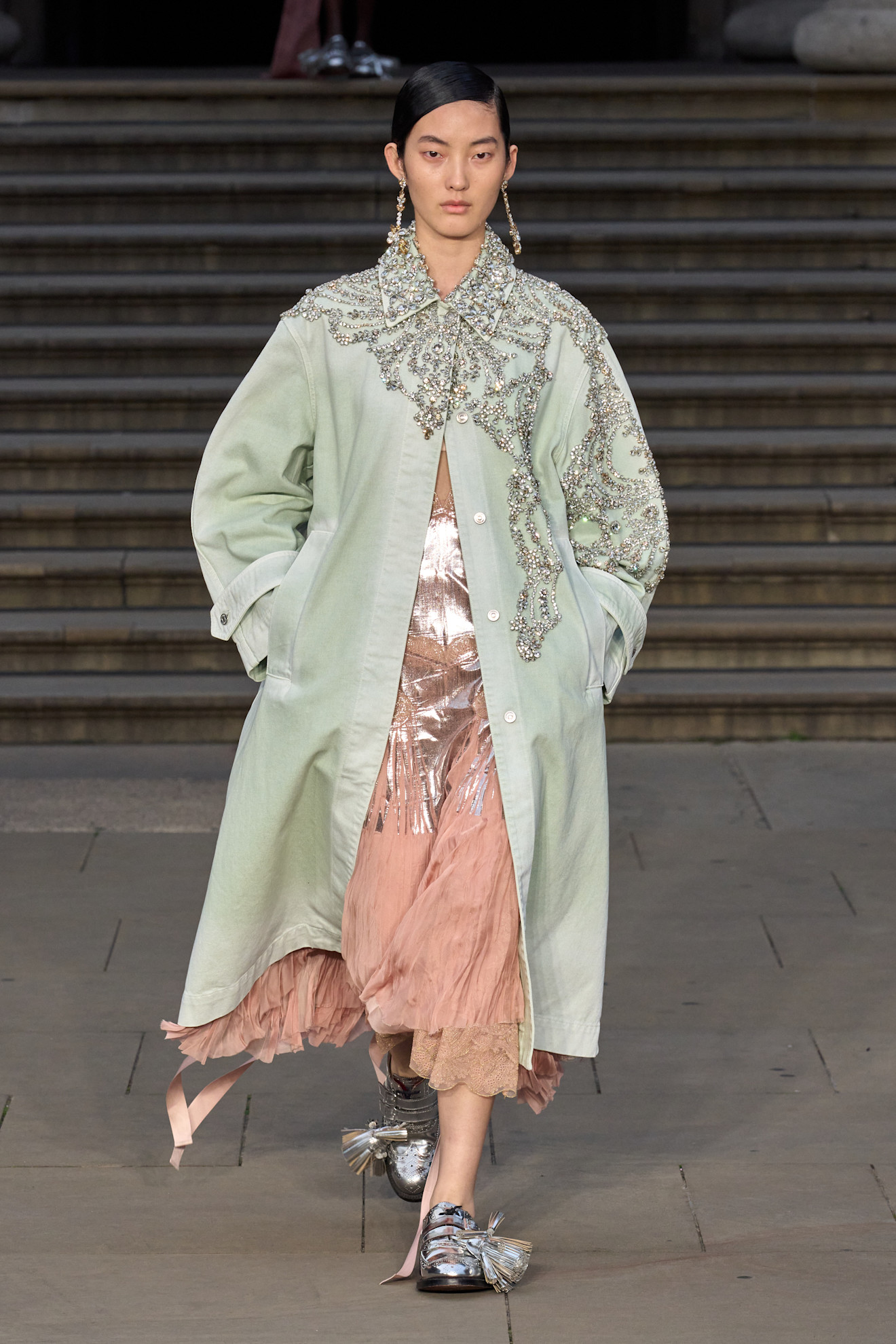
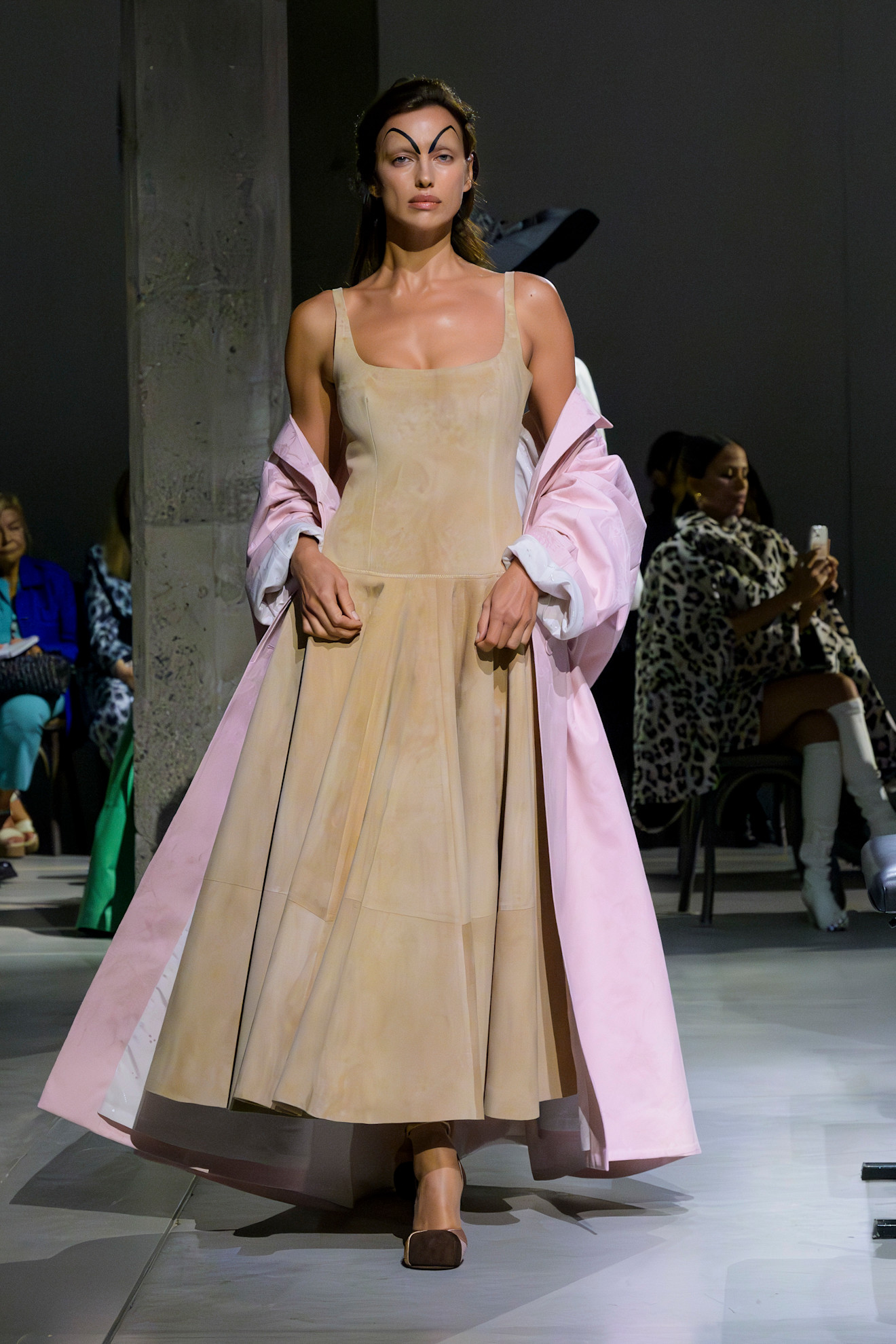
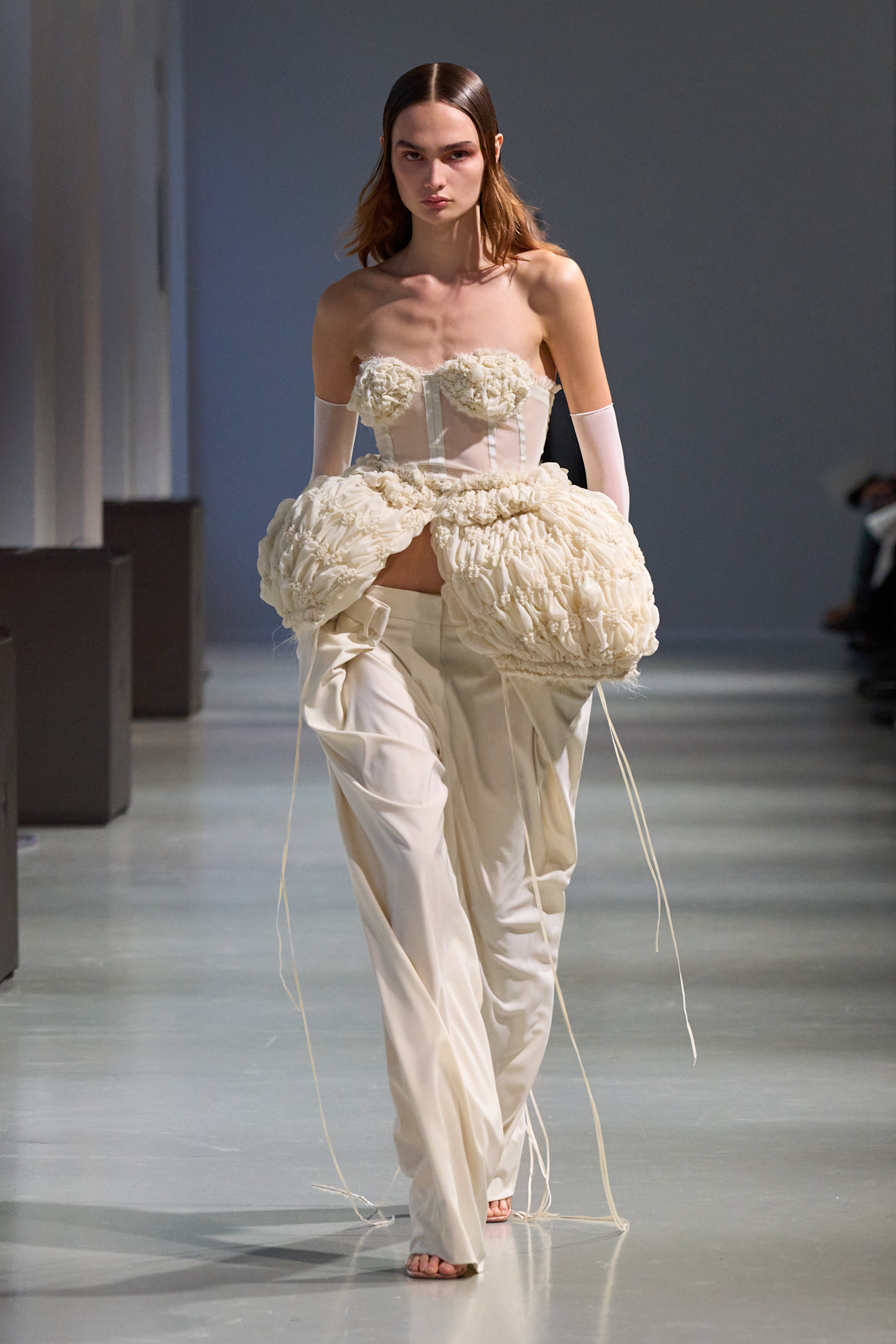
Can we find power in sweetness? I wanted to feel the primal pull of fashion once more, a coming-of-age fascination that encompasses the joy of looking, discovering and dressing: the power of wow!”
Matthieu Blazy, creative director, Bottega Veneta
Leading the movement was of course Kamali and her continued exploration of the Chloé archives to expand her bohemian aesthetic into a fully-fledged lifestyle offering as swimwear, retro-infused outerwear, kick flares, and yes those billowing maxi dresses held even more appeal in a summer palette. Then there was Pieter Mulier’s Alaïa, decamped to the Guggenheim museum in New York for a season, he managed to make complex bulbous shapes feel wearable through the application of candy pastels and tactile surfaces. Rokh, founded by Rok Hwang, expressed his love for the handcrafted by re-thinking texture in his application of ruching, gathers, and 3D florals to his signature deconstructed silhouettes. Alessandro Michele’s introduction to vintage Valentino was an infatuated love letter to femininity, with unapologetic riffs on ruffles, tiered knee-length skirts, lace body-stockings, maximalist embellishment, and fur stoles.
Next season designers are providing many different facets of girlish femininity, as a soft way to still be powerful, or escape into a dreamworld even if only as a temporary respite.
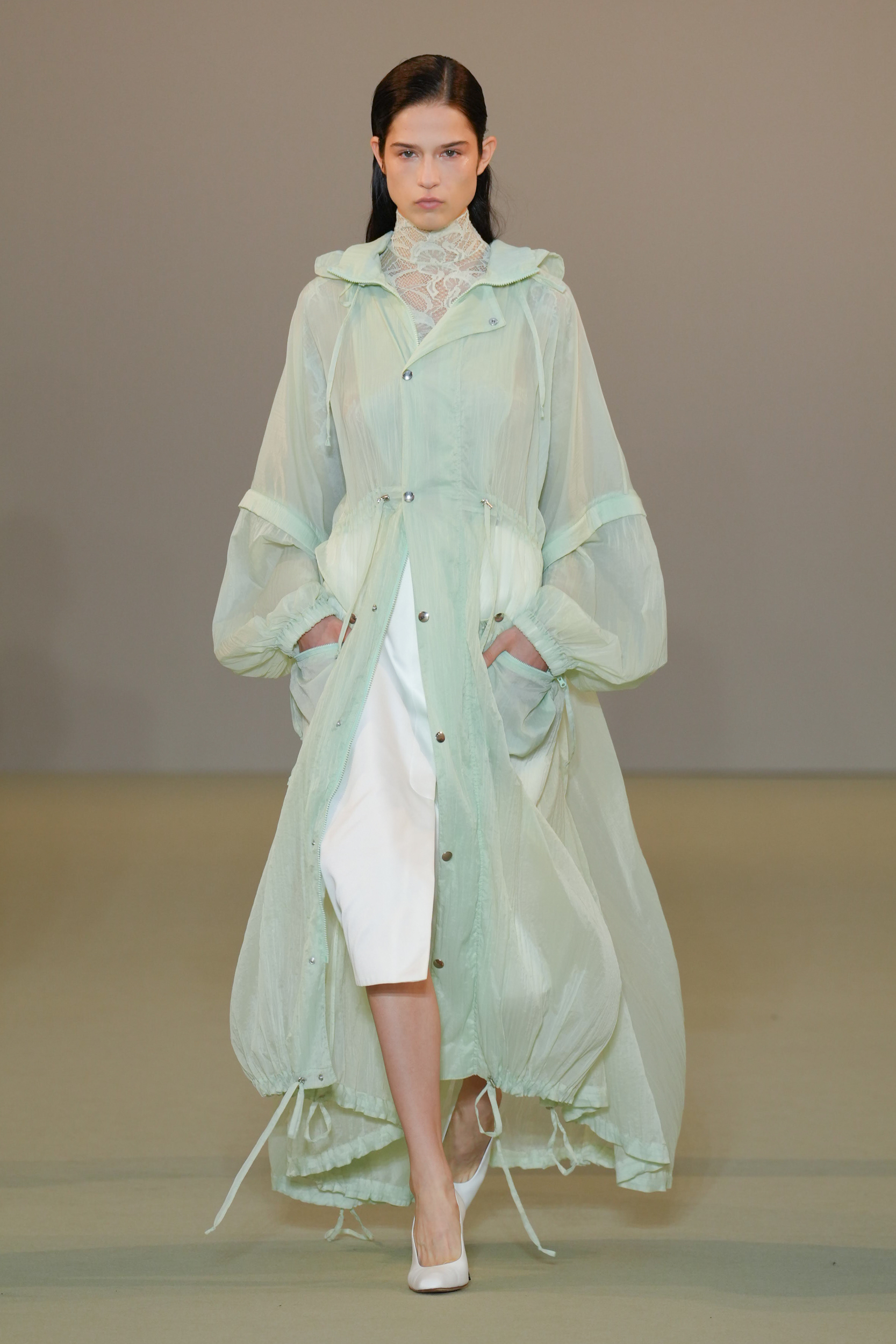
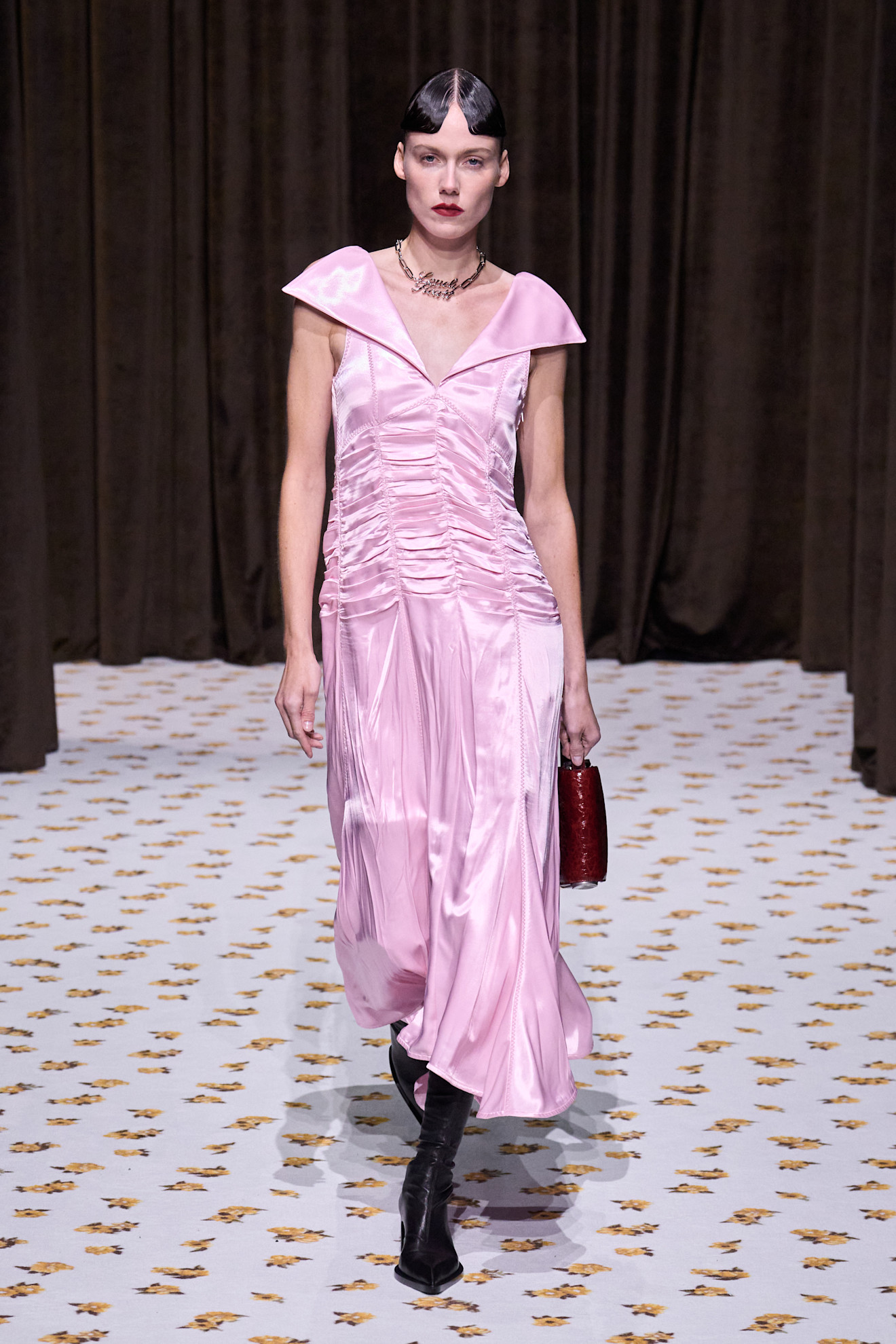
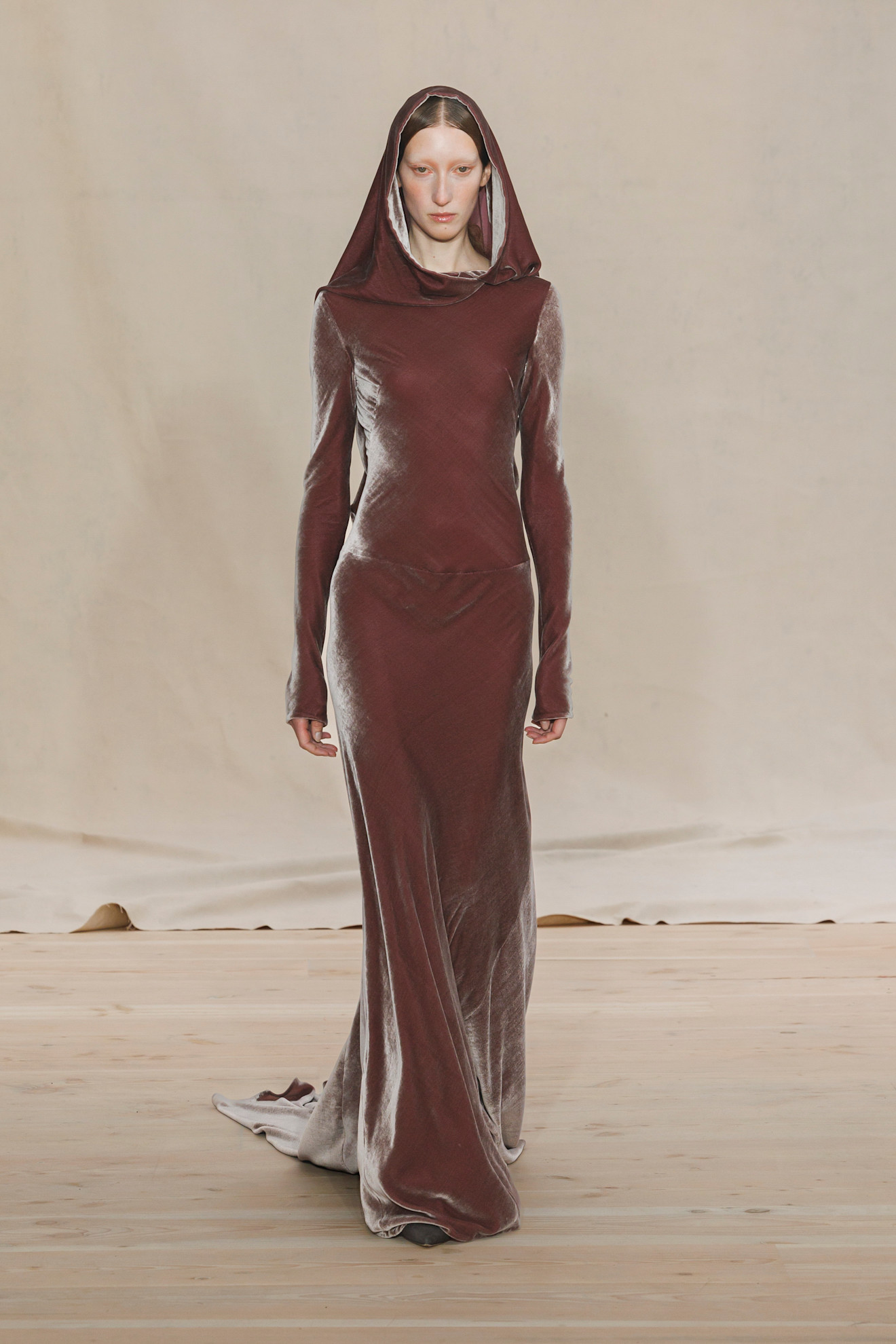
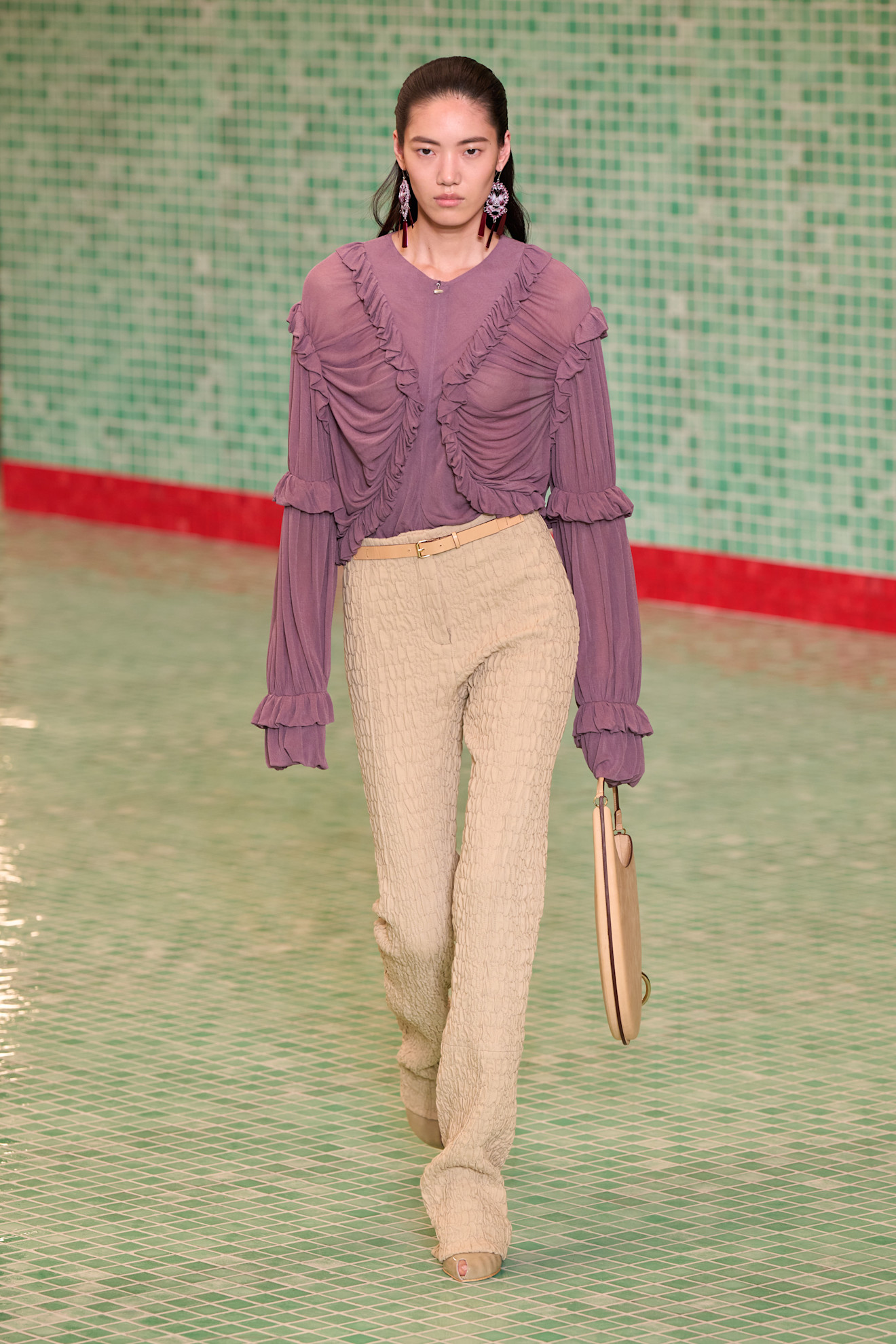
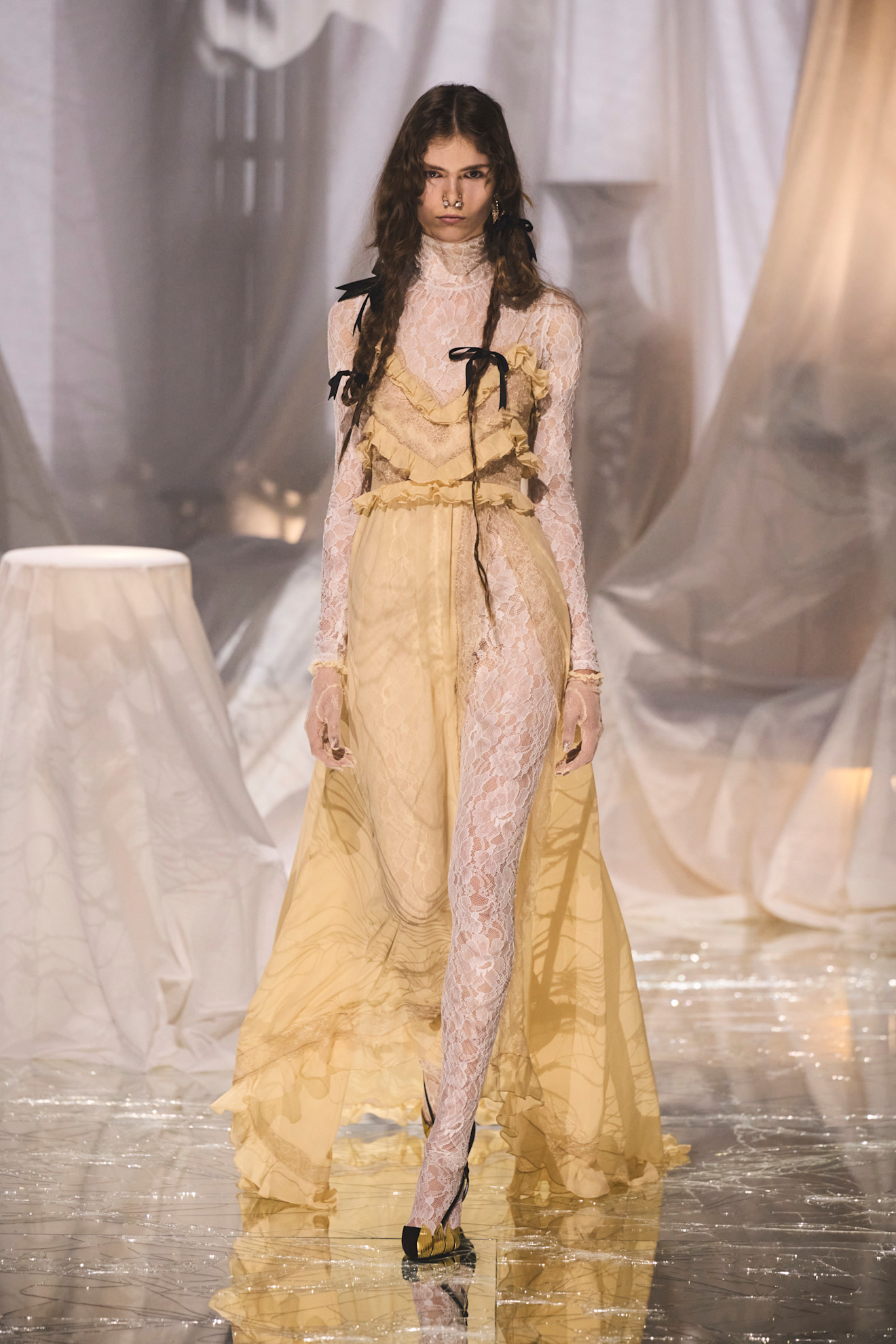
Everything, But the Dress
Lingerie dressing is nothing new and the idea of wearing inner layers on the outside has been widely accepted by the mass market. Rather than simply stripping down to a lace or silk set, designers took to rethinking how to present the category. The high-waisted knicker worn with ladylike silhouettes may have been inspired by all things trad-wife, but there was a softer more lounge-focussed take on adding intimates to collections this season. At Fendi, Kim Jones was influenced by the 1920s, telling The Impression backstage that the clothing represented:
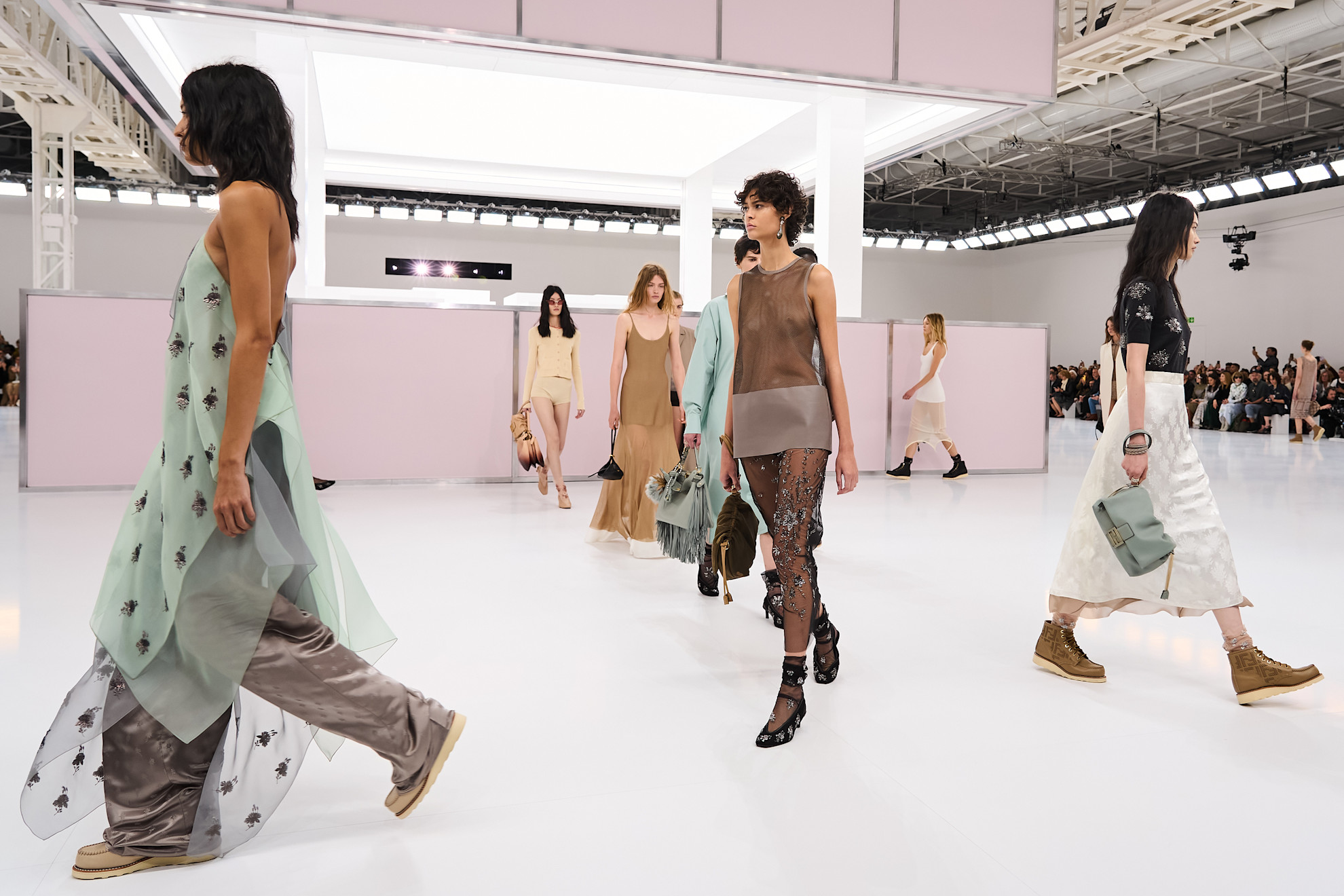
The Fendi woman and 100 years of different generations of very chic Roman women”
– Kim Jones, creative director, Fendi
In his collection he reworked the robe coat, knitted embellished sets, satin camisoles and the ubiquitous white tank top that was turned on its head, quite literally as Jones created a dress featuring a reversed tank as the hem.
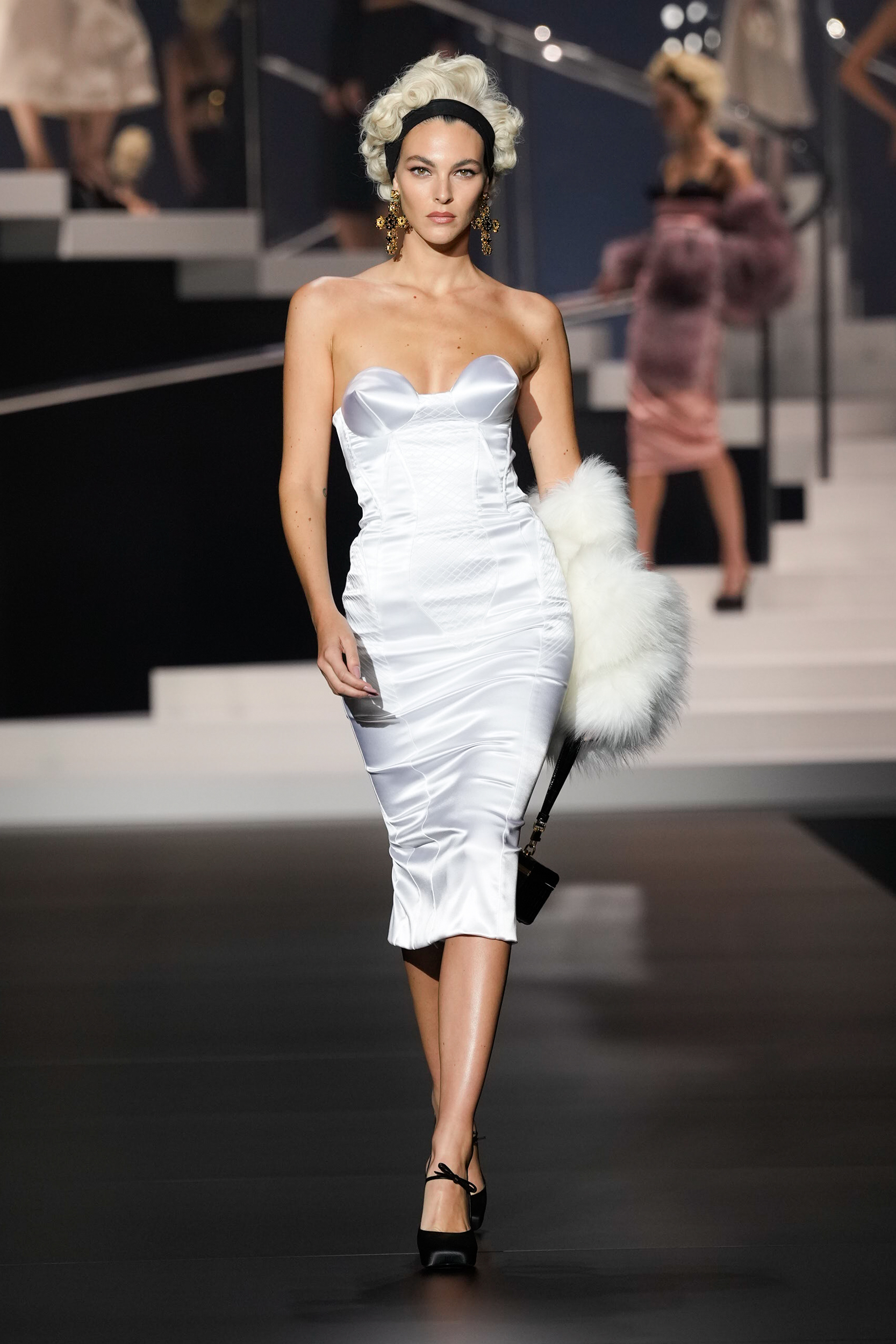
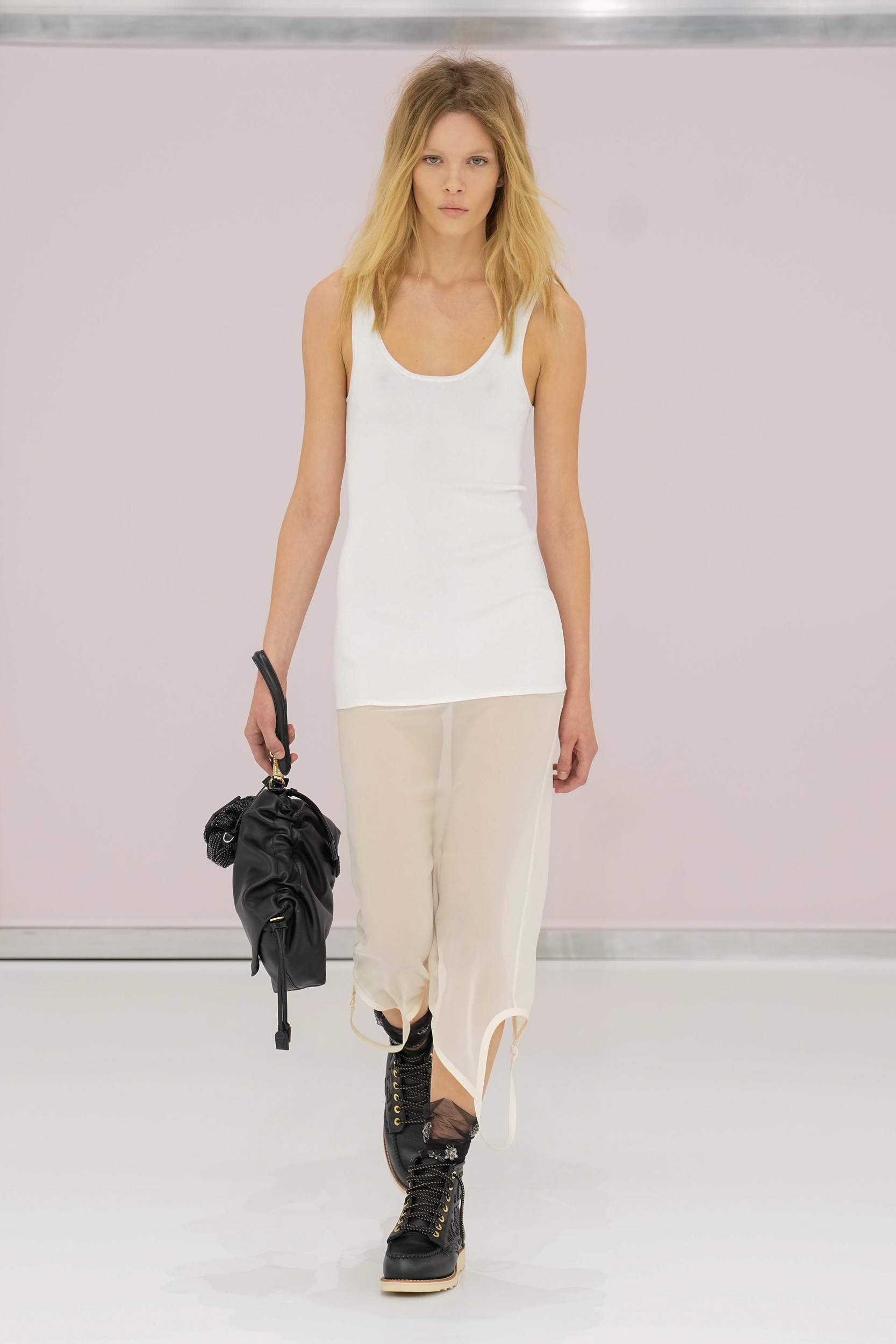
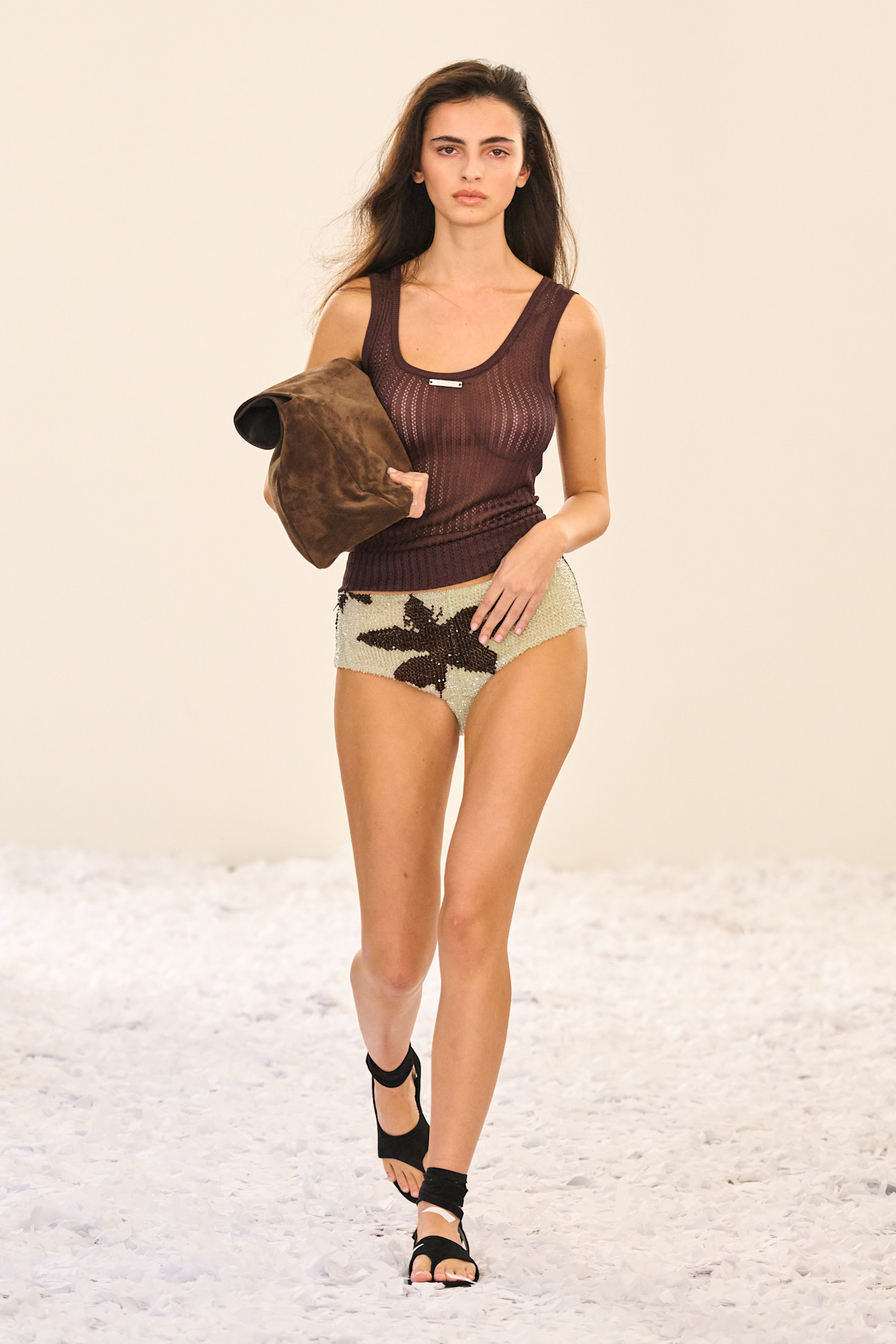
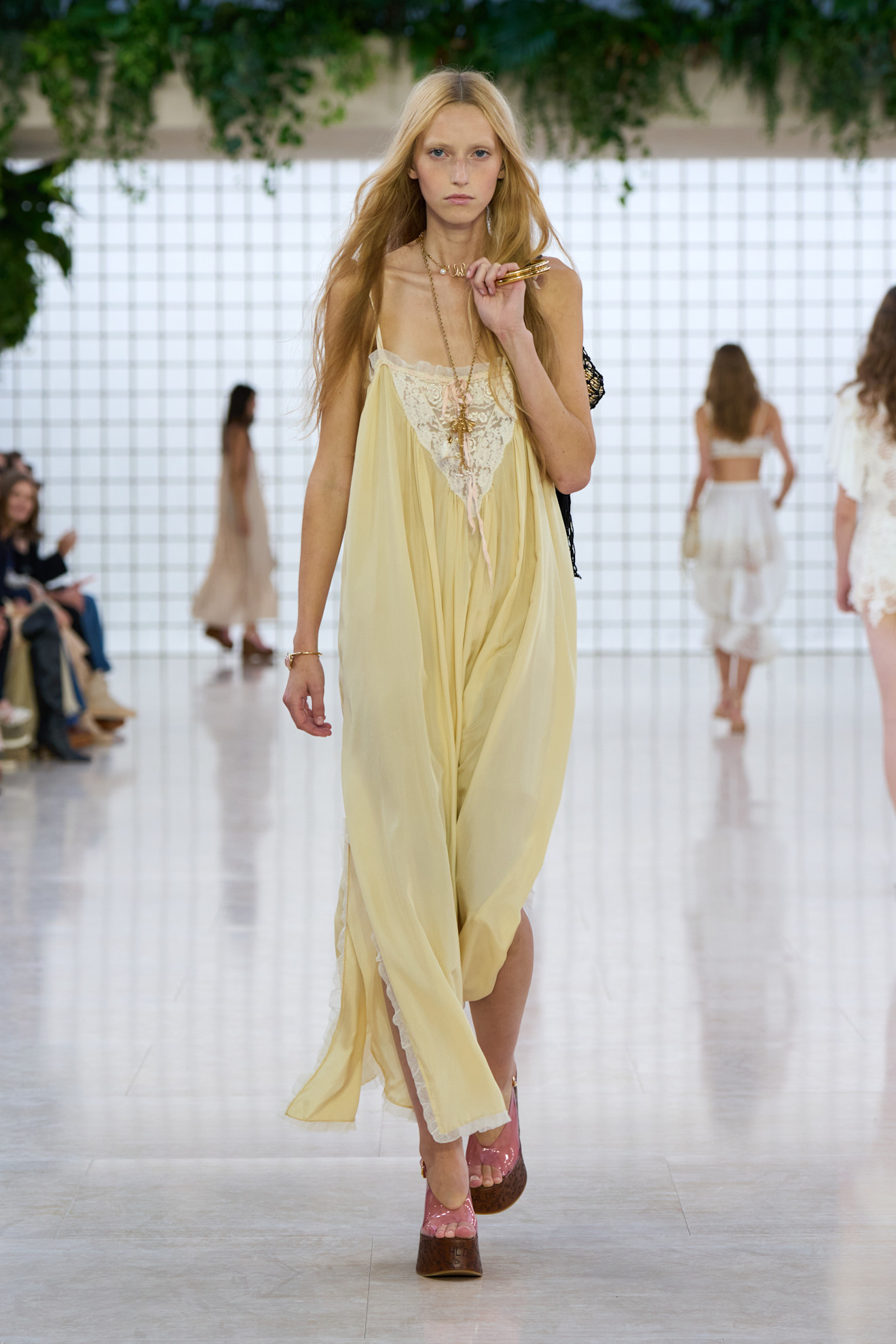
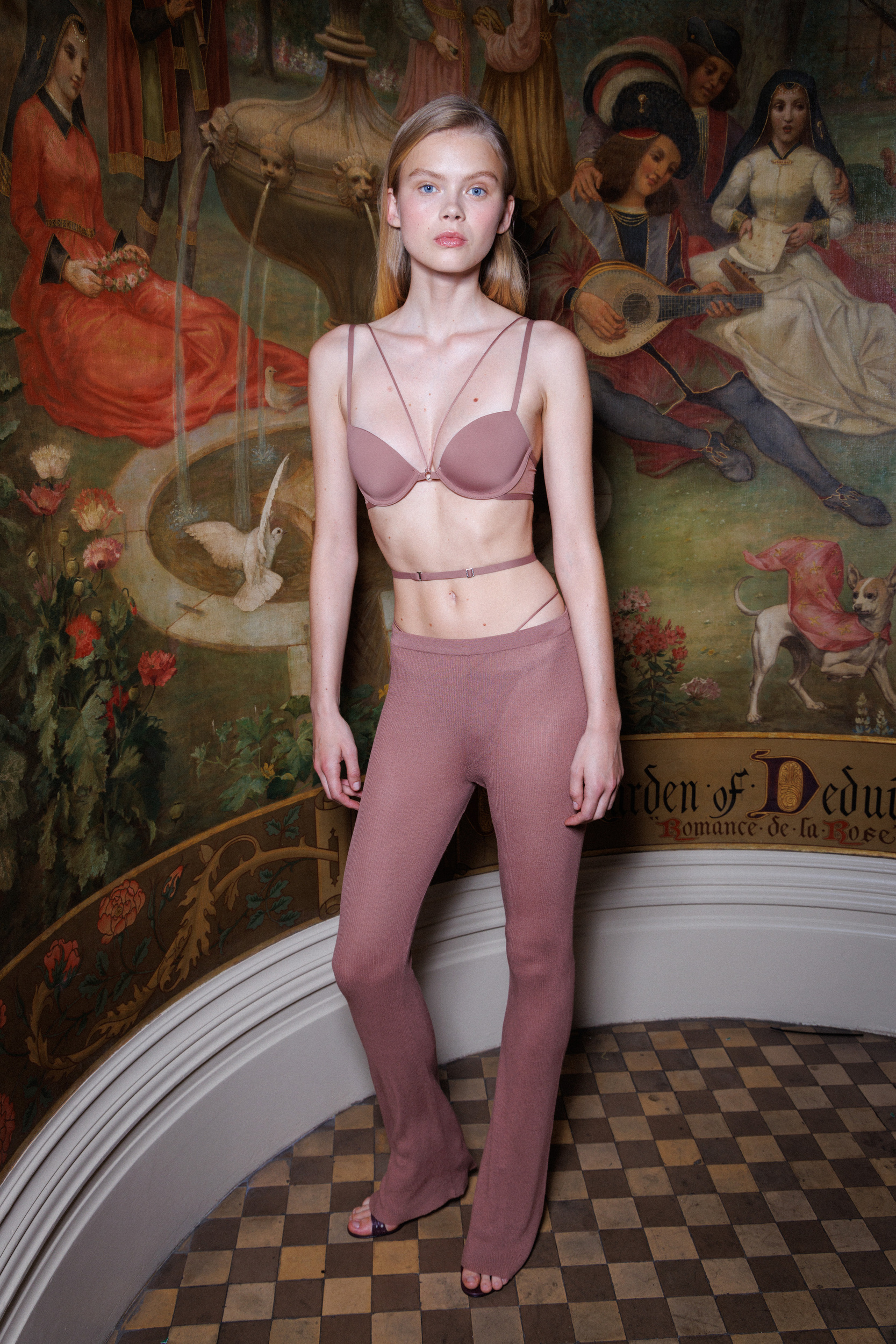
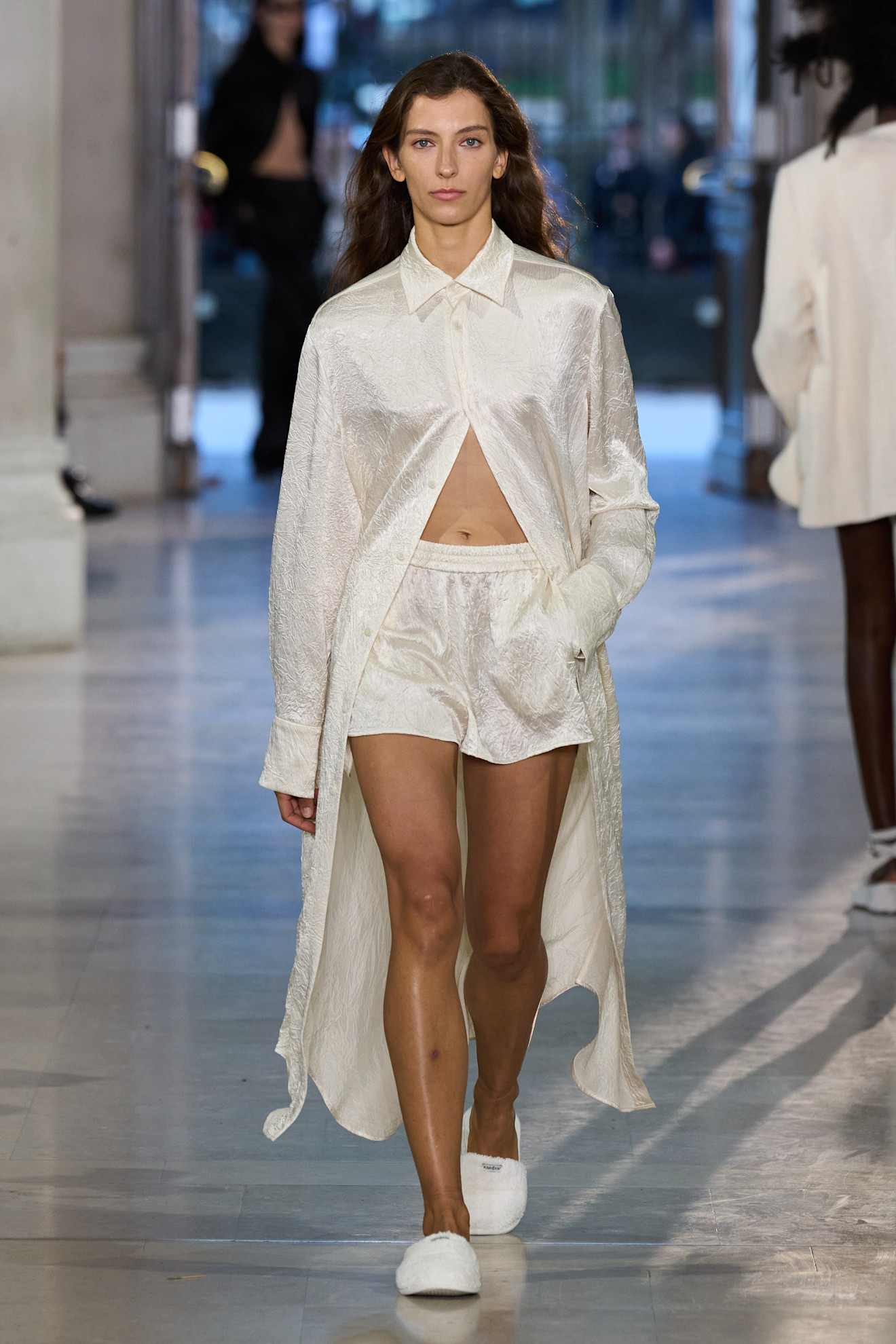
Brandon Maxwell also riffed on marled knits with the henley as the focus. Over in Milan, Dolce and Gabbana’s front row had the woman who took the world to bed while on tour i.e. Madonna, as the provocative (at the time) conical bras from her Blonde Ambition and The Girlie Show tours morphed into hourglass dresses and pinstripe suits with said bras playing peek-a-boo. Nensi Dojaka, who made a return to the London fashion week schedule after a few seasons off debuted a perfectly aligned collaboration with Calvin Klein (a smart partnership for the emerging brand which gave her the financial backing to show again on schedule).
It was left to Demna’s Balenciaga, to subvert the concept of lingerie dressing completely with trompe l’oeil body-suits. This detail may have gone unnoticed on the runway, but a closer look at the brand’s showroom gave away the illusion. Each piece could be worn without fear of exposure, as the lace bras were either printed of embroidered onto flesh-coloured mesh, ingenious, but also fun.
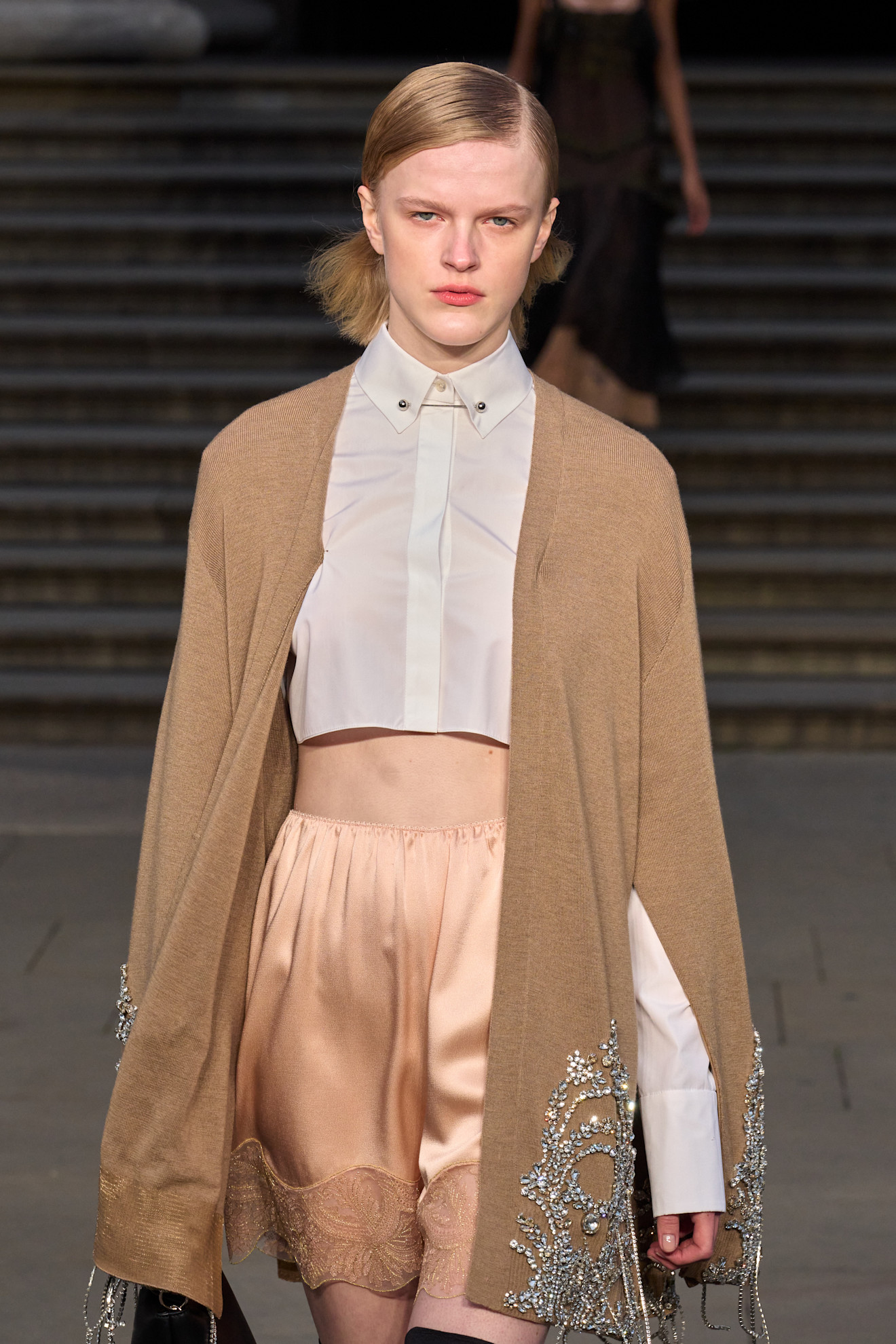
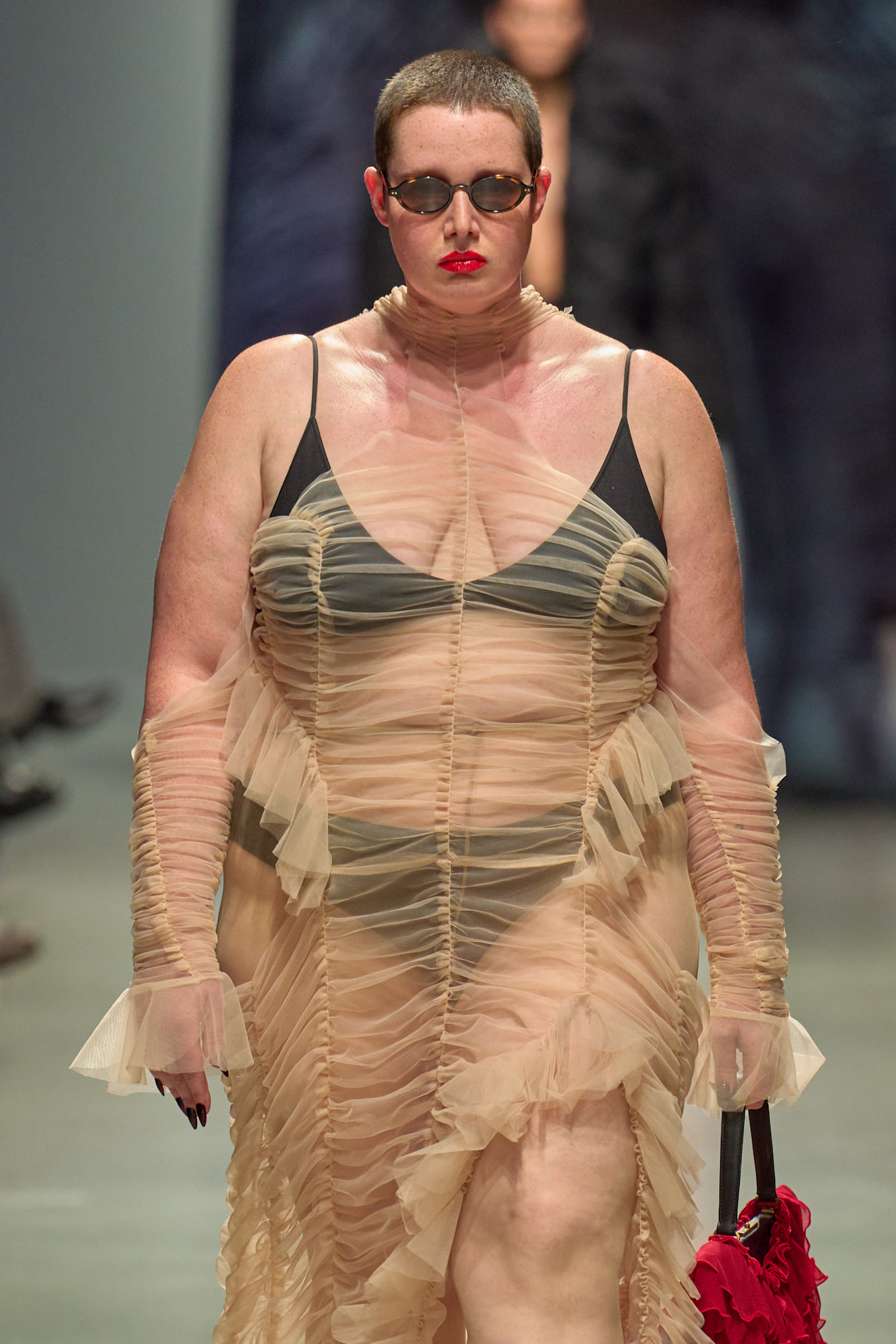
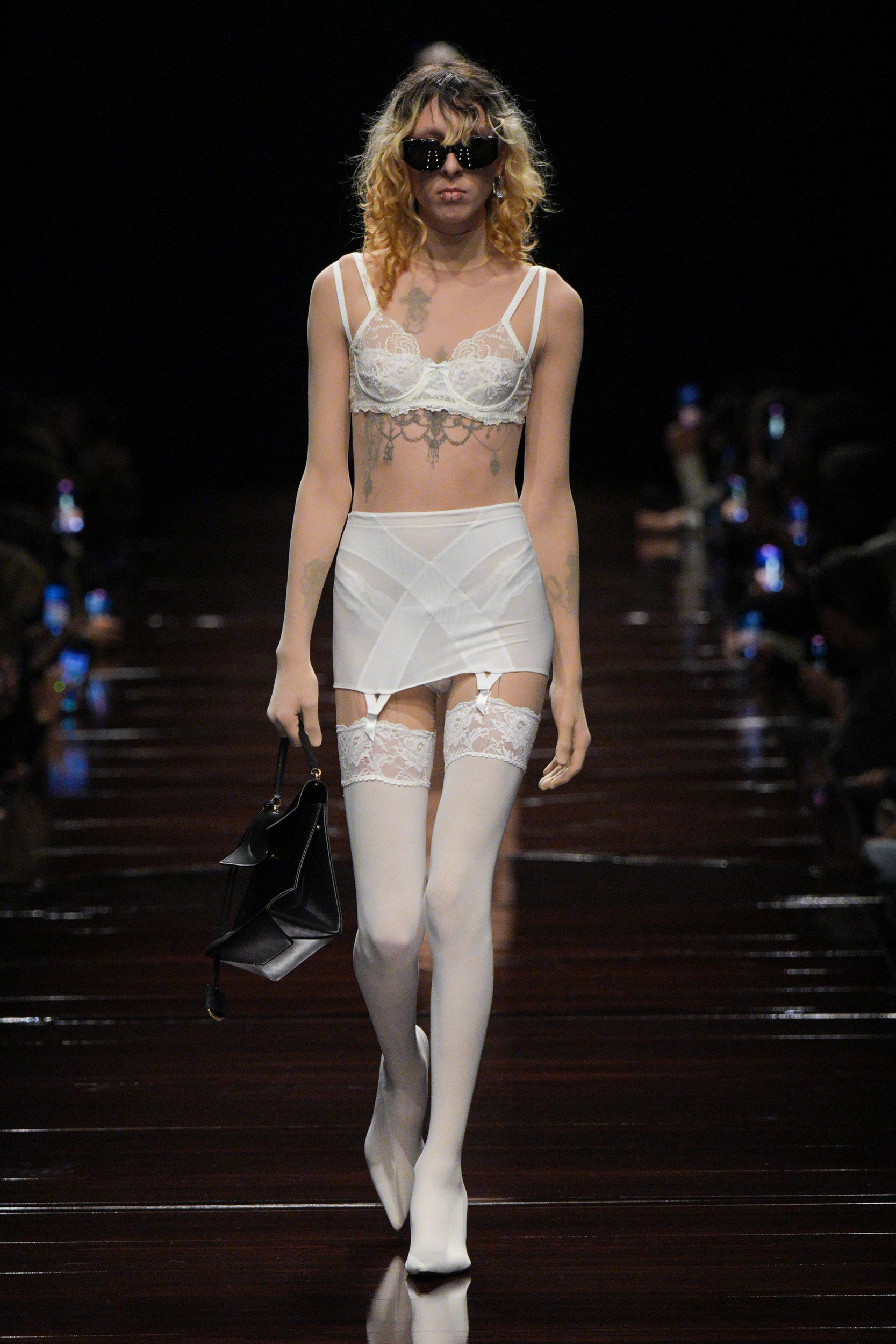
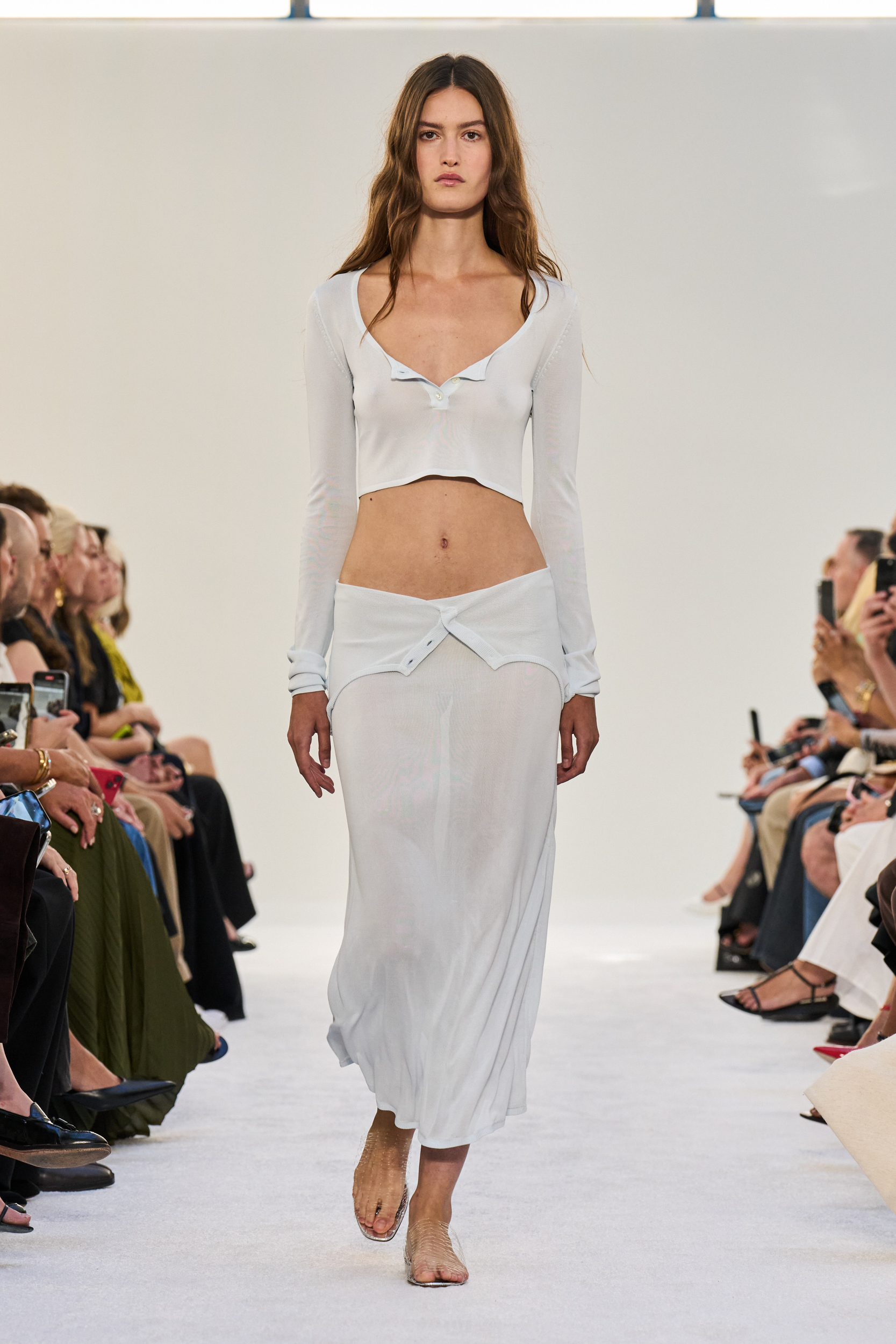
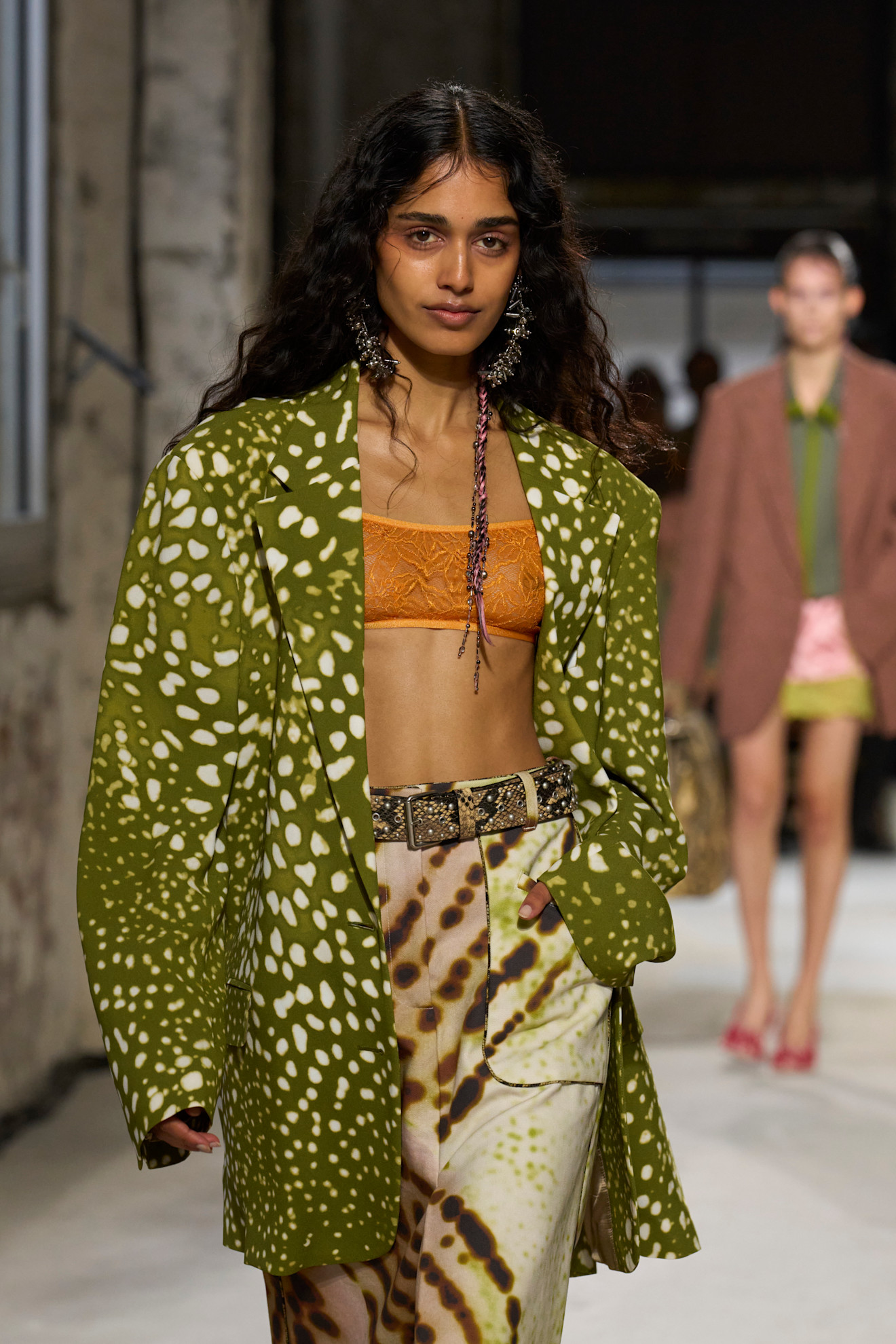
From Sheer to Shrouding
Not-so-simple sheers will be called up for duty next spring, but designers will be in a protective mood, as they take to shrouding their most special pieces. Transparency on the runways has been an ongoing tool to discuss the creeping restrictions around women’s bodily autonomy, and for spring 2025 there was an evolution of the sheer trend, with shrouding the new – and more wearable – way to incorporate see-through layers as a styling option.
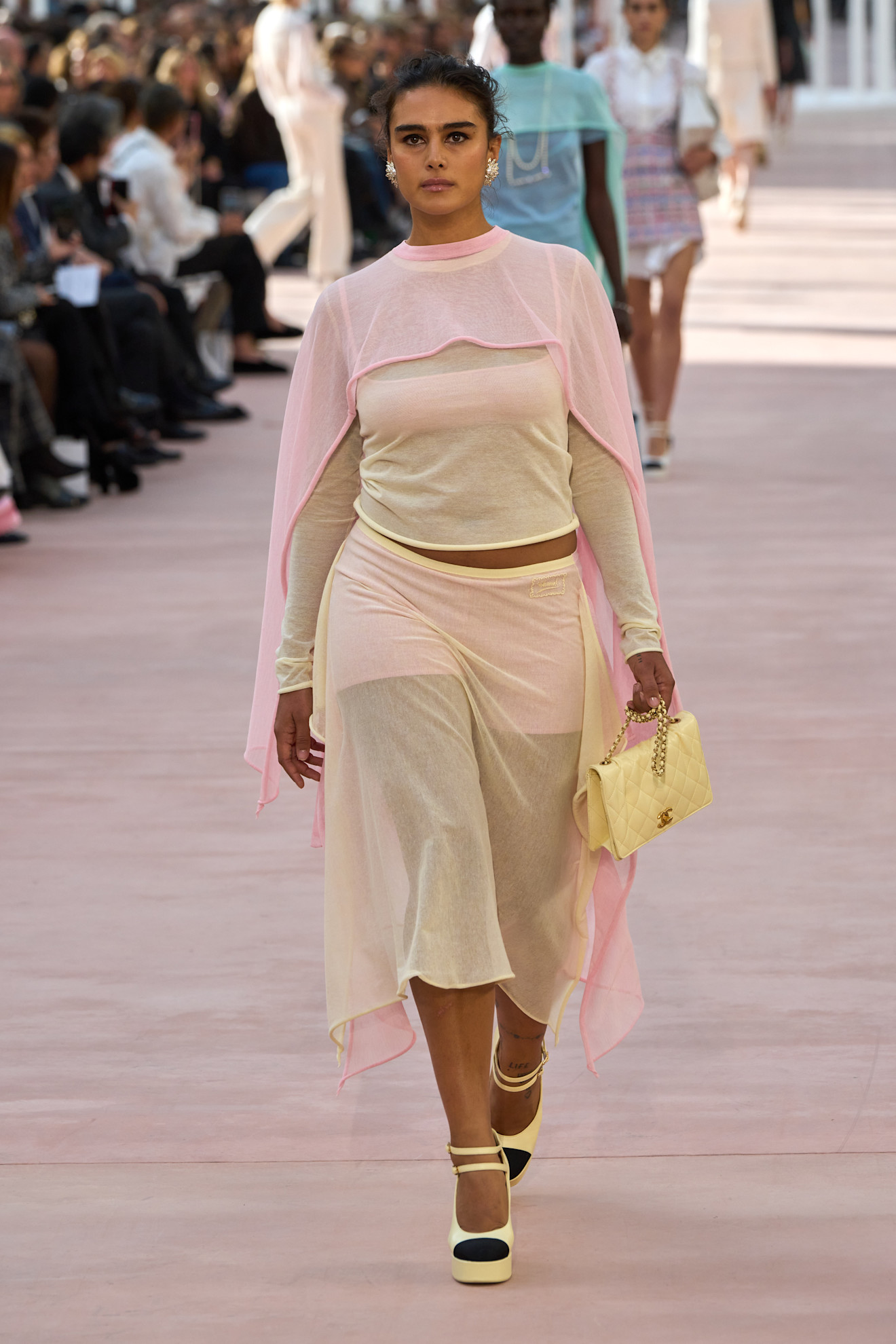
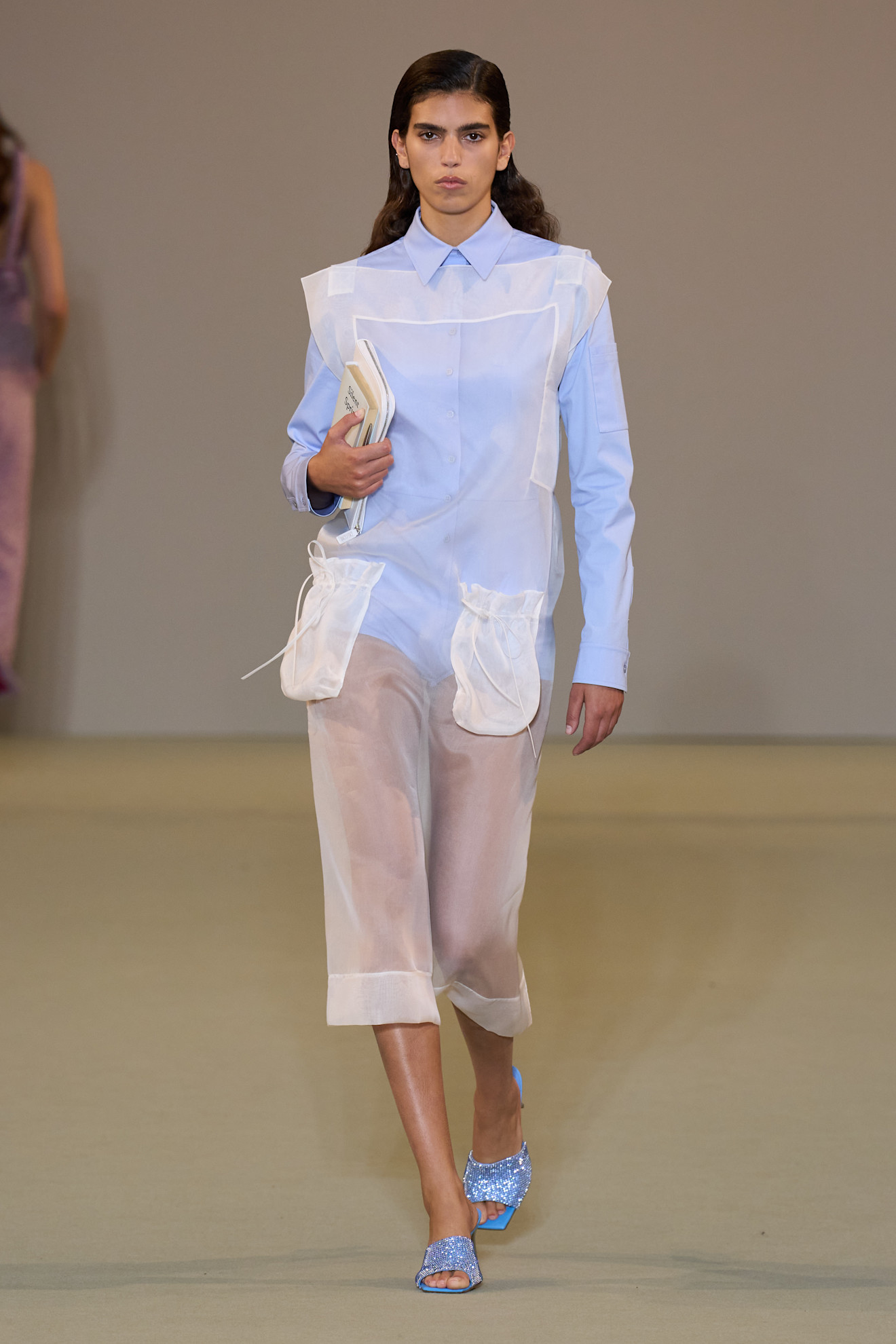
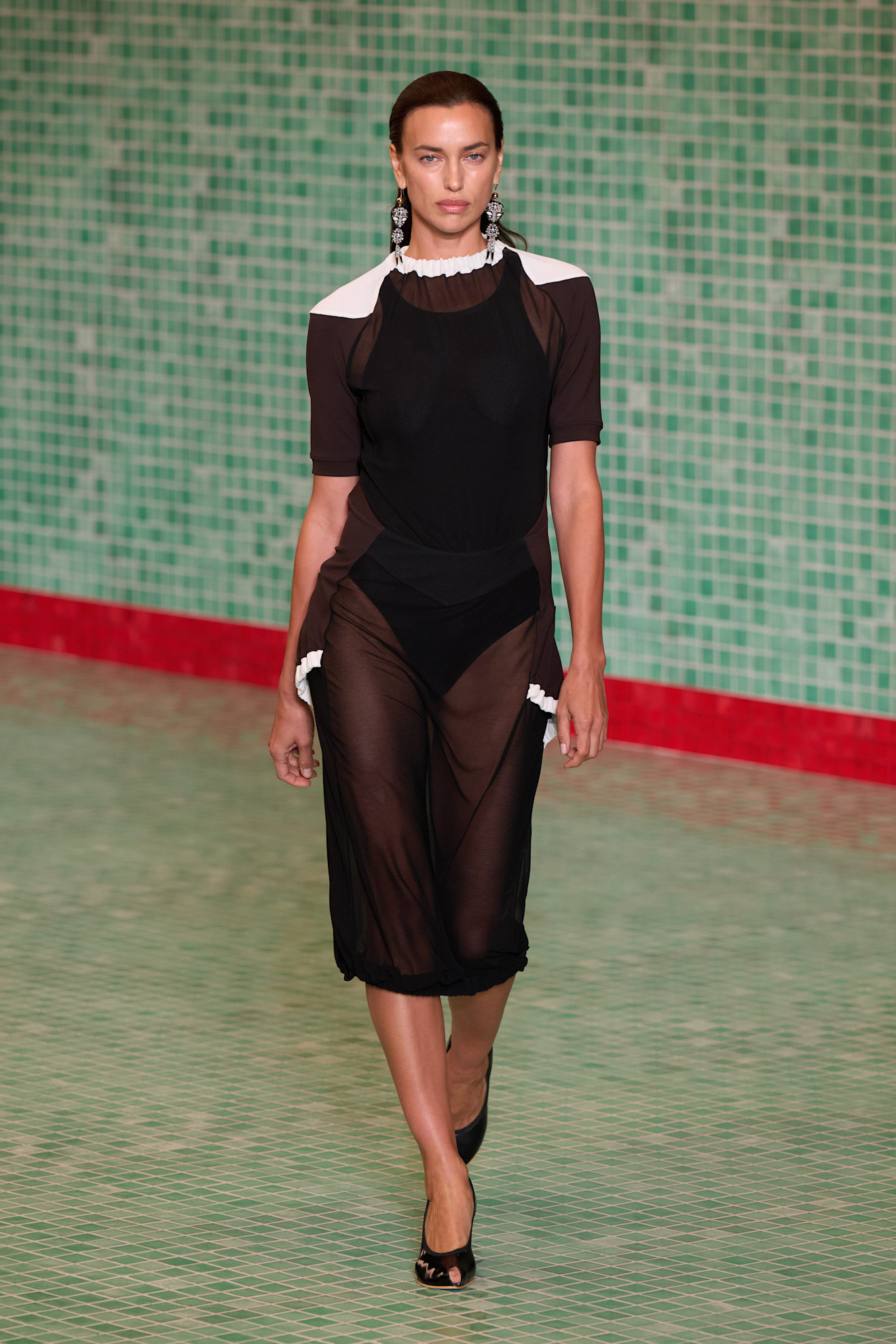
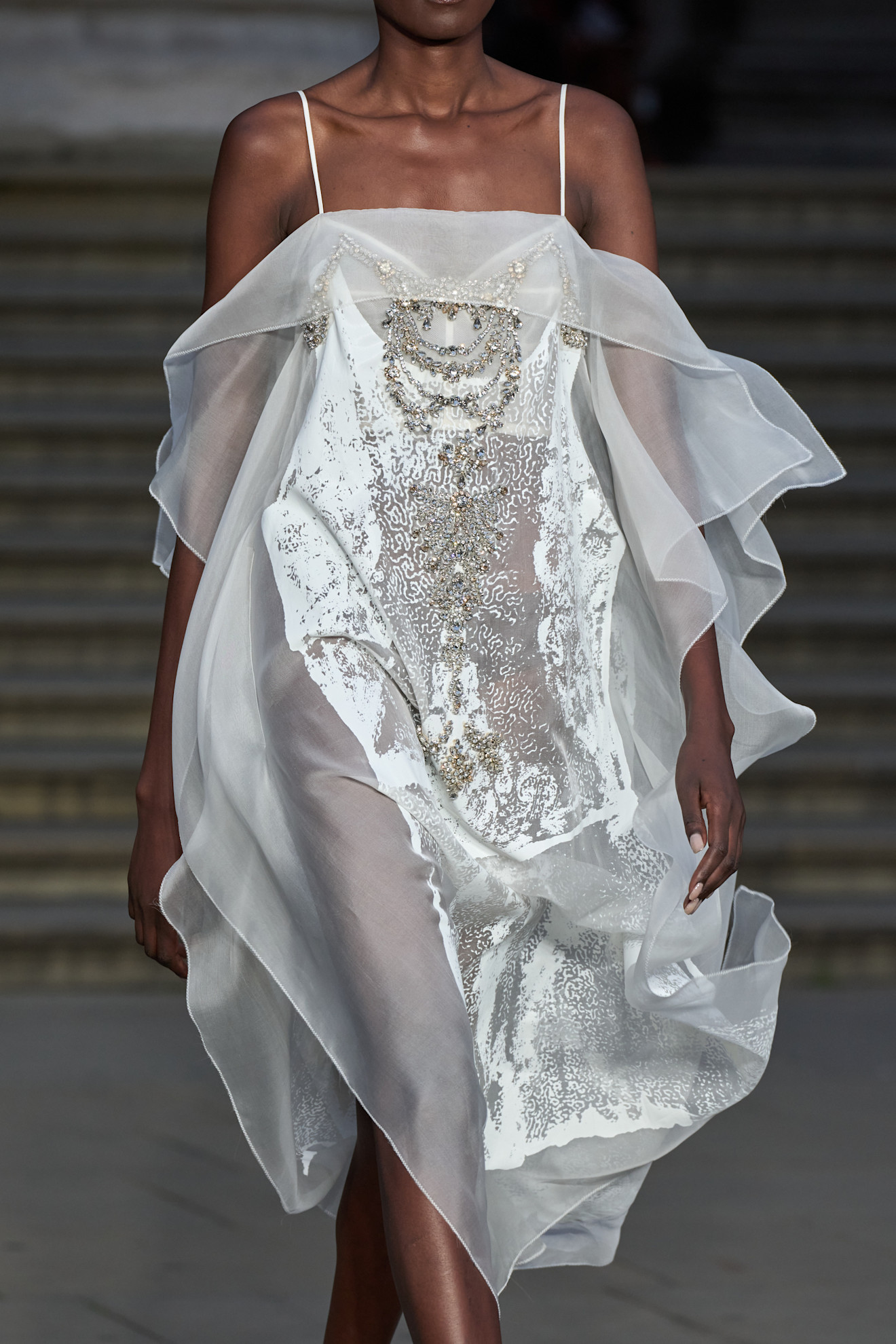
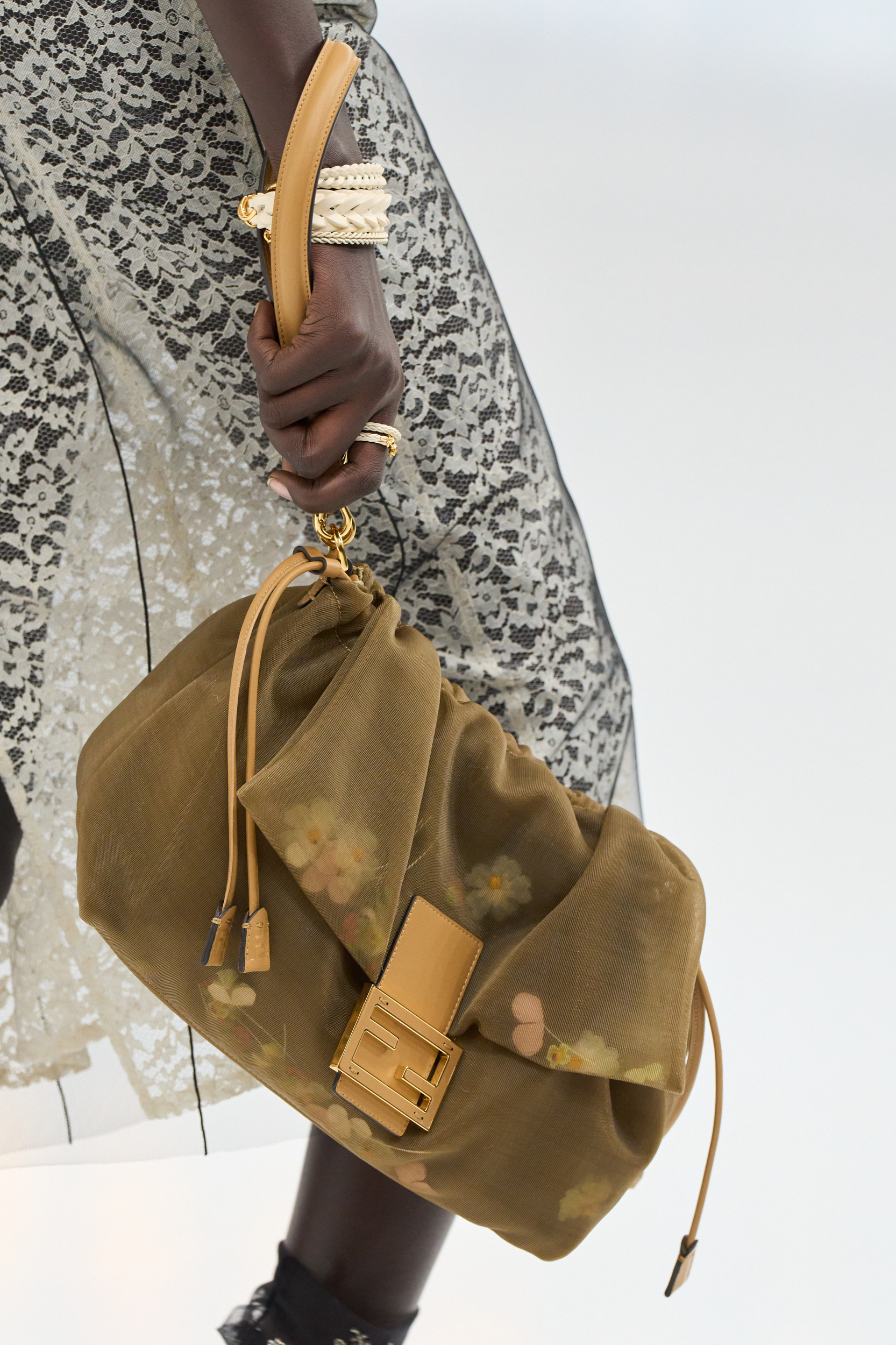
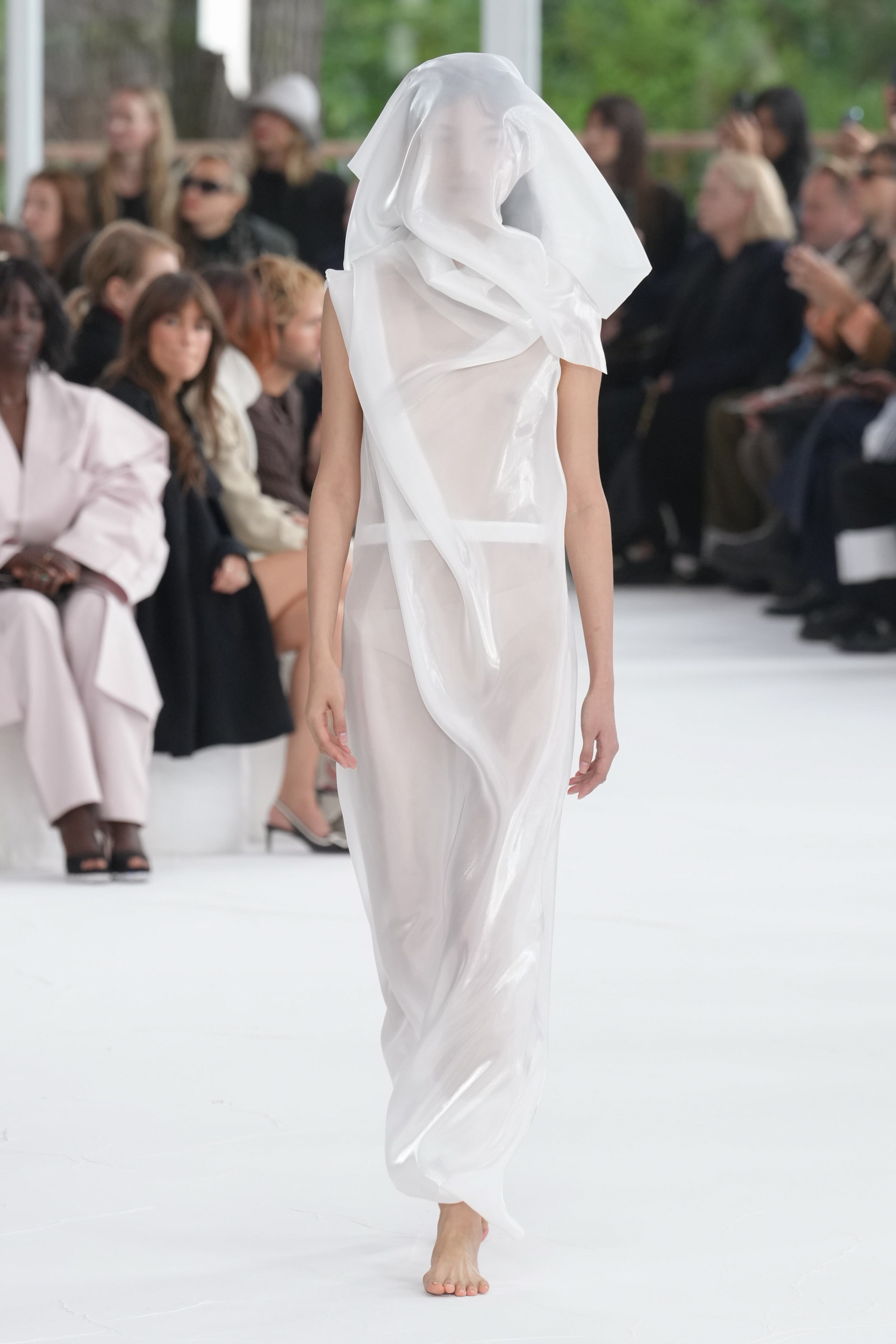
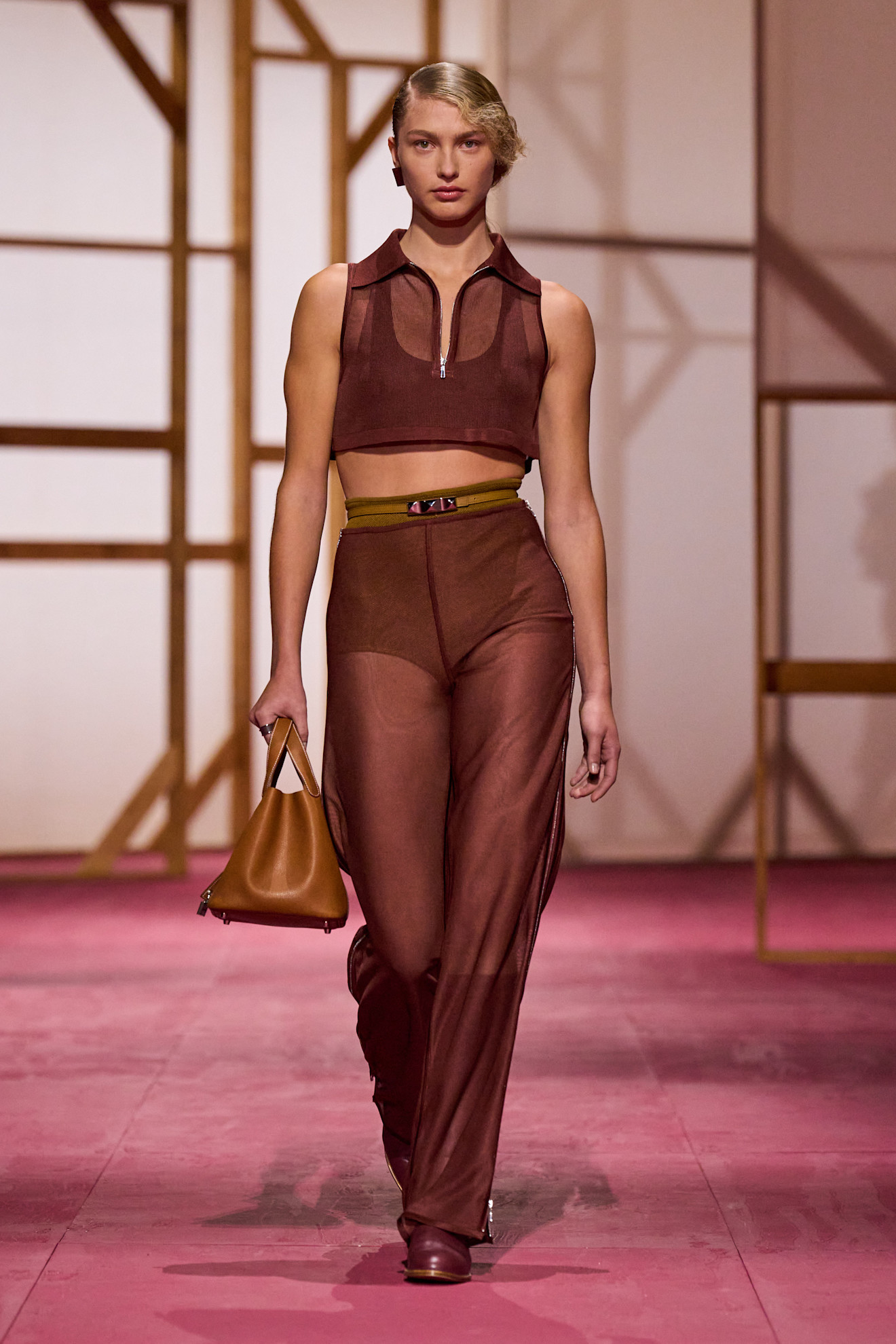
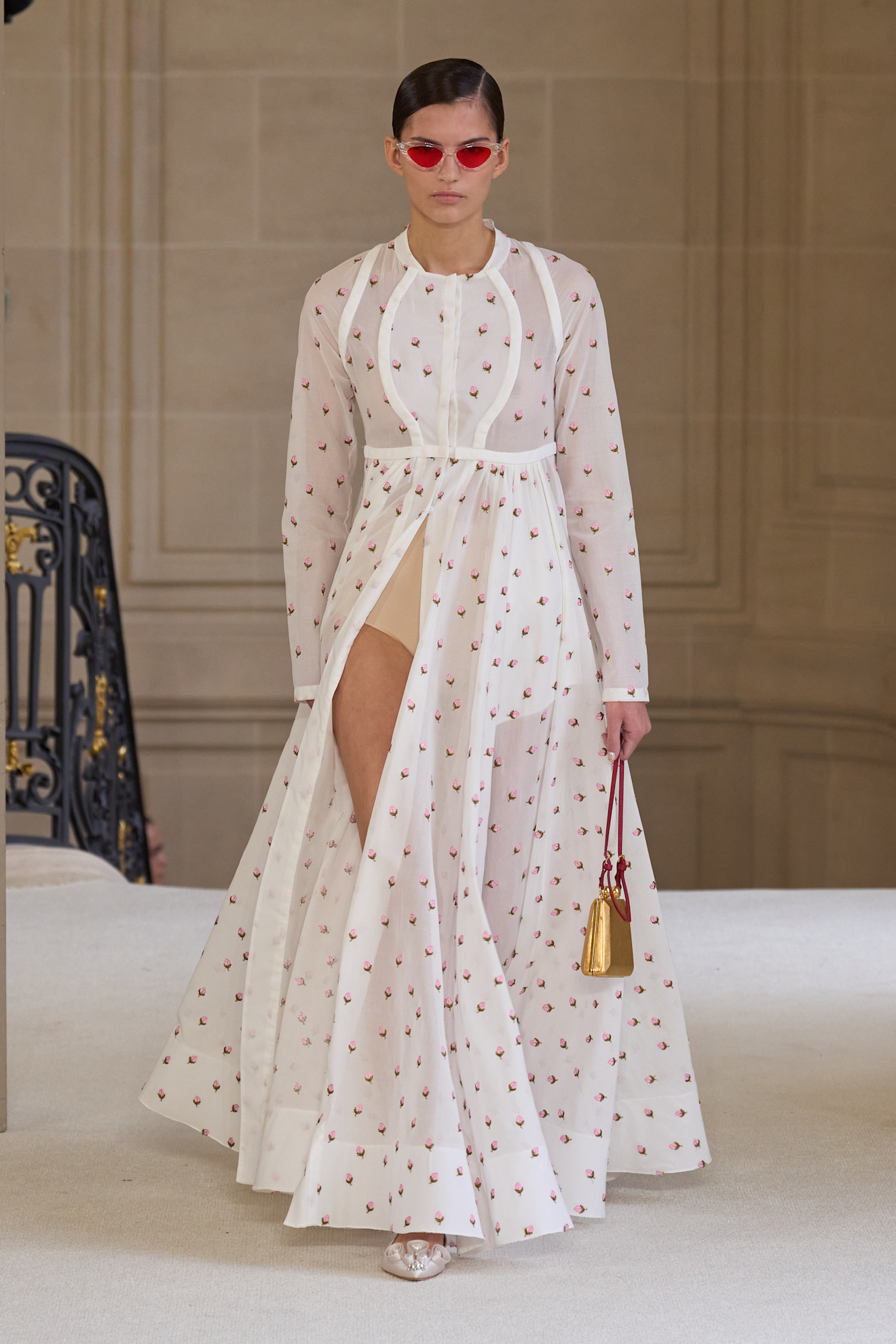
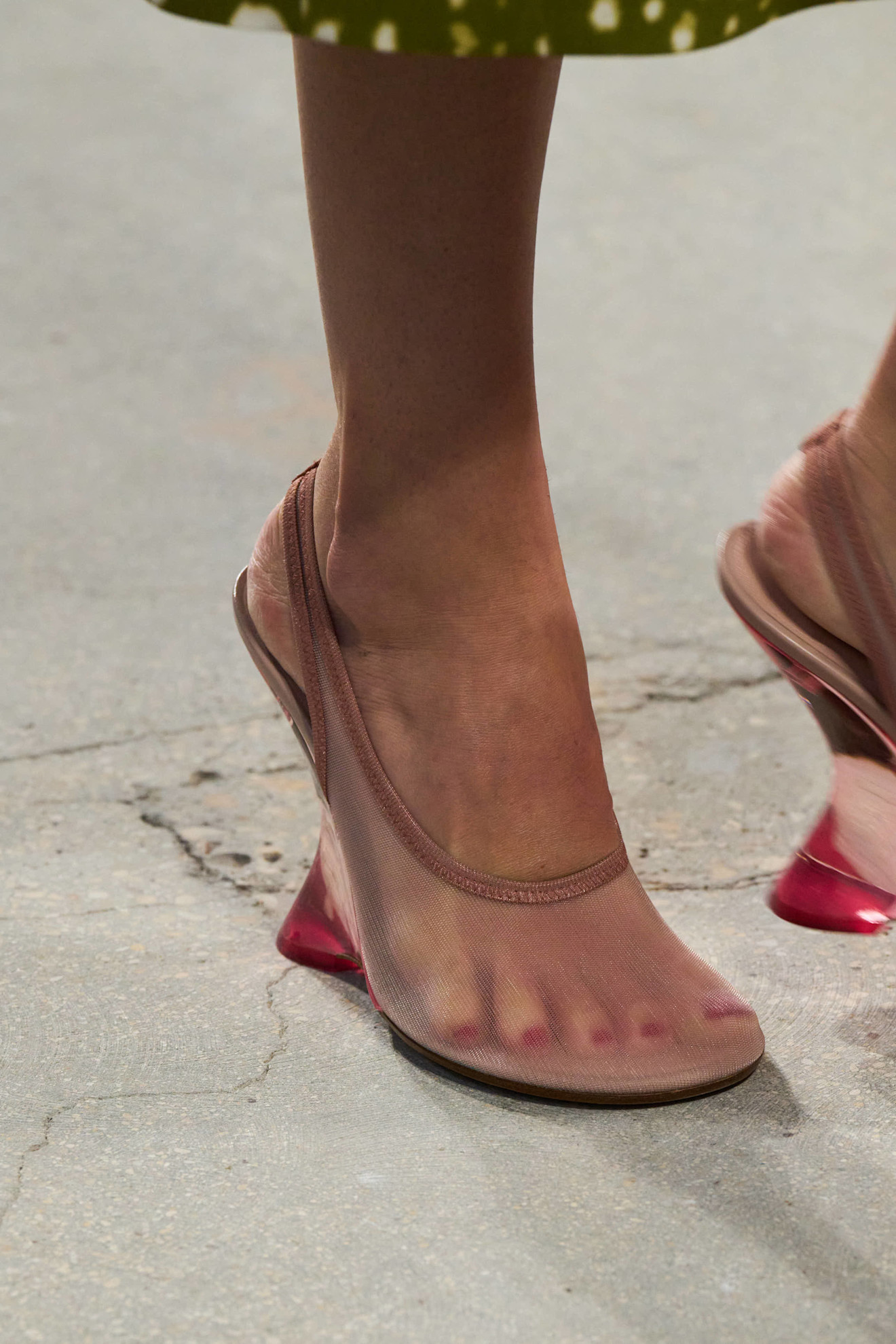
The most innovative double-duty versions were those looks which overlaid heavy embellishment with a sheer layer, as if trapping and protecting each piece like a precious artefact. Casey Cadwallader encased jewelled raindrops under a raincoat, telling The Impression post-show:
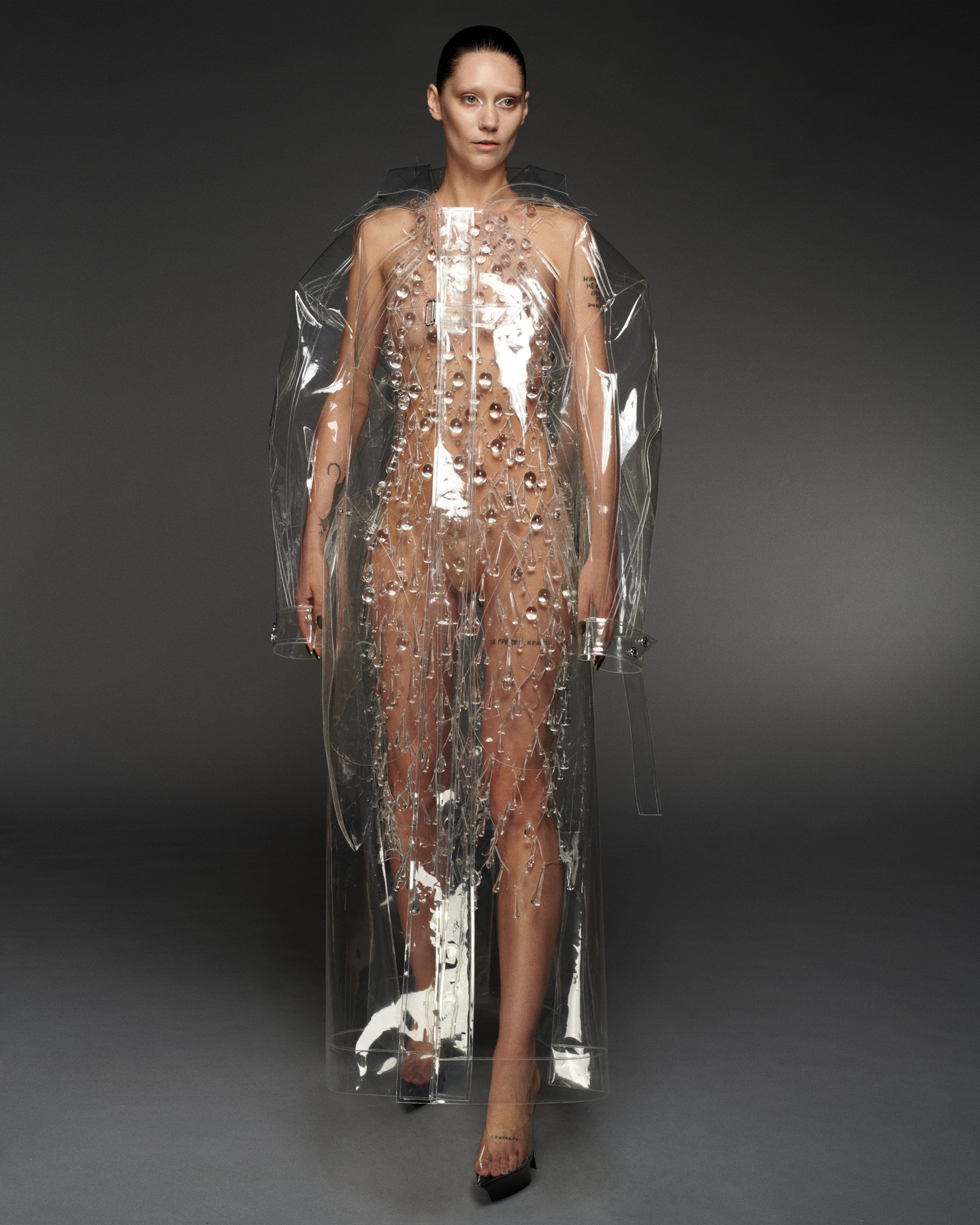
I’ve been thinking of the word allure this season, as it’s more mysterious and personal… I liked the idea of going inside, because you have to feel good inside first, so even if you’ve got your eyes [or body] covered people know it”.
– Casey Cadwallader, creative director, Mugler
The same technique was applied at Sportmax. At Rabanne and Prada wispy sheers overlaid a cotton romper and a green knitted set, which at the latter was a smart way to mute the vibrancy of the tone. Shrouding was not limited to clothing as accessories and show sets were also partially concealed at Dries Van Noten and Victoria Beckham, Fendi and Simone Rocha who sheathed faux flowers between layers of chiffon, and for his debut at Valentino Alessandro Michele evoked a ghostly atmosphere by covering the furniture used in the shows set with dust sheets lit from the inside.
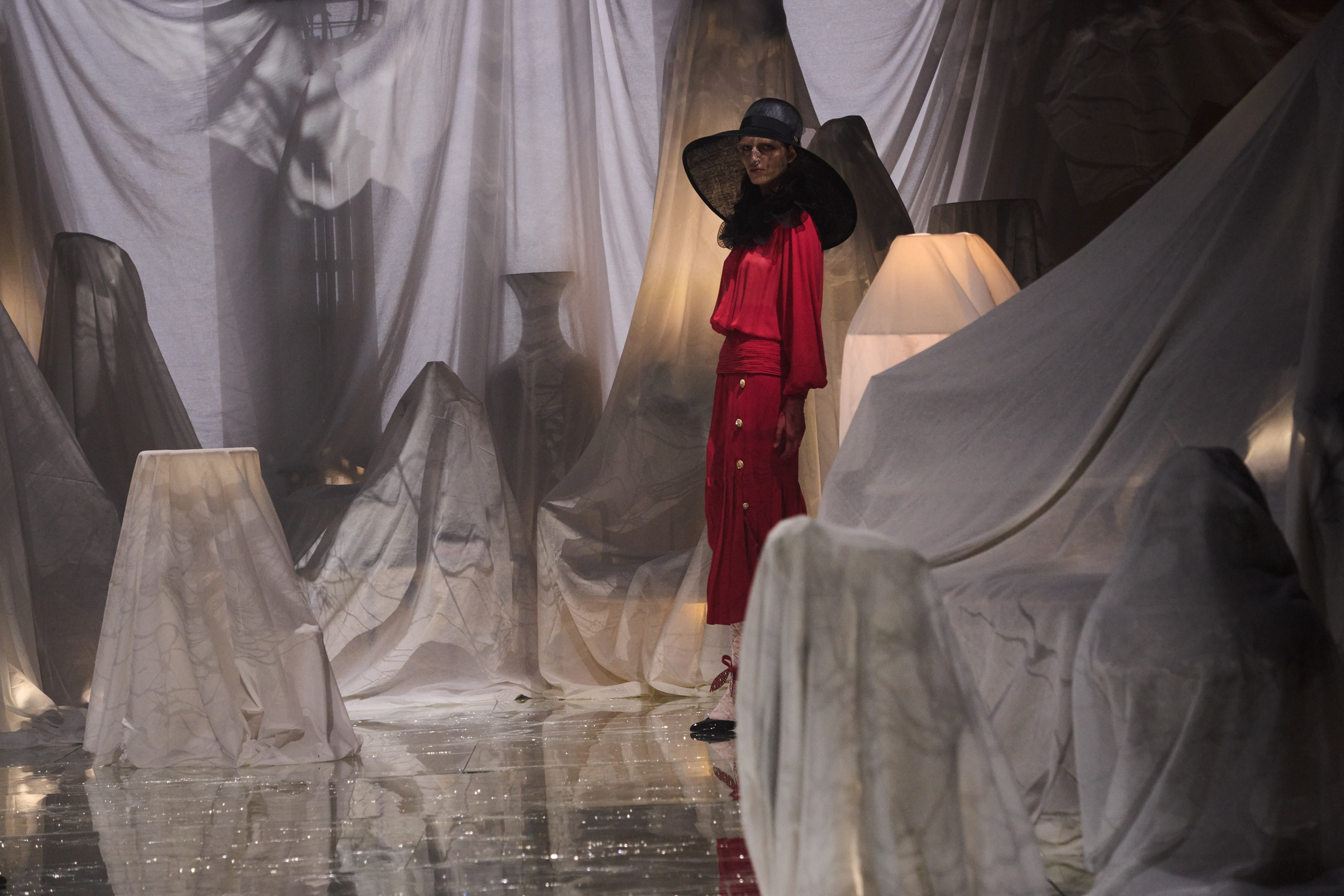
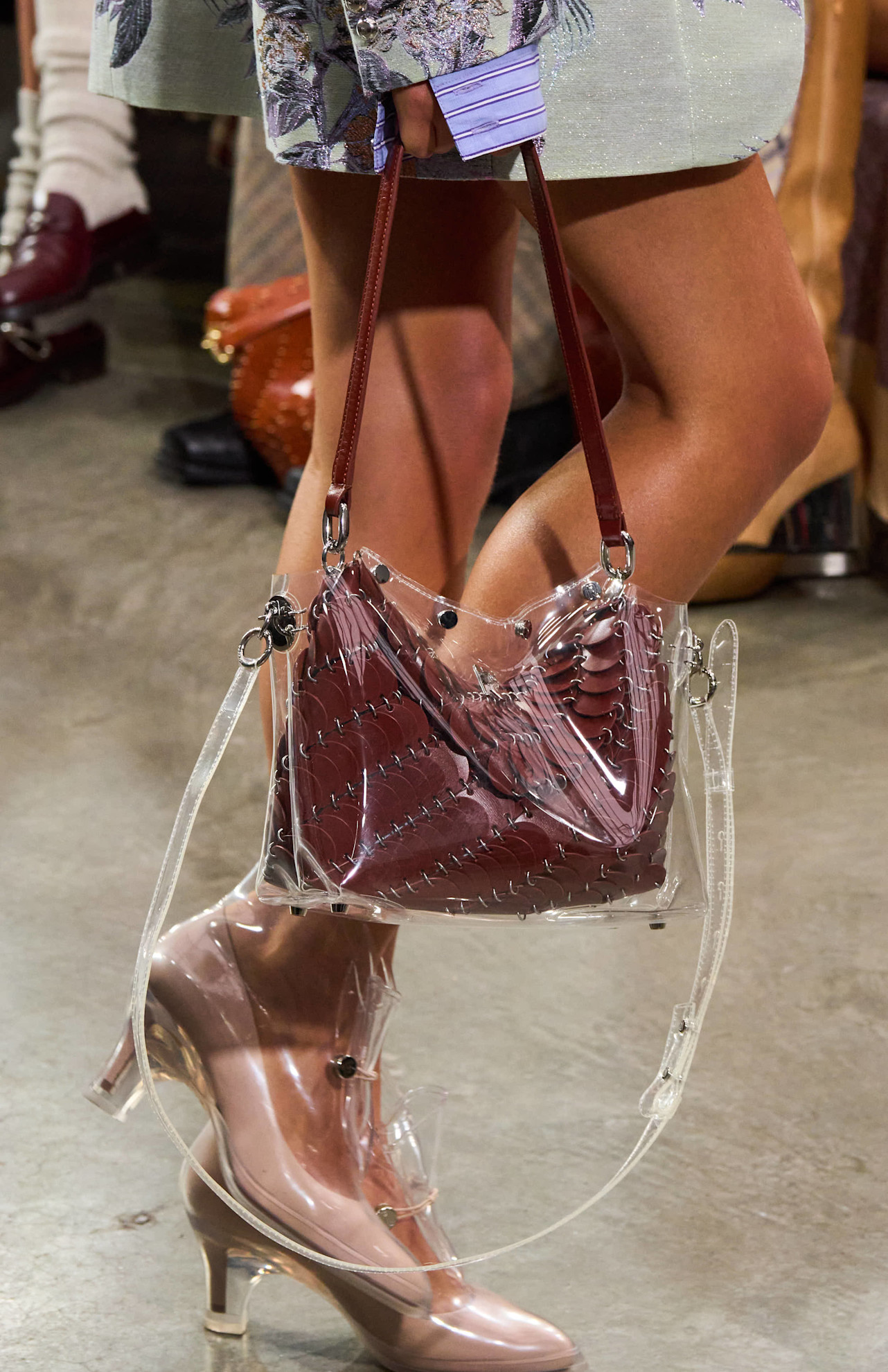

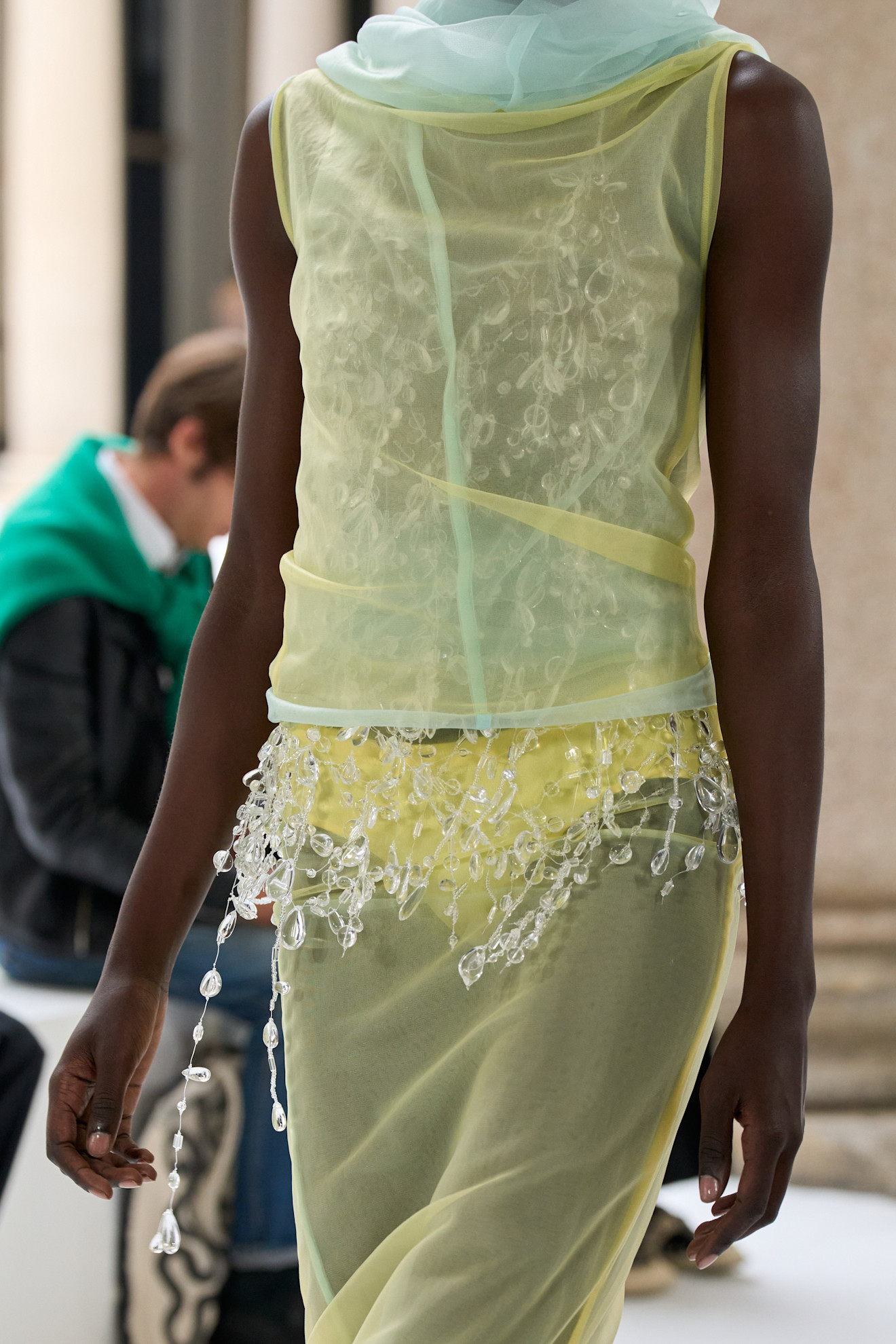
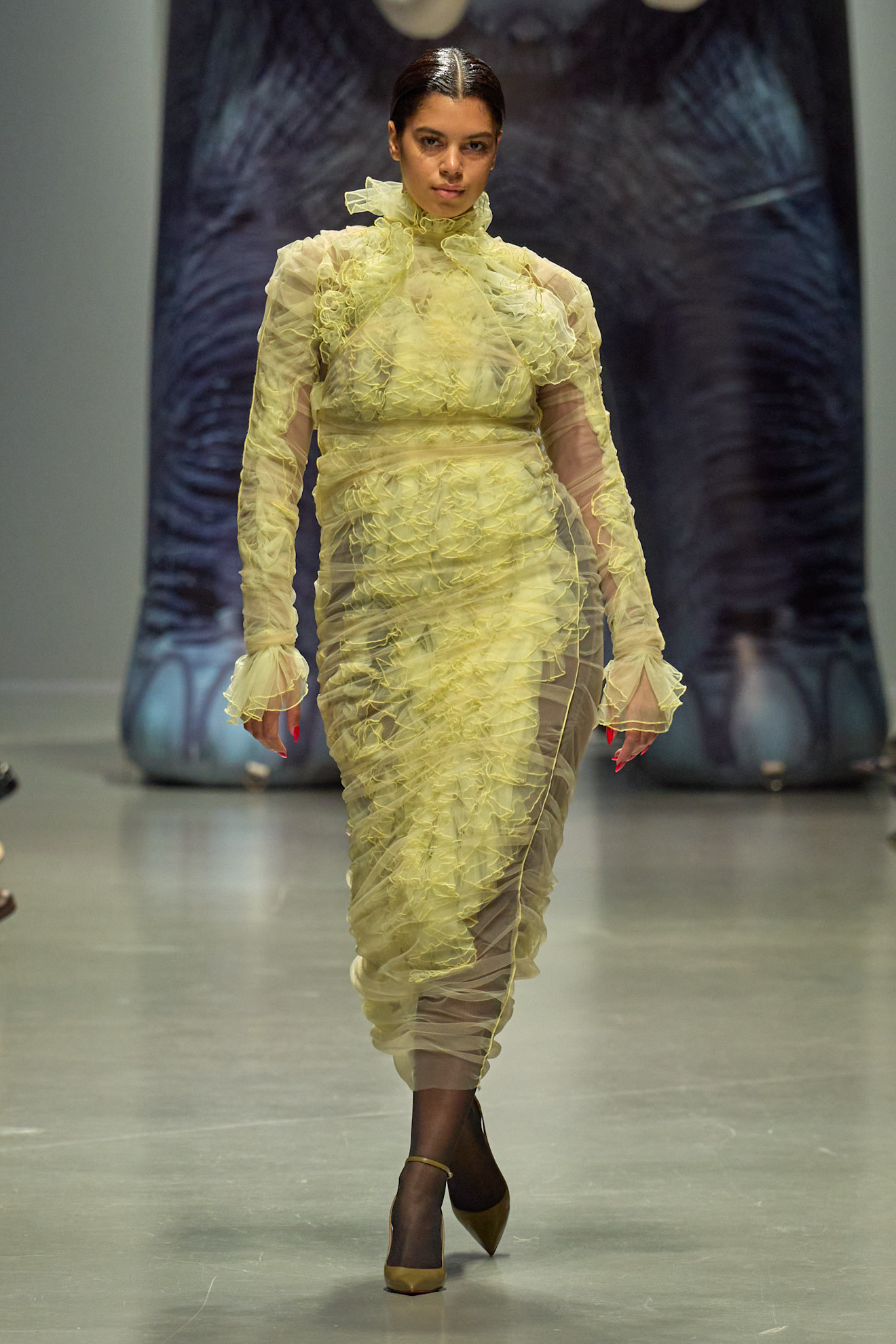
What is important to remember, is that in playing with ‘conceal and reveal’ a full range of body types should be represented. As it is an open secret that the customers who buy into luxury fashion are not all model standard, yet they rarely see themselves on the runway. The rise of brands such as Ester Manas and Karoline Vitto are change-makers, but they still remain outliers in an industry fixated on equating luxury desirability with a size 0.
(Hybrid) Working Women
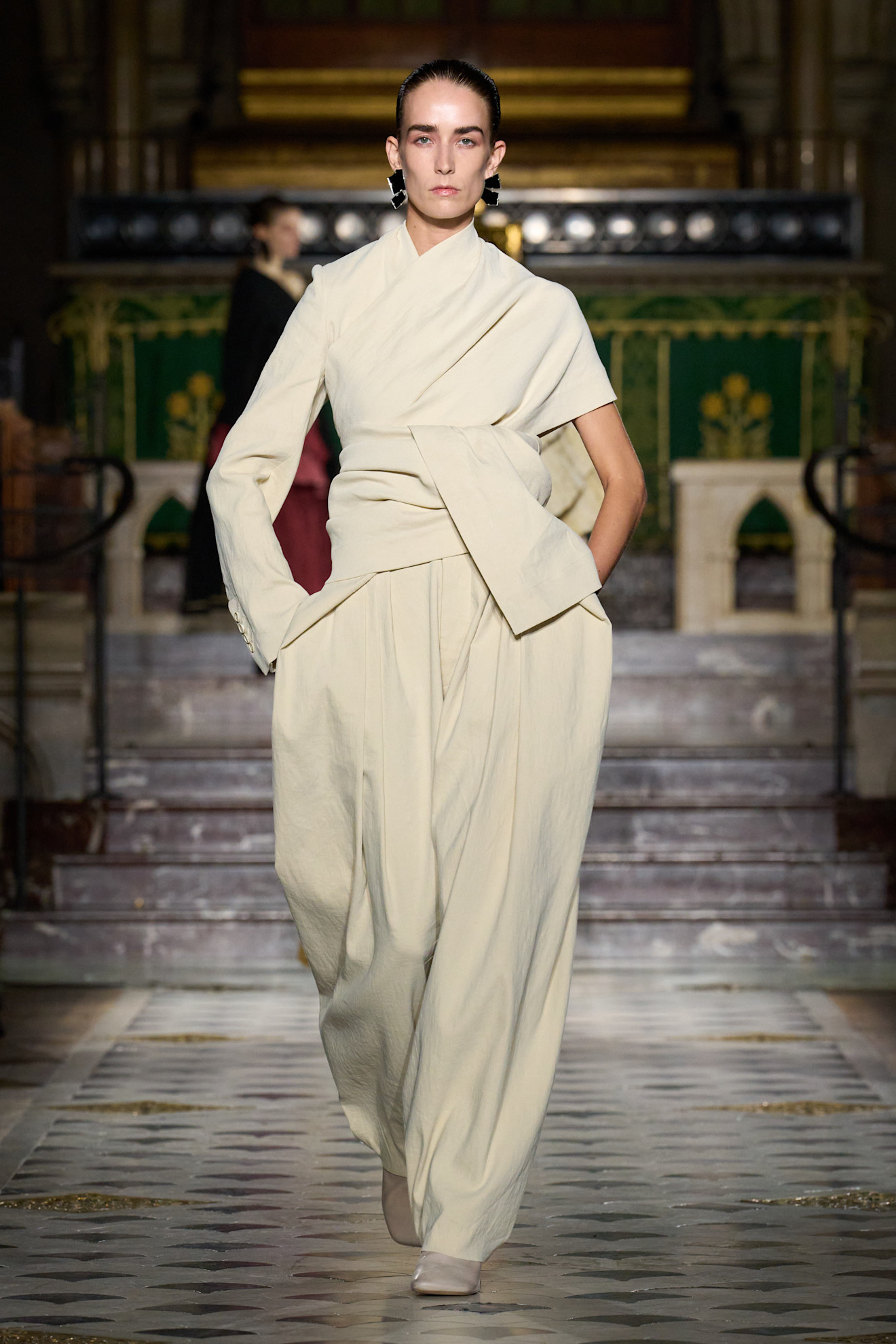
The new rules around tailoring and what to wear to work are there to be broken. Post-2020 all bets are off and even with the tailored suit making a return, something has shifted. No longer the strict uniforms of old the tailoring that was presented for spring 2025 was part of the ‘New Workwear’ mood permeating hybrid-offices everywhere. Suits and separates have to work harder and provide an ease in their construction which makes them suitable for downtime.
This dilemma was addressed at BOSS with technical zip-front shirting, silky hooded tunic dresses, yoga leggings layered under wrap dresses, and Marco Falcioni’s suede tote bags even came with sneaker holders! Matthieau Blazy’s version of childhood dressing-up games took the idea of power dressing and added in the “playfulness, and chic awkwardness” that was seen on the runway with mis-proportioned, crumpled, and skewed silhouettes offering a new perspective and reflecting the way we now collectively feel as if we’re playing dress-up when tasked with returning to formal dress codes. Speaking of power dressing, Anthony Vacarello’s Saint Laurent paid homage to its founder in his expertly cut, perfectly oversized boxy suits. Accessorised with sharp shoulders, oxford shirts and ties, and finished off with Yves-style eyeglasses.
Uma Wang and Vautrait found the perfect balance between comfort and chic with their cocooning suits and sculptural separates. Making use of folding and gathering techniques to control volume, and expand or constrict each shape depending on the wearers preference, offering true versatility which is now a non-negotiable.
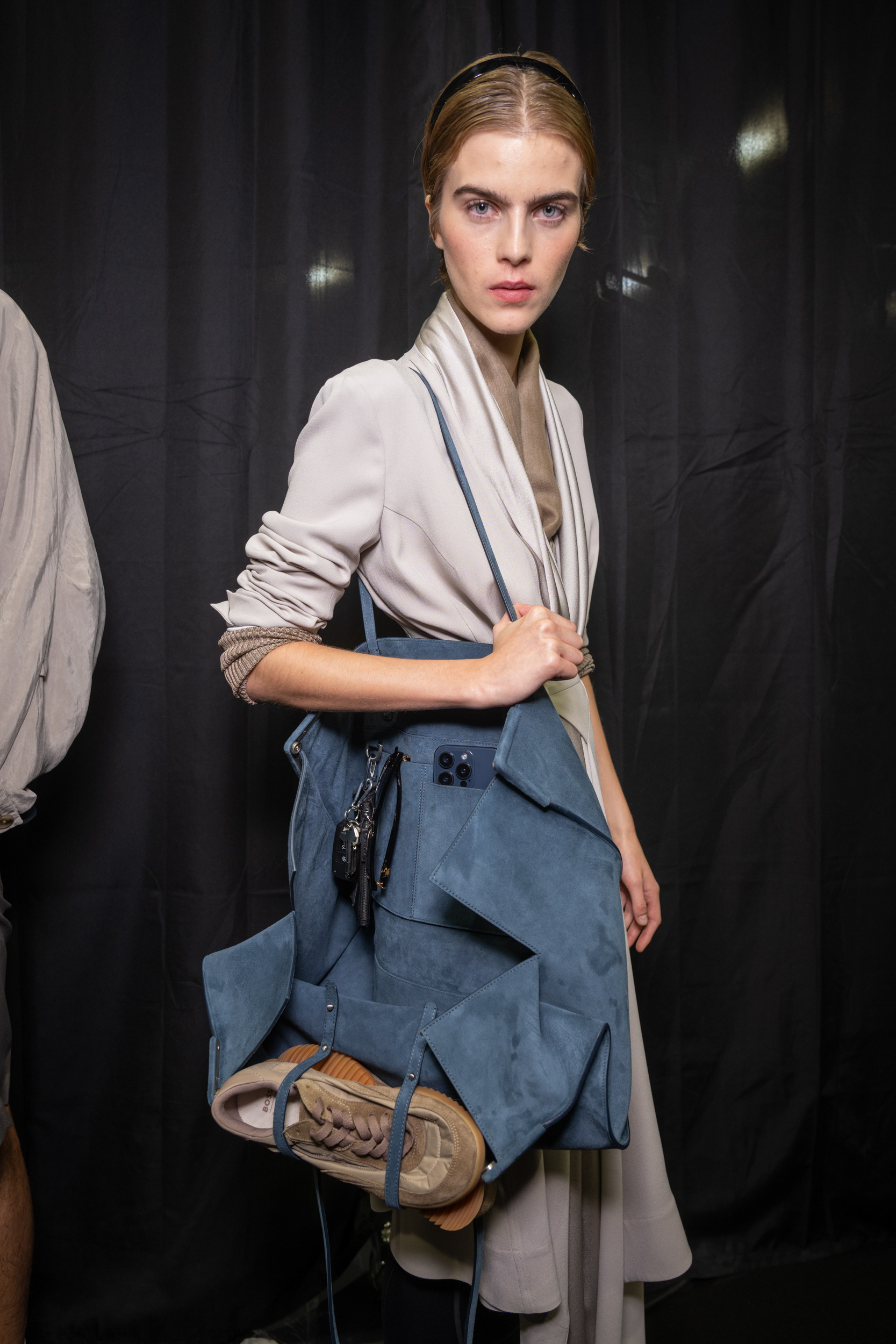
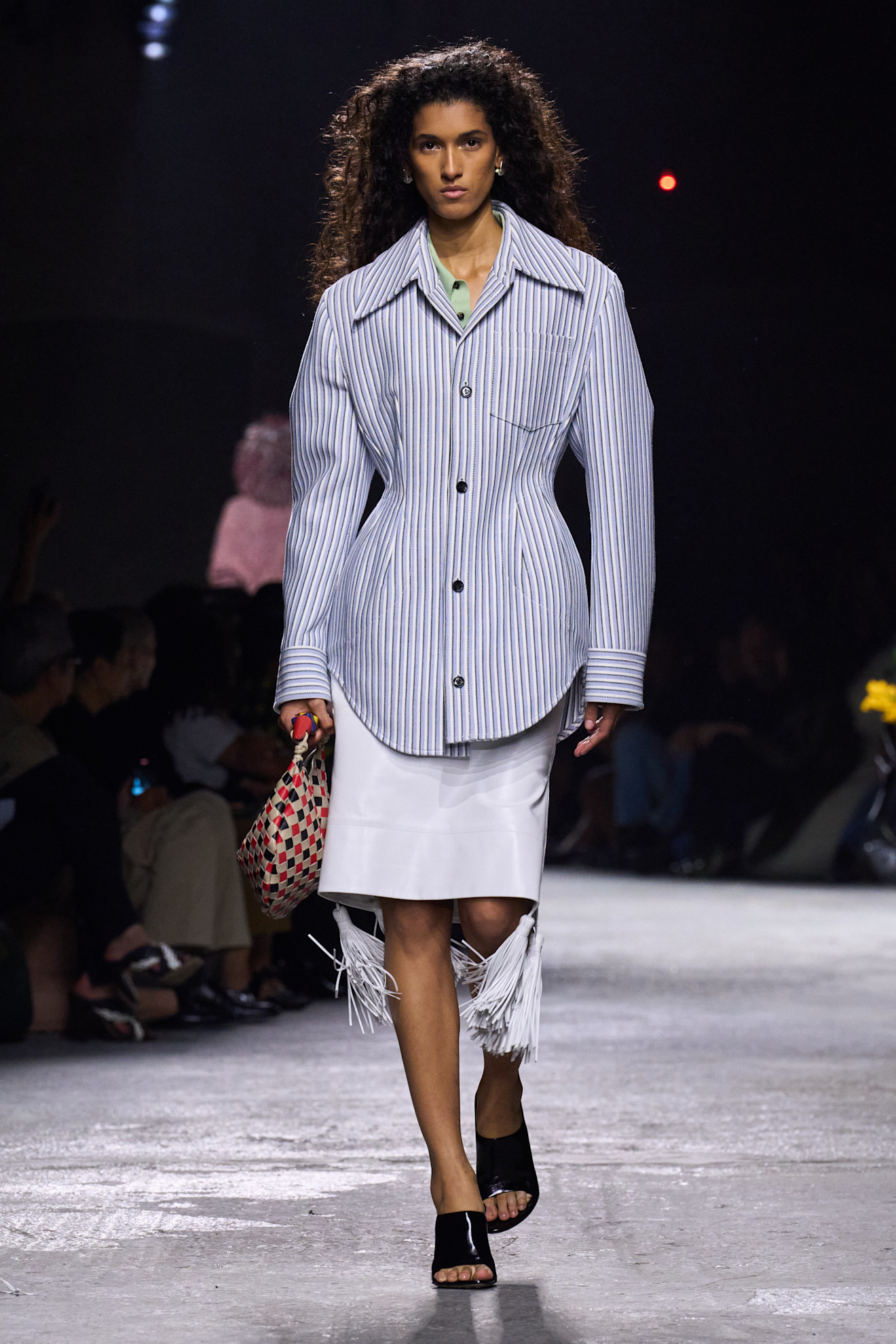
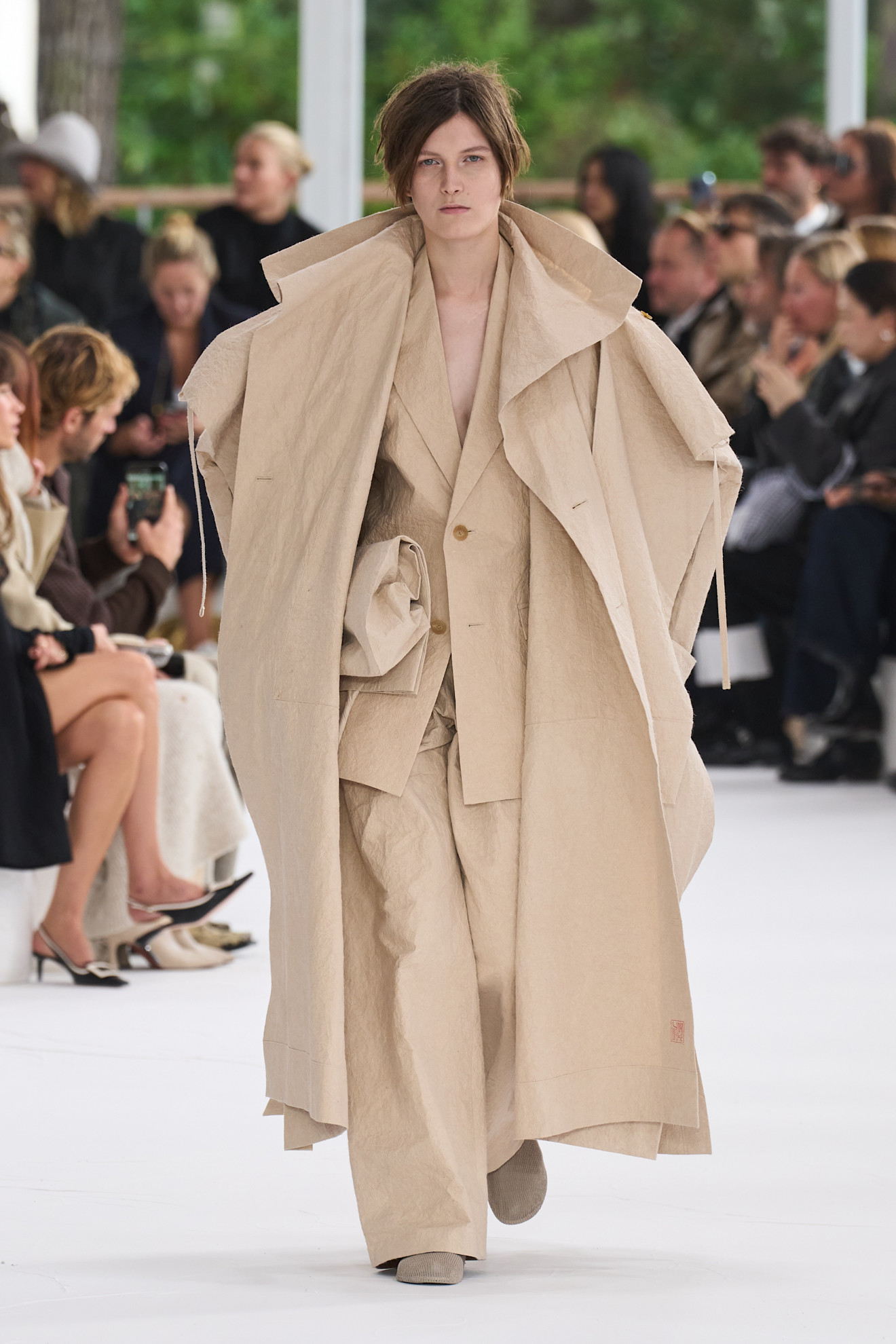
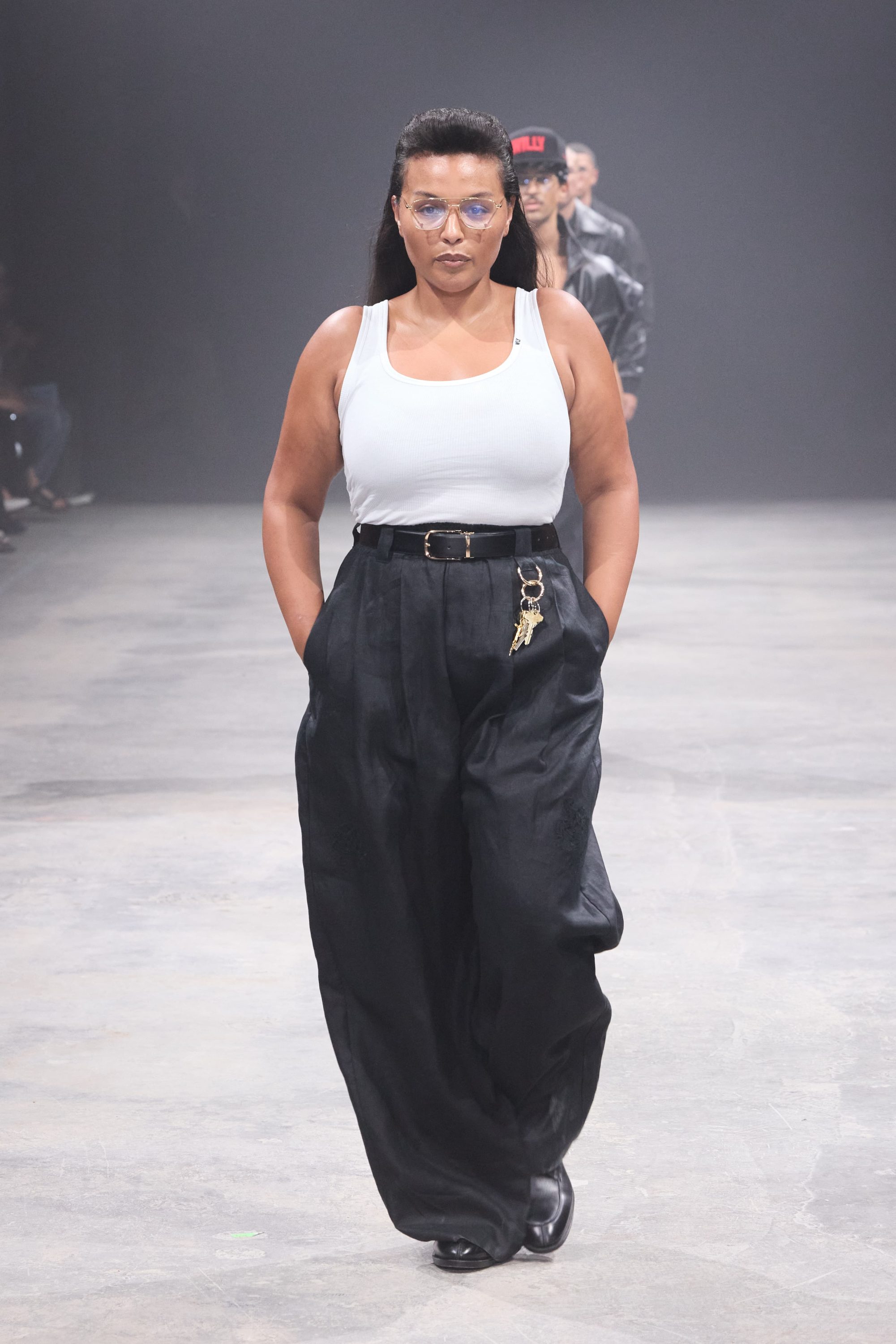
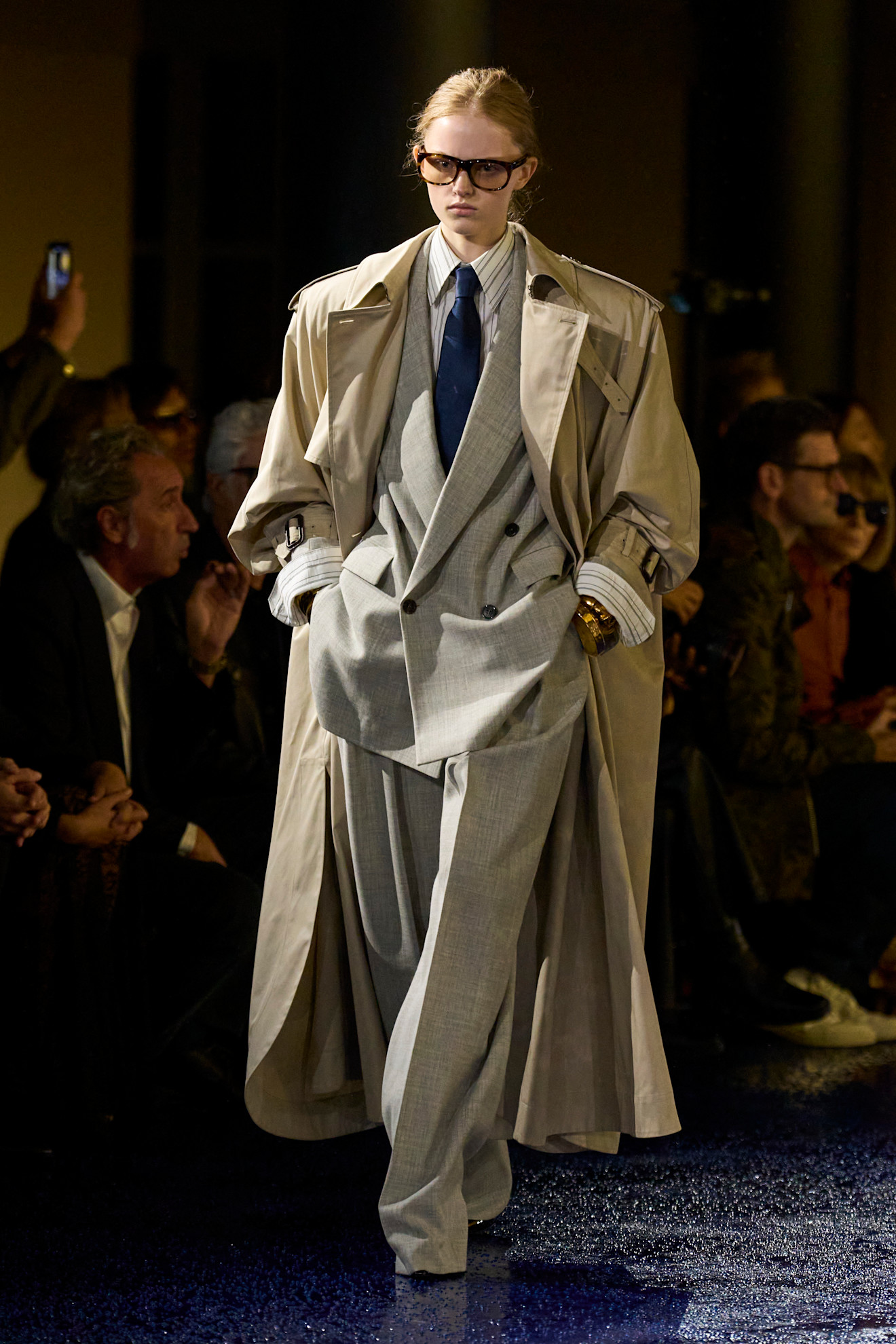
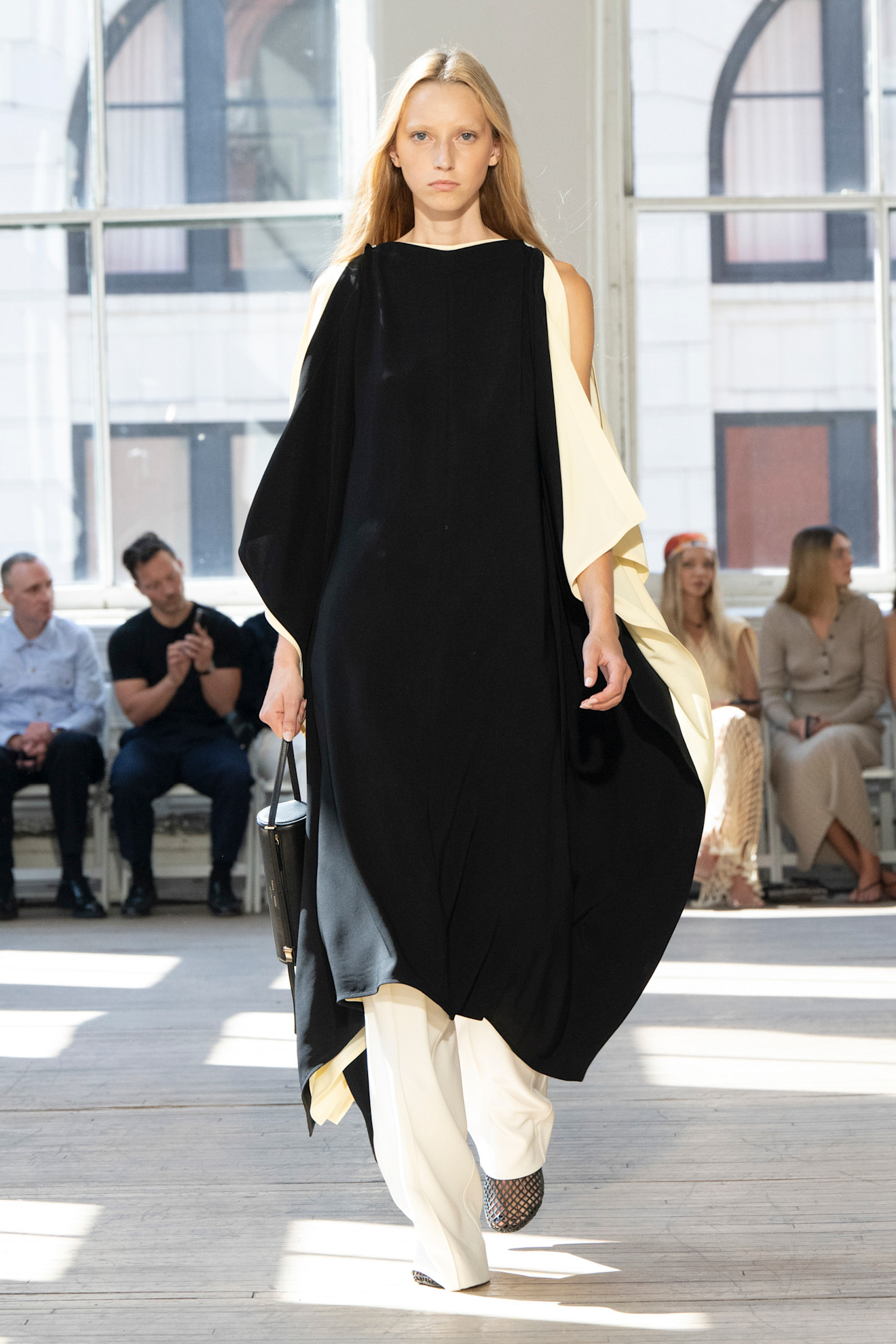
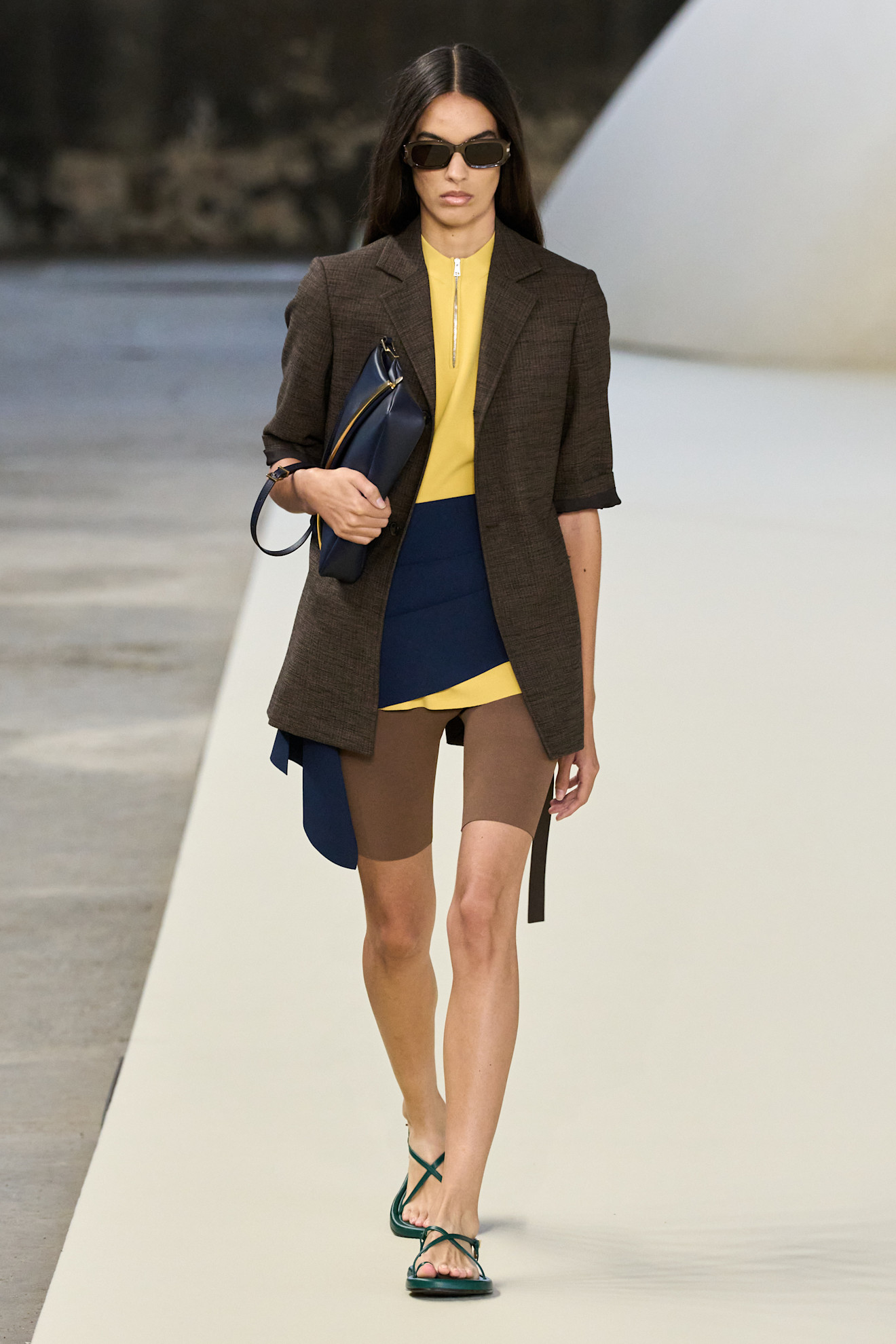
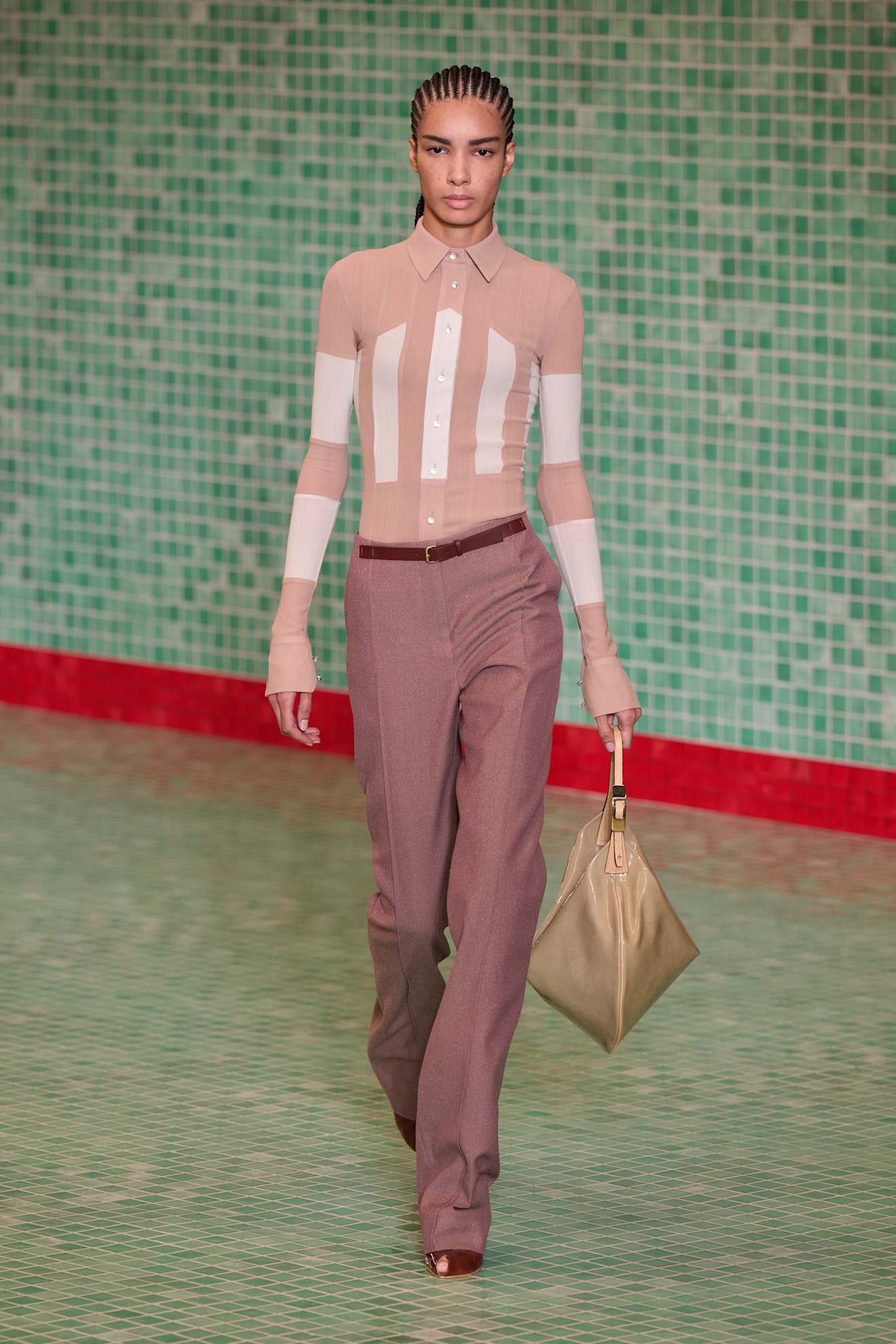
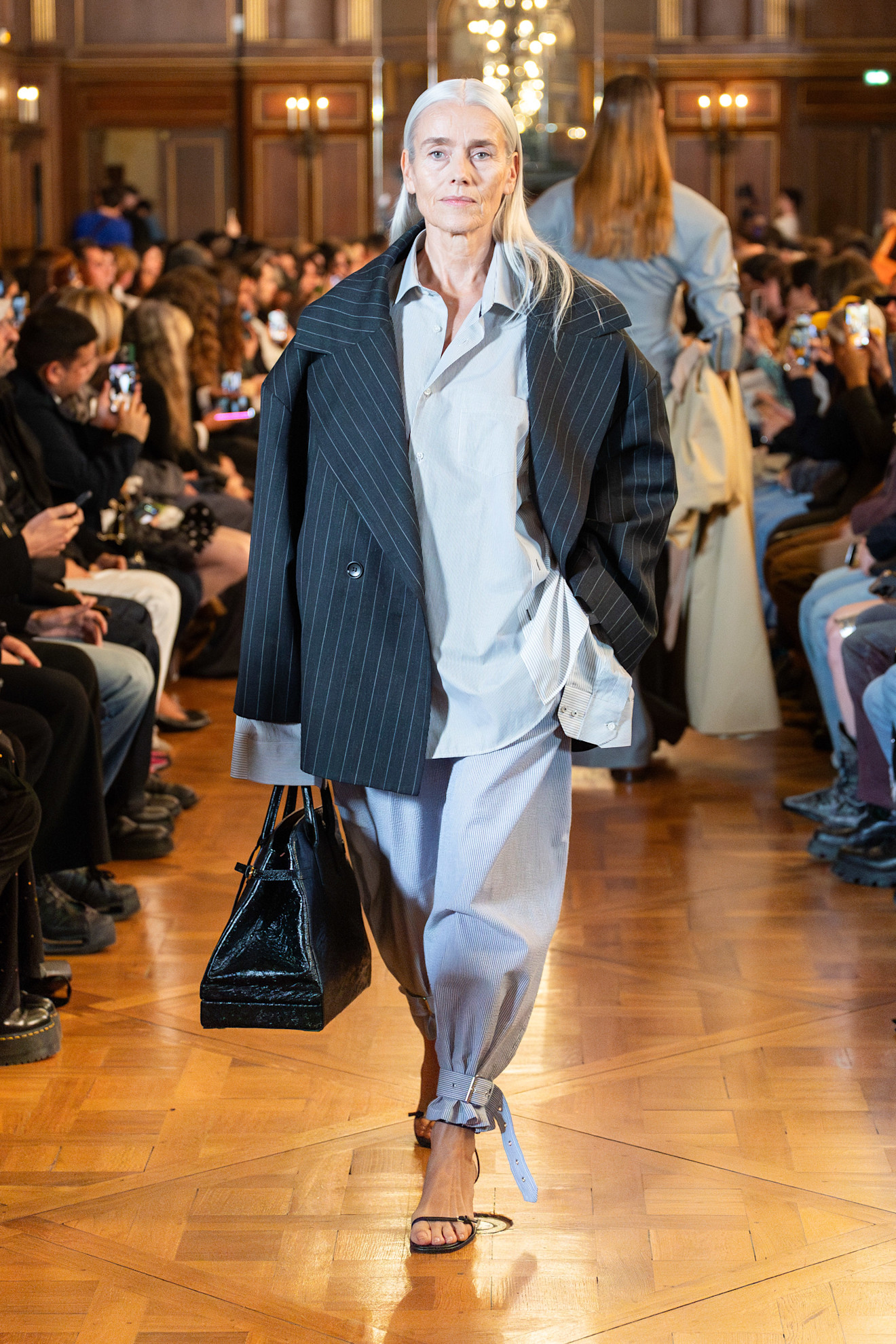
A Sense of Time and Place
Save for a few luxury fashion houses who deem it financially viable, staging a fashion show spectacle worthy of the Greatest Showman is a thing of the past. Not only because designers have to weigh up the cost of putting on a show for more than a few hundred people, but more significantly they are also reading the room, and are aware of the optics at a time of economic uncertainty. Least the time and energy spent in developing an awe-inspiring immersive experience be overshadowed by negative press.
It was left to the Parisian brands to step up to the plate to show what could still be done to set the stage for their collections, while remaining grounded. Speaking of grounded there were two exceptions in the BOSS show in Milan, and Collina Strada in New York who both invited showgoers to “Touch grass”. A phrase relating to going outside, getting back to nature, and relinquishing the hold our electronic devices have on our attention. Their sets were a respite to the wired energy typical of fashion week and as Marco Falcioni said backstage following his show:
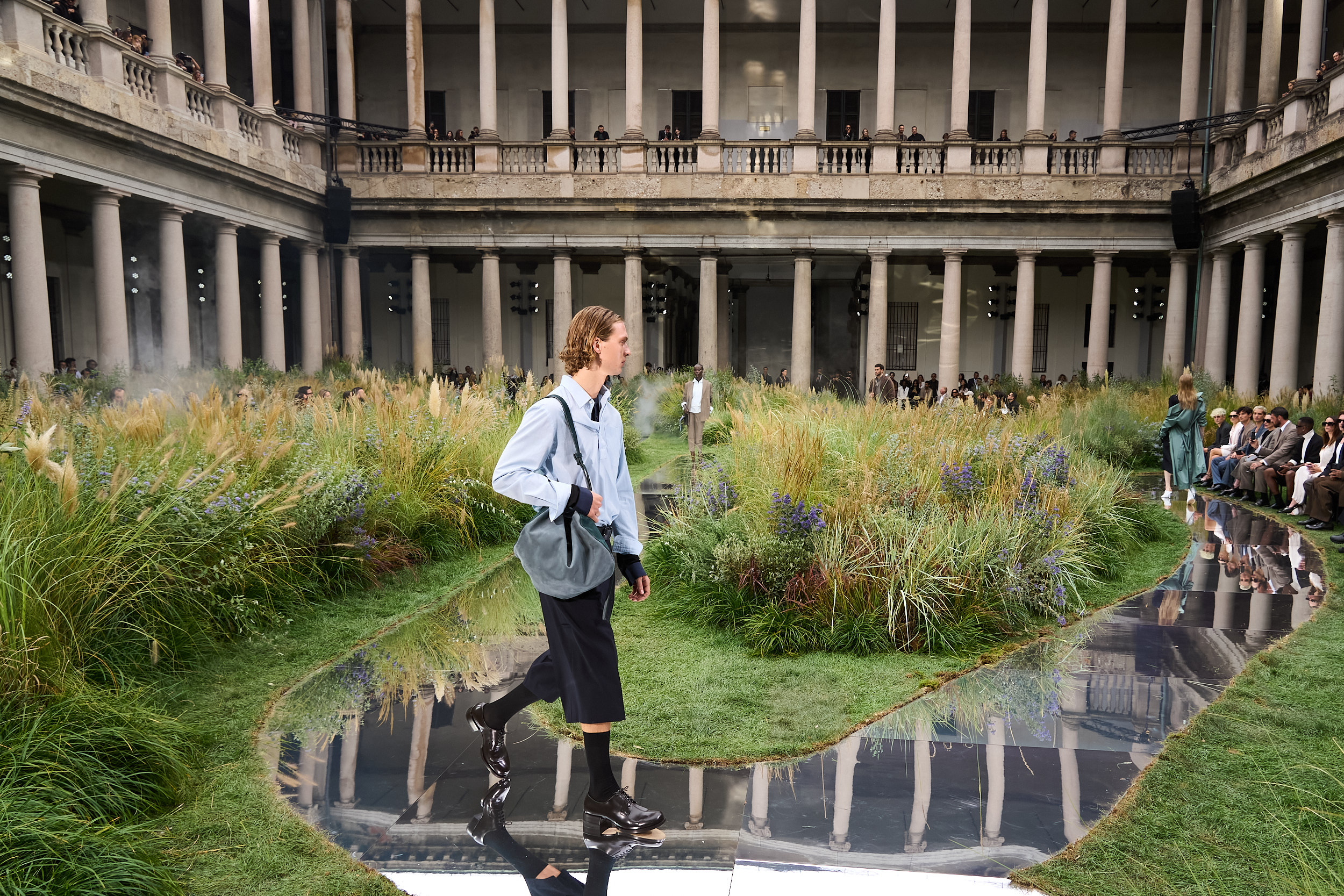
I wish everyone could have taken off their shoes [and walked on the grass]…it’s about grounding, as it’s a moment in fashion where everything has to reflect what is going on…and it’s a good moment”
Marco Falcioni, creative director, BOSS
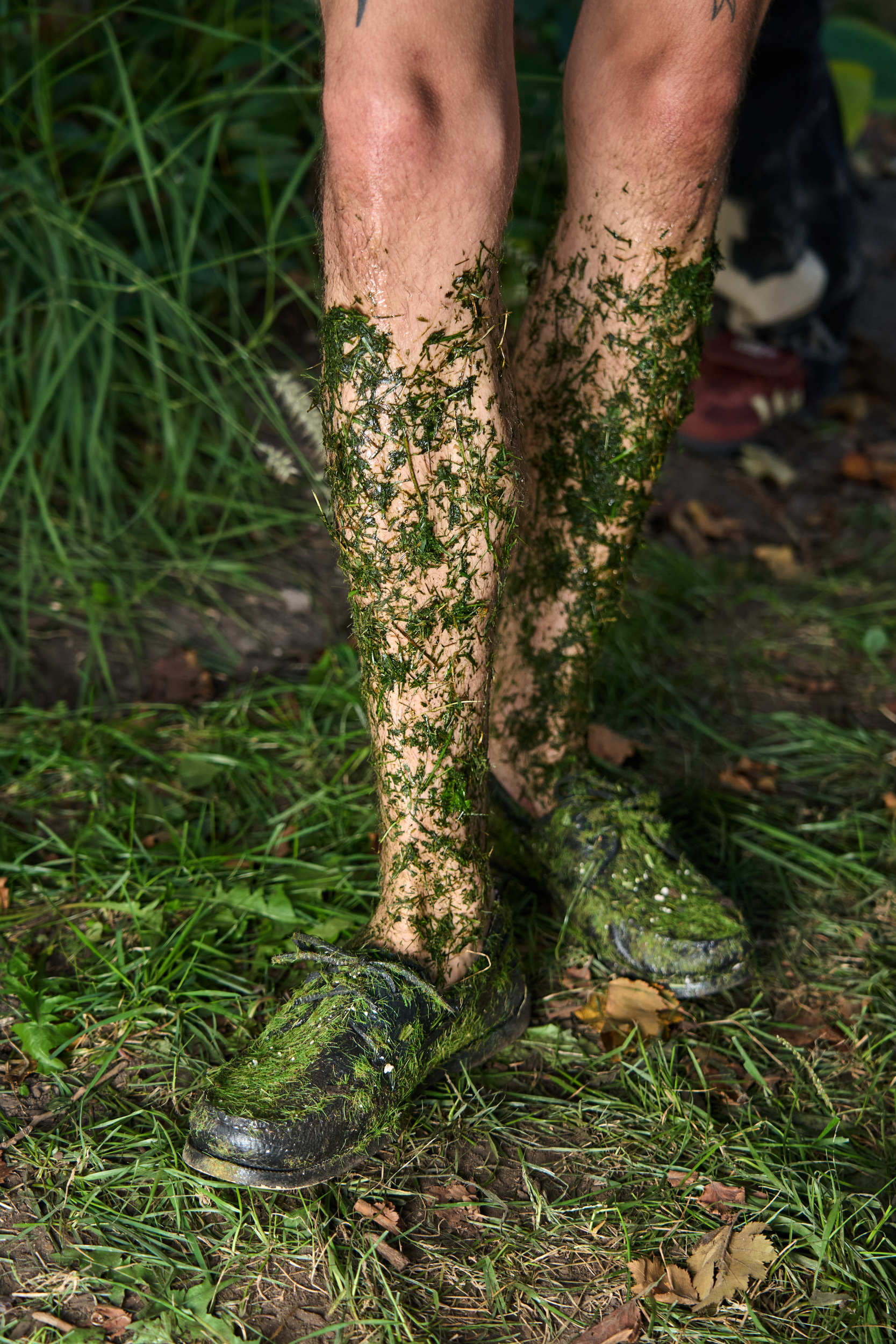
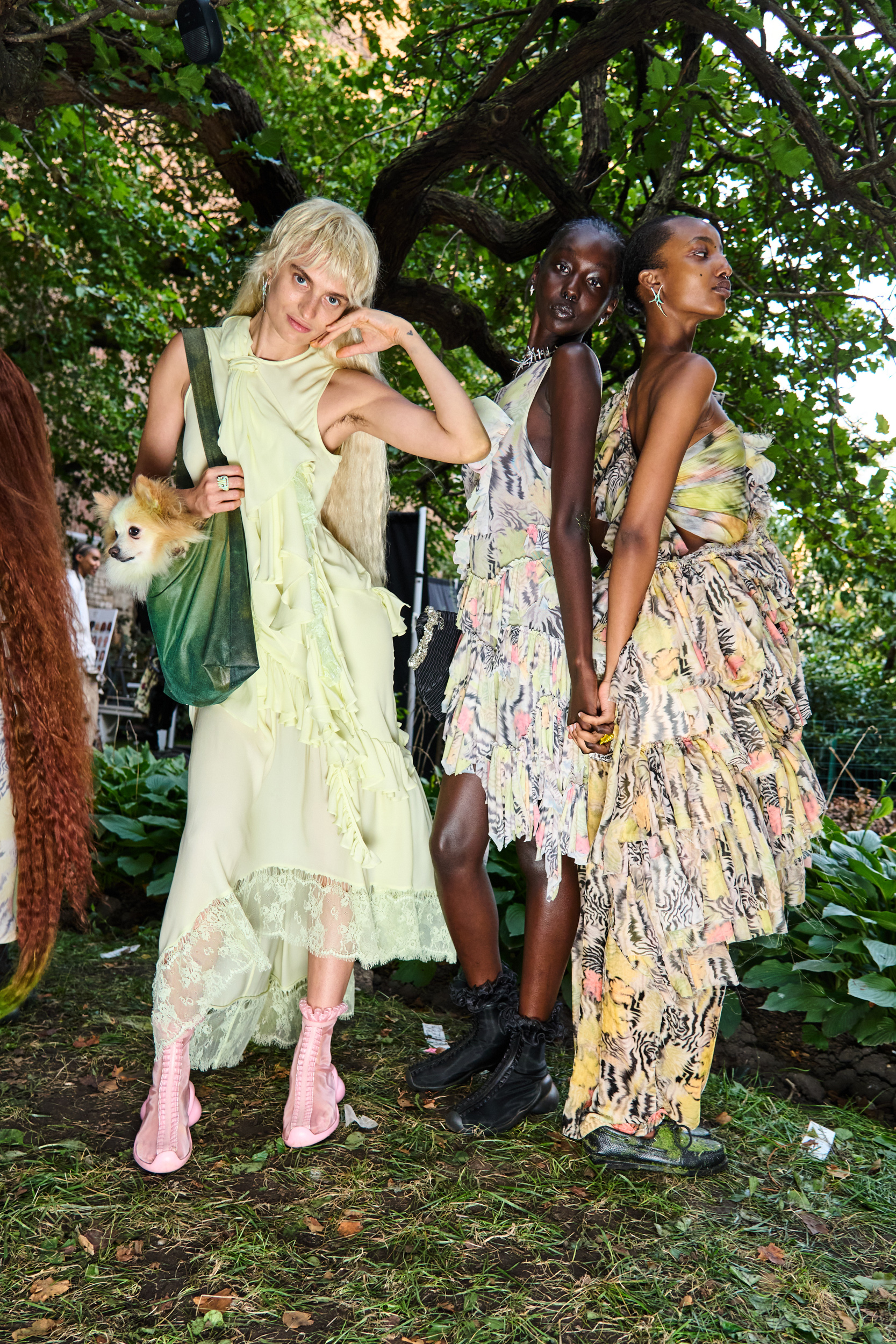
Chanel, despite the house still searching for a creative director, made a welcome return to the Grand Palais, the scene of so many of its most memorable shows under Karl Lagerfeld’s tenure, where once a replica rocket launched during the finale of the fall 2017 show. Contributing €25 million to its restoration, completed in time for the Paris Olympics, the set played host to one of the brands more inclusive shows by the creative studio, featuring models Jill Kortleve, Alva Claire, and Ajok Daing. The main event was the giant birdcage which took pride of place and was reminiscent of the cage used in the 1991 Coco fragrance campaign starring Vanessa Paradis. This time Chanel ambassador, actress, and singer Riley Keough took the starring role as the caged bird, swinging on a perch while the models walked around her. Demna at Balenciaga invited showgoers to a velvet-walled black box with a single prop. In a throwback to his childhood, where his love for fashion was ignited at his grandmothers dining table “making fashion shows” out of cardboard (as he said in his show notes), a runway-length version of a dining table was flanked by editors, ambassadors, and VICs who watched the show from their dining chairs with a pantashoe-up view.
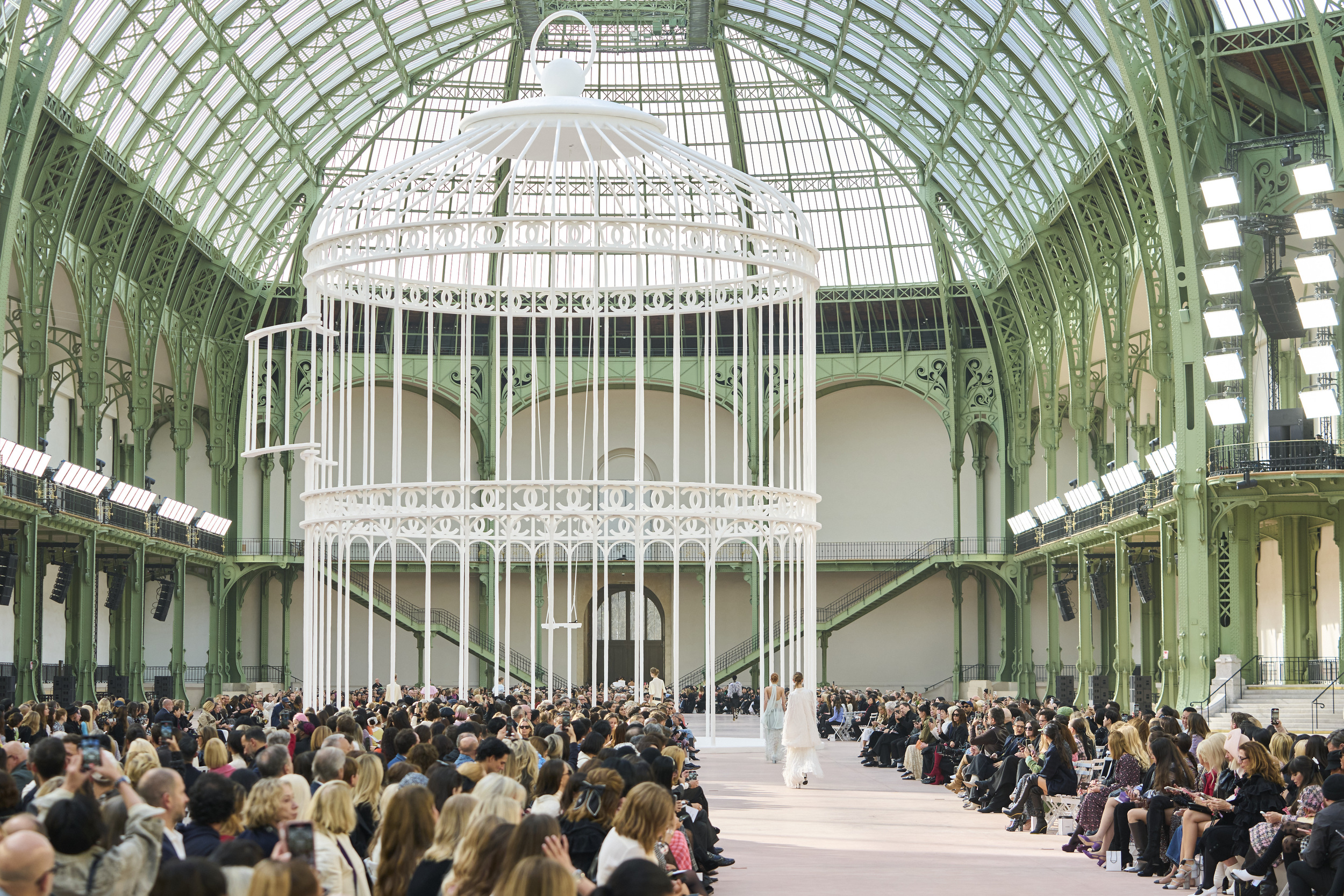
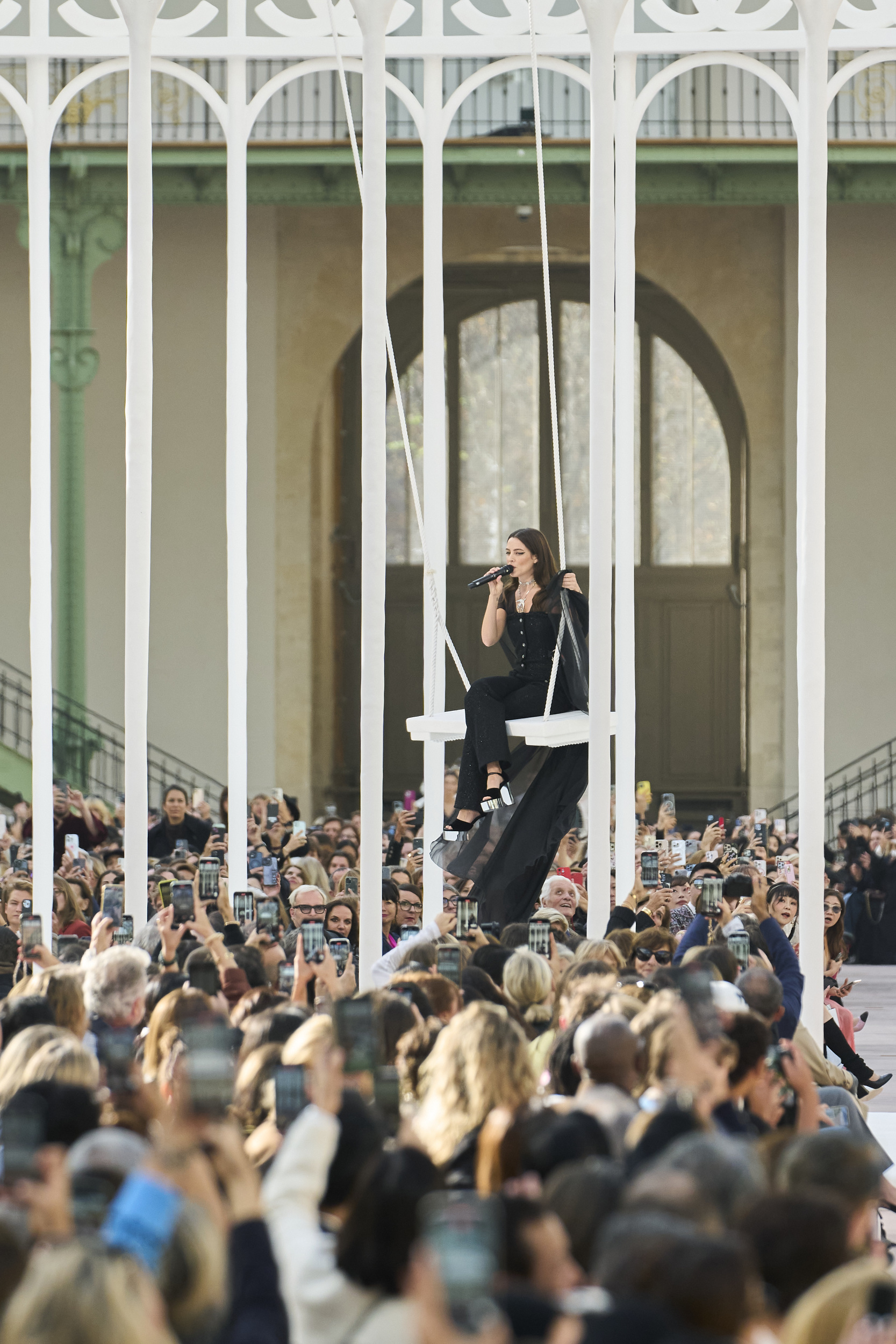
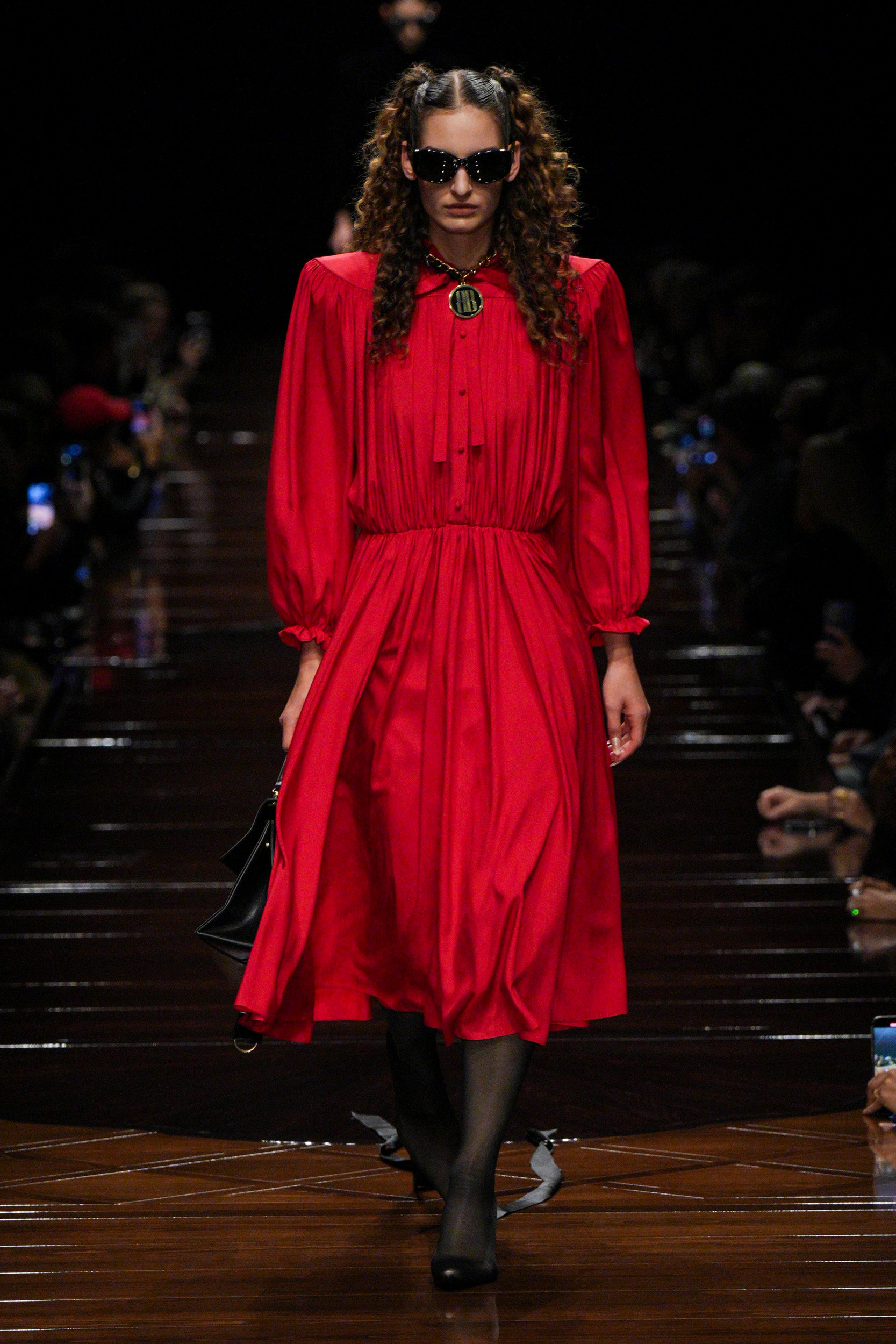
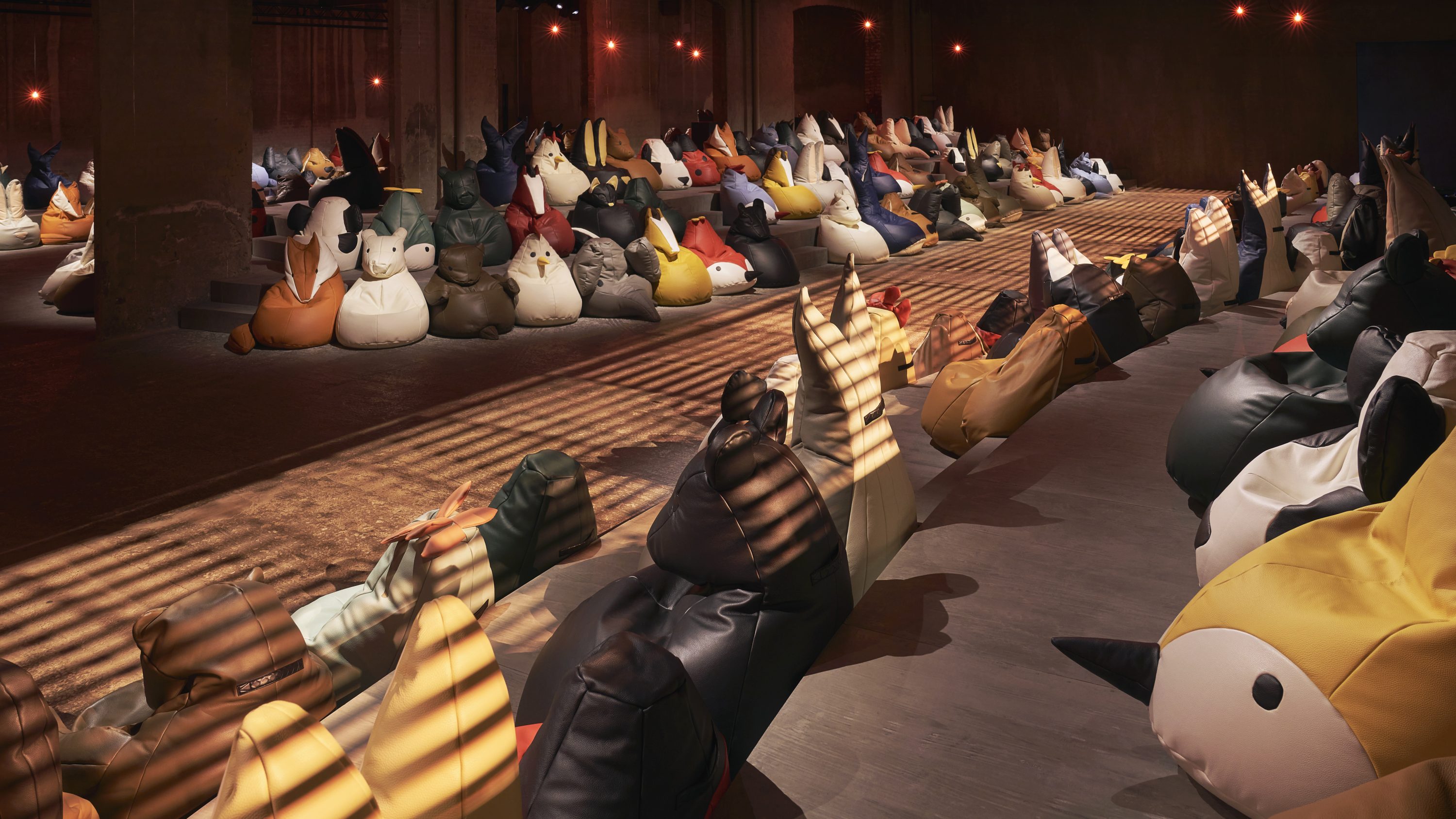
Then it fell to Coperni’s Sébastien Meyer and Arnaud Vaillant to end the season on a happy high, demonstrating how hard-wired they are into creating meme-worthy moments. For the first time in its history Disneyland Paris hosted a fashion show and satisfied every attendees inner-child as they picked up mouse ears (and rode on Space mountain at the after-party), before heading up Main Street for the show which took place in front of Sleeping Beauty’s Castle as the backdrop. The show itself featured both princesses, villains, Kylie Jenner, and a 3D printed, recyclable silicone swipe bag made using Gravity Free Manufacturing™️ from Rapid Liquid Print. There were many references to girlhood (mirroring the boyhood trend we saw emerging from the men’s shows in June) and childlike dreams – from ballerinas at Ferragamo to animal bean bags as show seating at Bottega Veneta – and Meyer and Vaillant answered the need for fashion to provide a sense of wonderment and magic again and closed the season which felt tentatively optimistic, on a high note.
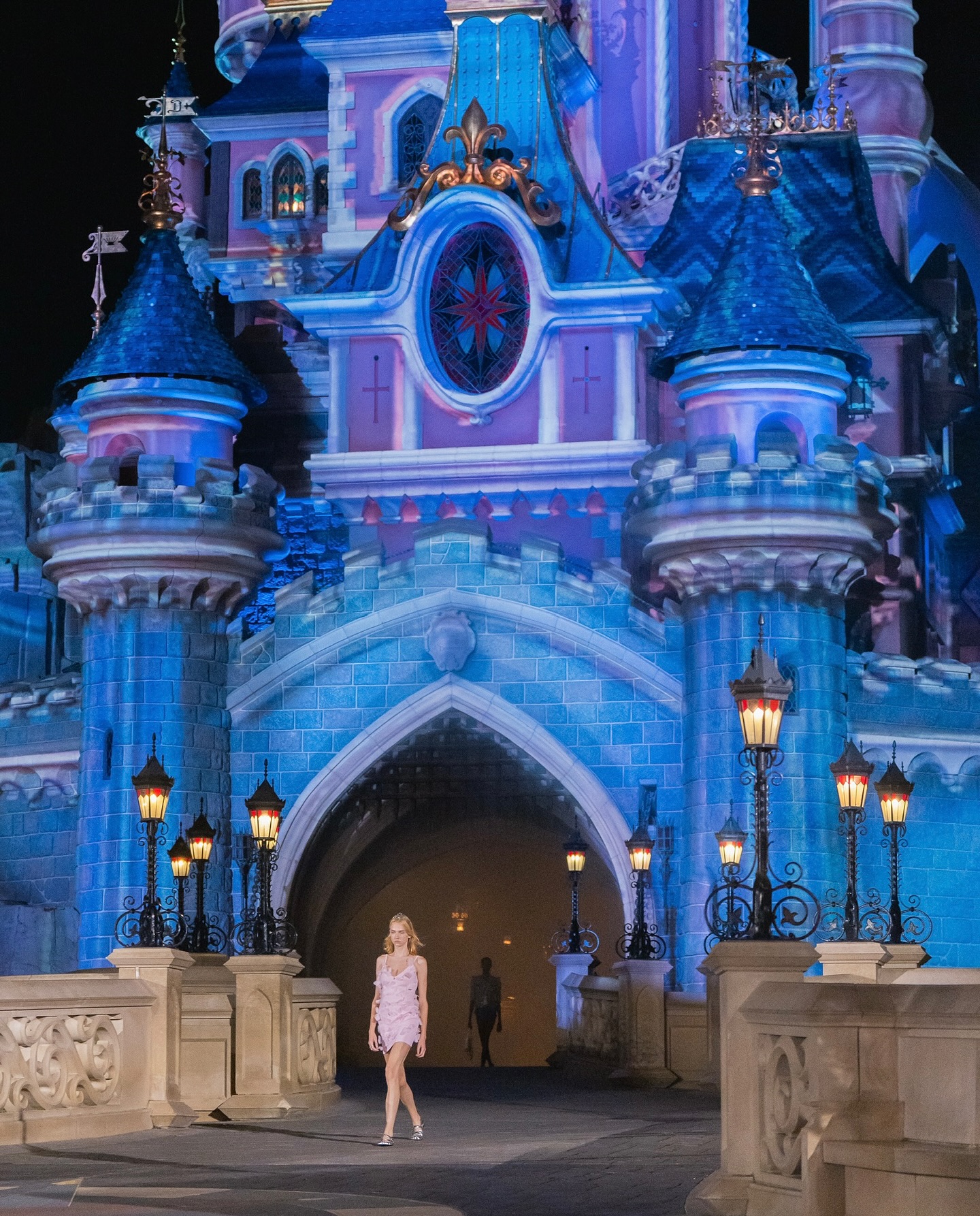
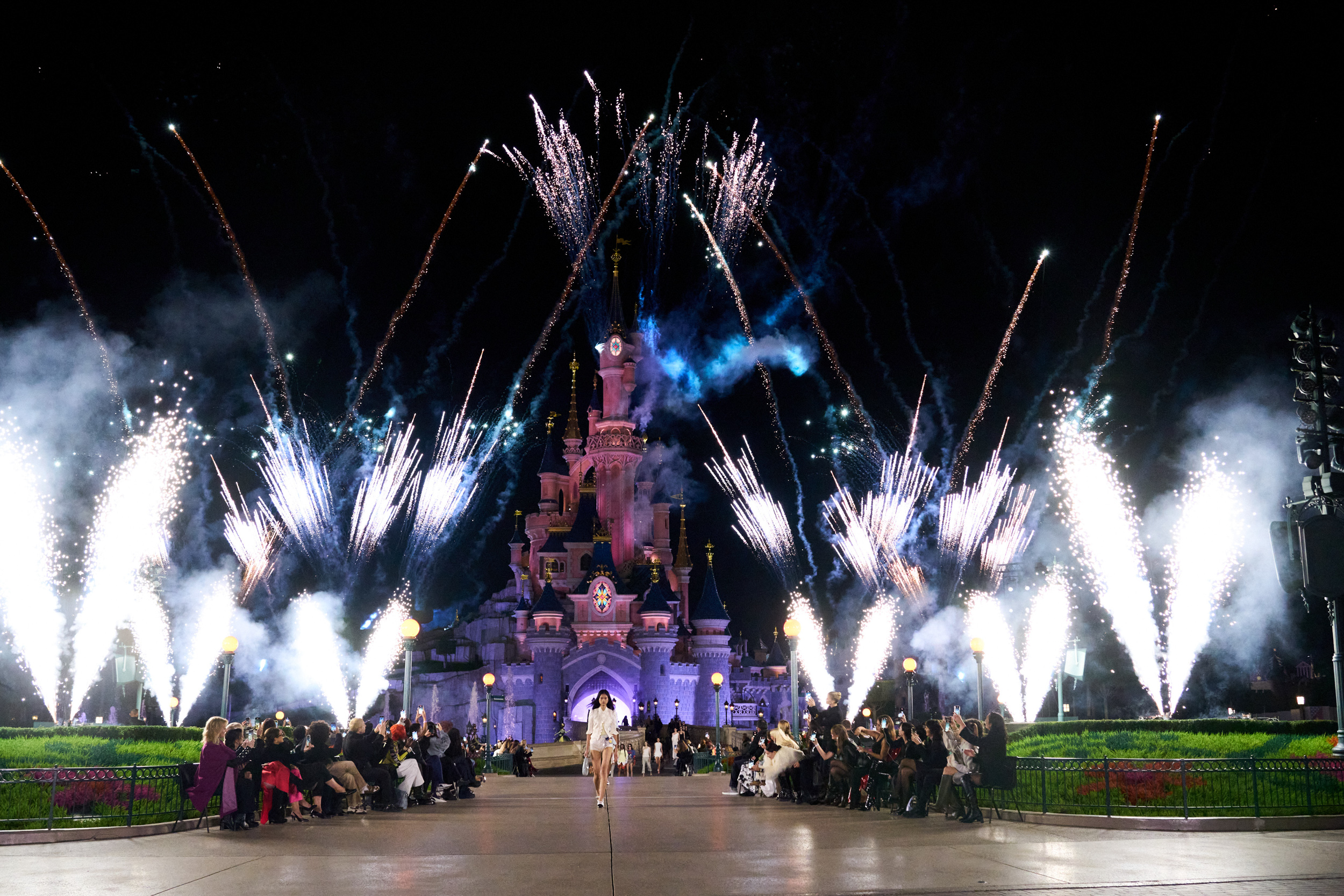
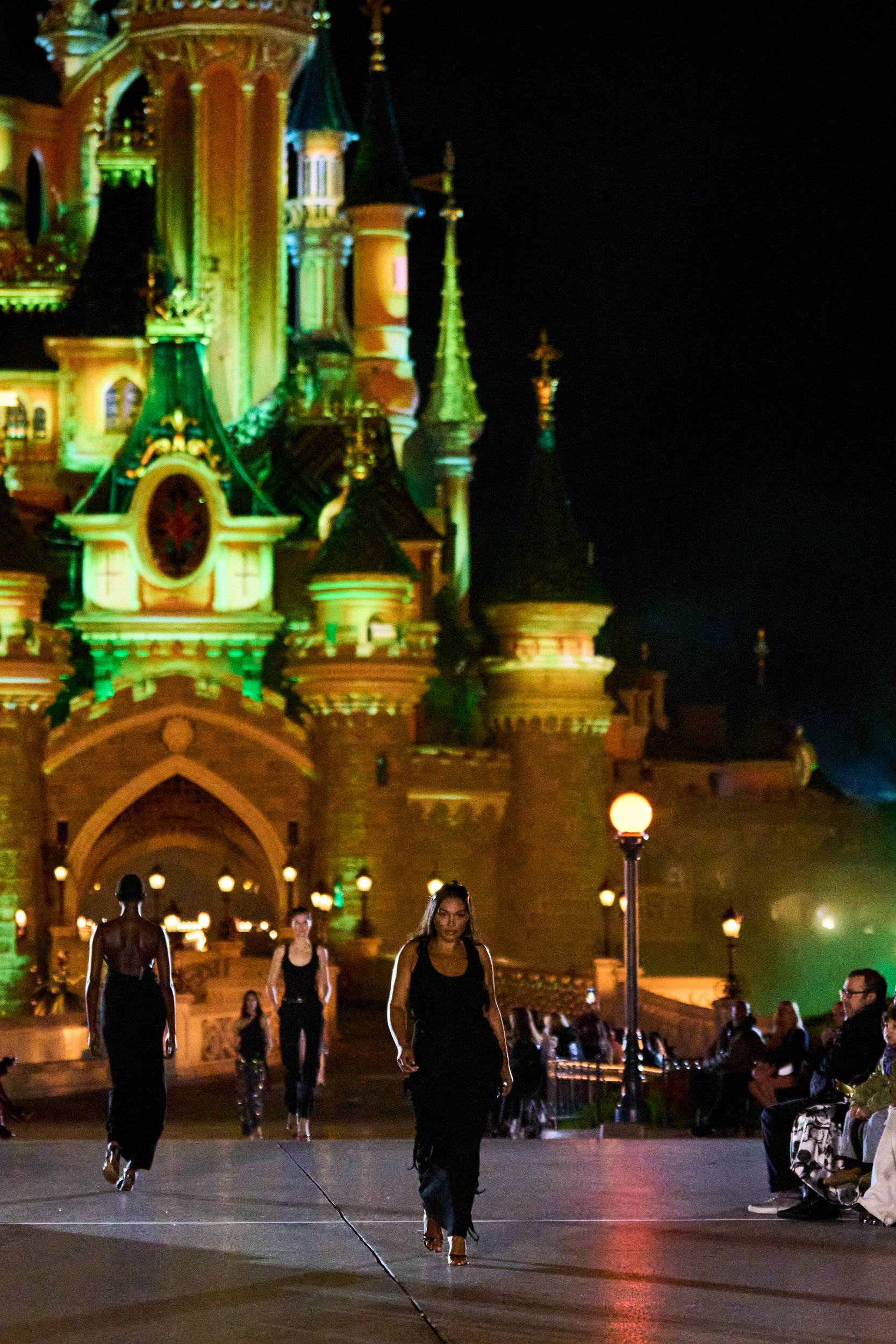
The Names Futuring Fashion
Across the spring 2025 season it was encouraging to see a broad range of new generation talent making their presence felt on-schedule. Carving out niche’s for themselves and developing signature style’s to set them apart.
The key names-to-know who are set to shape the future of fashion include:
1. Standing Ground: Already a must-see designer on the London fashion week schedule, Micheal Stewarts otherworldly evening wear has seen him carve out his own lane in an often-ignored category by British designers.
2. Uma Wang: Not by-any-means emerging, but the Chinese designer Wang Zhi is making her presence felt on a global scale, from starting her label in 2009 she became the first Chinese designer to show on the official European fashion week schedule. Her use of neutrals and sculptural silhouettes forge a link between her heritage and culture.
3. Zomer: Meaning ‘summer’ in Dutch, Zomer was founded by stylist Imruh Asha and designer Danial Aitouganov. The duo has a child-like approach to their designs use of colour, and application of mixed-media embellishment, bringing back a sense of joy to fashion, at a time when it is desperately needed.
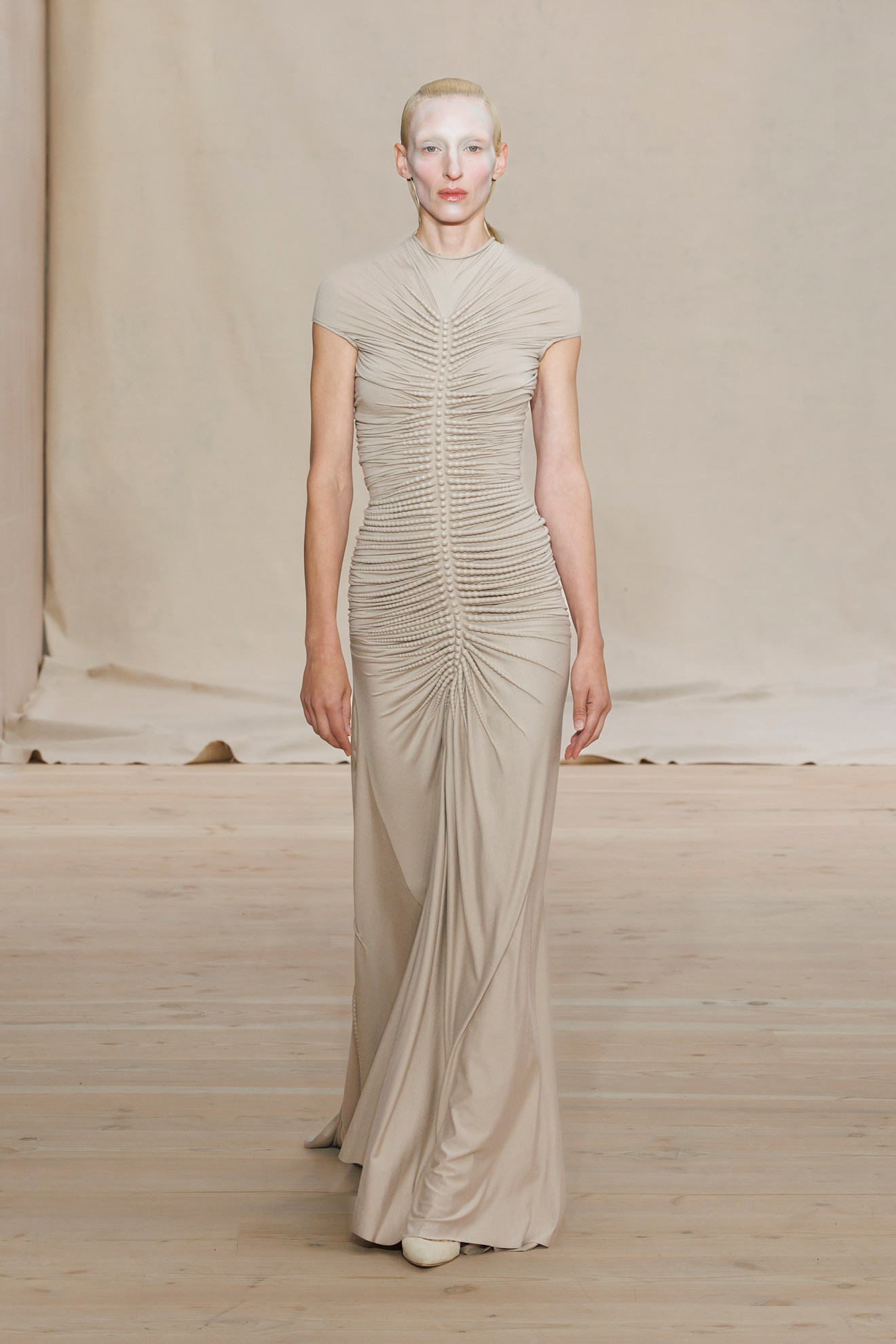
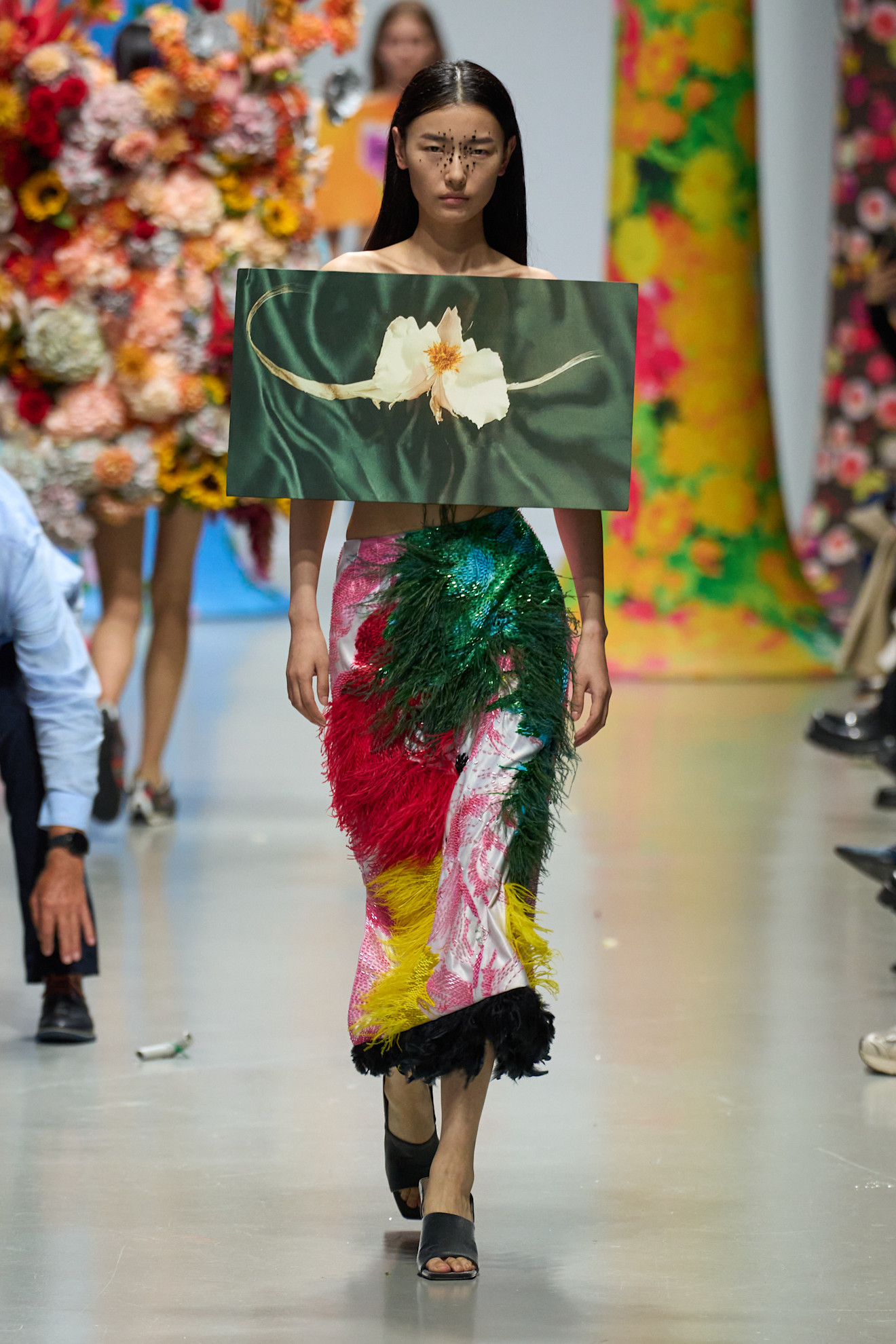
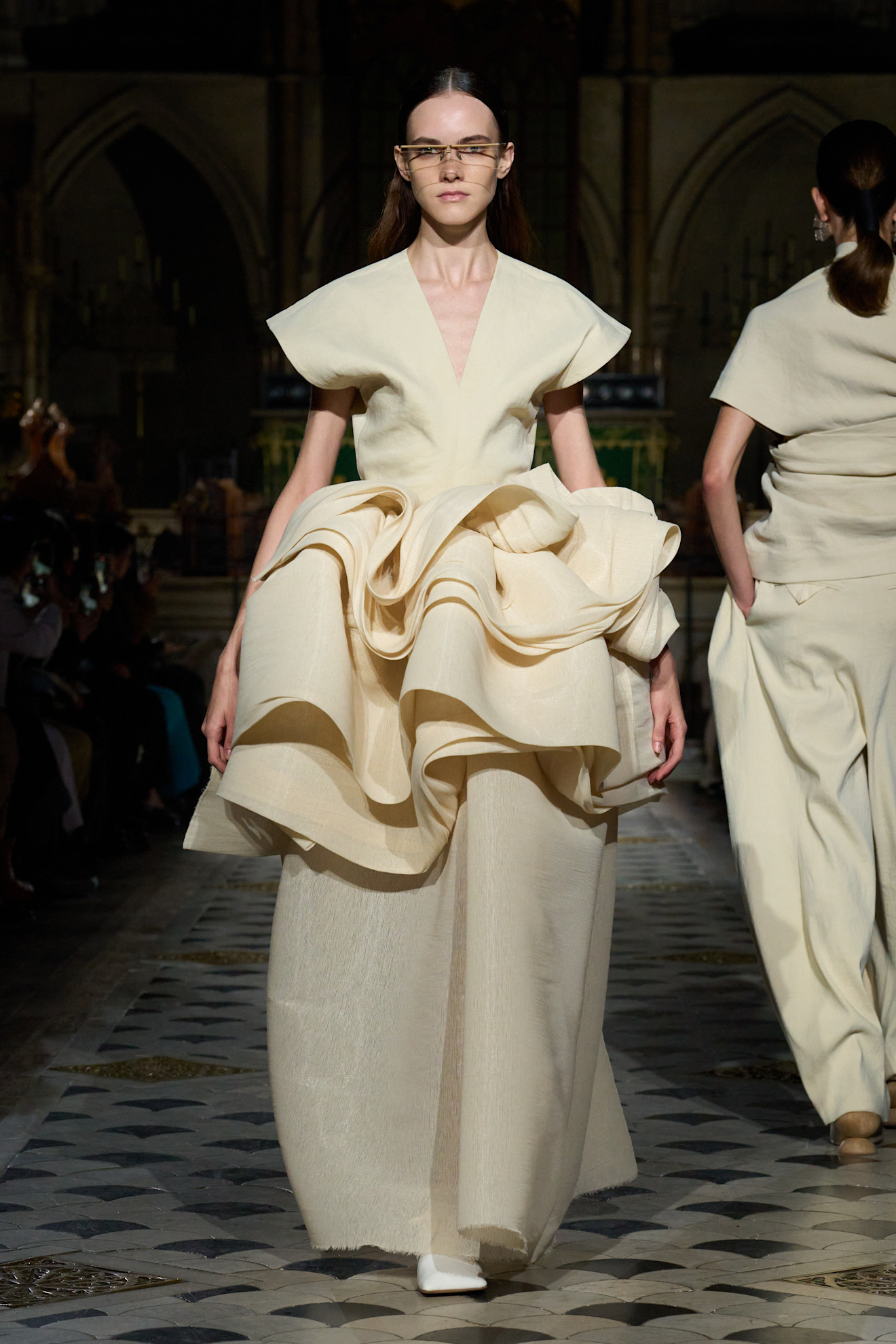
4. Grace Ling: New York designer and CFDA/Vogue Fashion Fund finalist debuted in the city before moving to the Paris schedule, and keeps her education in performance art and sculpture as the foundation for her designs. For spring 2025 she presented deconstructed decadence on an inclusive runway that included her forward-thinking use of 3D printing techniques for the aluminium breast plates in her opening look.
5. Luis De Javier: Mentored by industry veteran Riccardo Tisci, London-based emerging talent Luis De Javier drew a crowd (despite the rain) during Paris fashion week for his collection which traversed his Spanish roots – matador jackets/hats – and fearless approach to under-dressing.
6. Tolu Coker: A master at re-creating scenes from her heritage for her show-sets (think 70s wallpaper, market stalls, and dark wood dining tables with the ubiquitous fruit bowl), Tolu Coker is a British-Nigerian moving the visual narrative of what African (from the West African region) fashion can be. Honing in on the immigrant experience she paid homage to her mother and the deeply important role her childhood home played in shaping her upbringing, as well as how it doubled as a gathering place for the local community.
